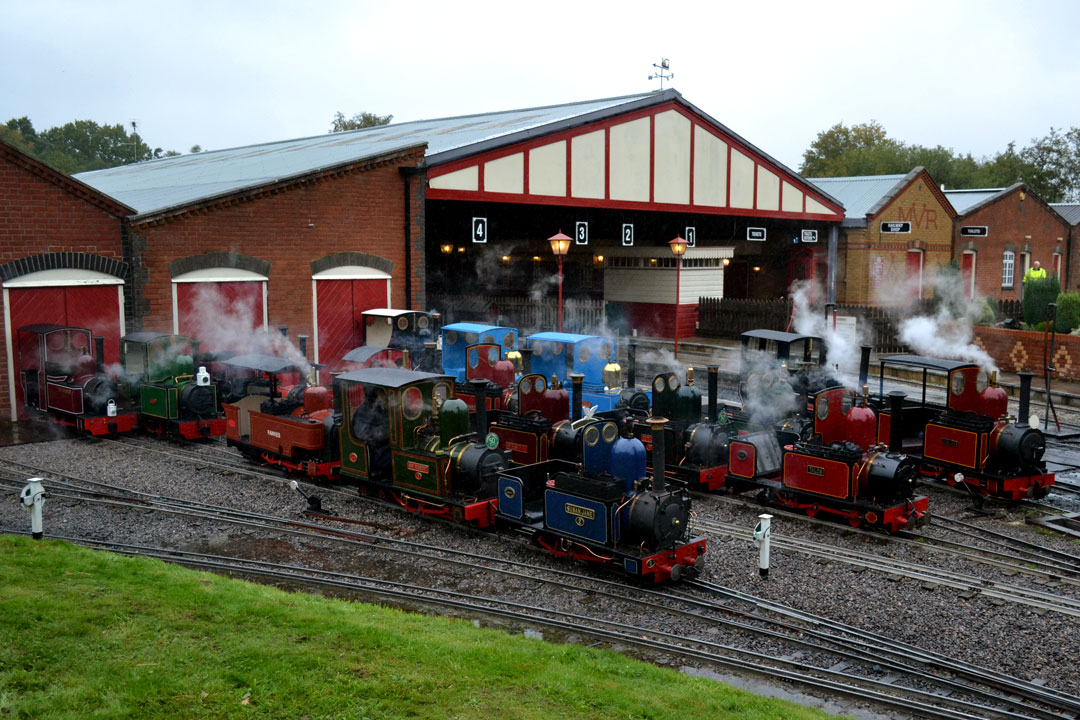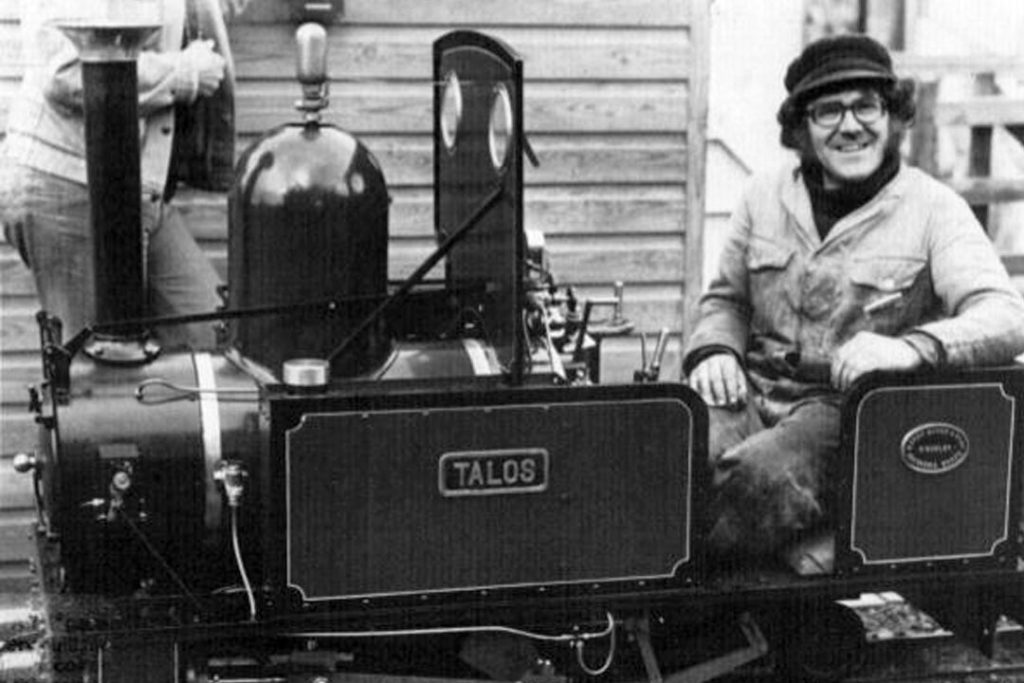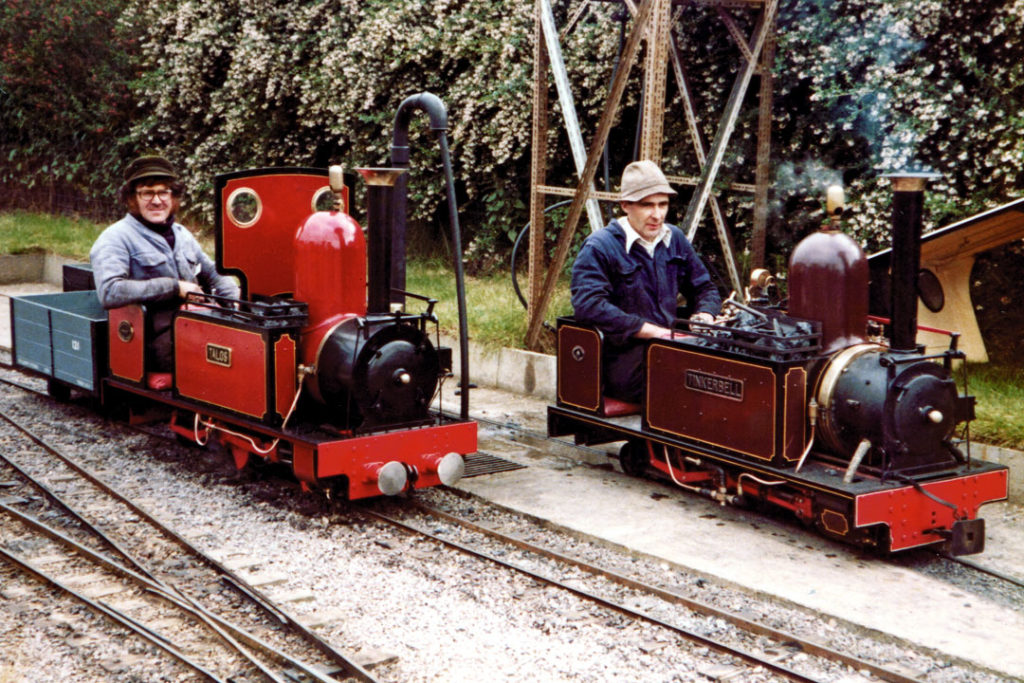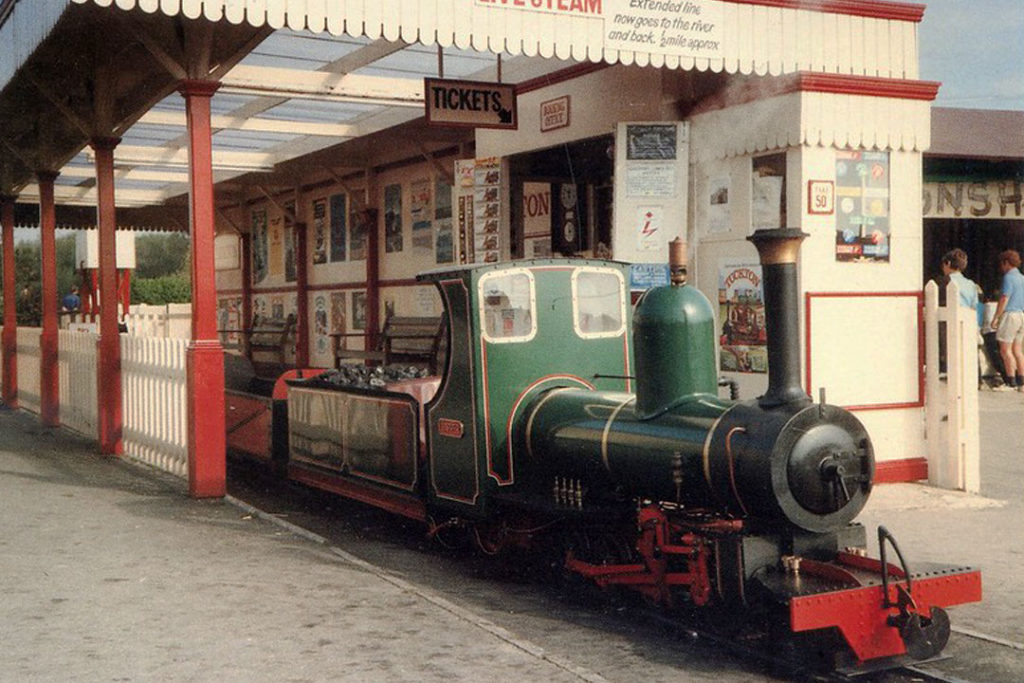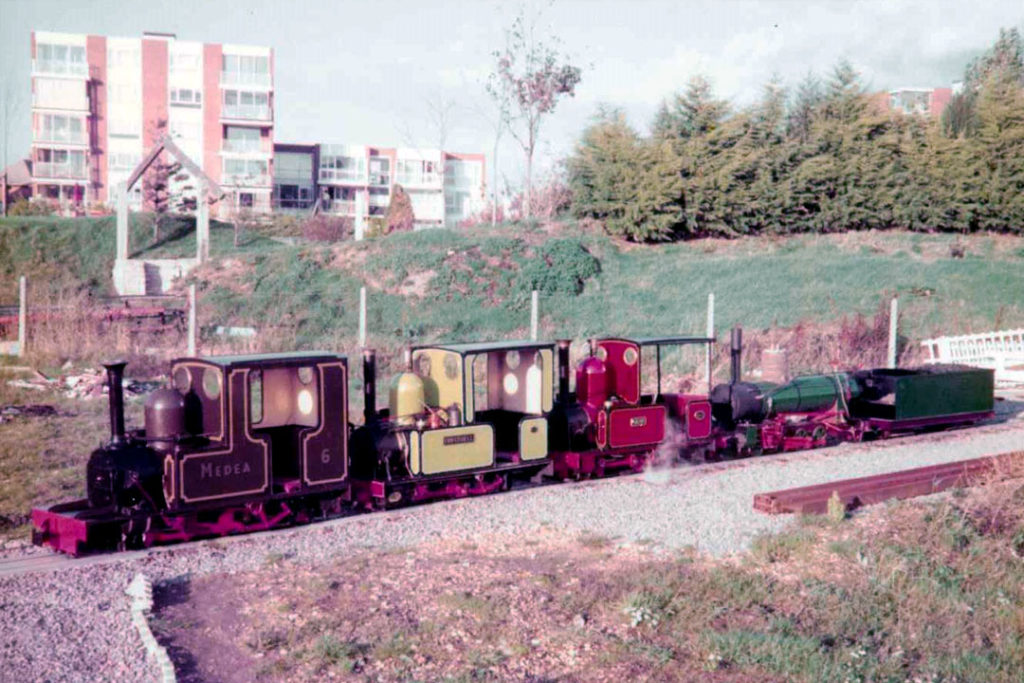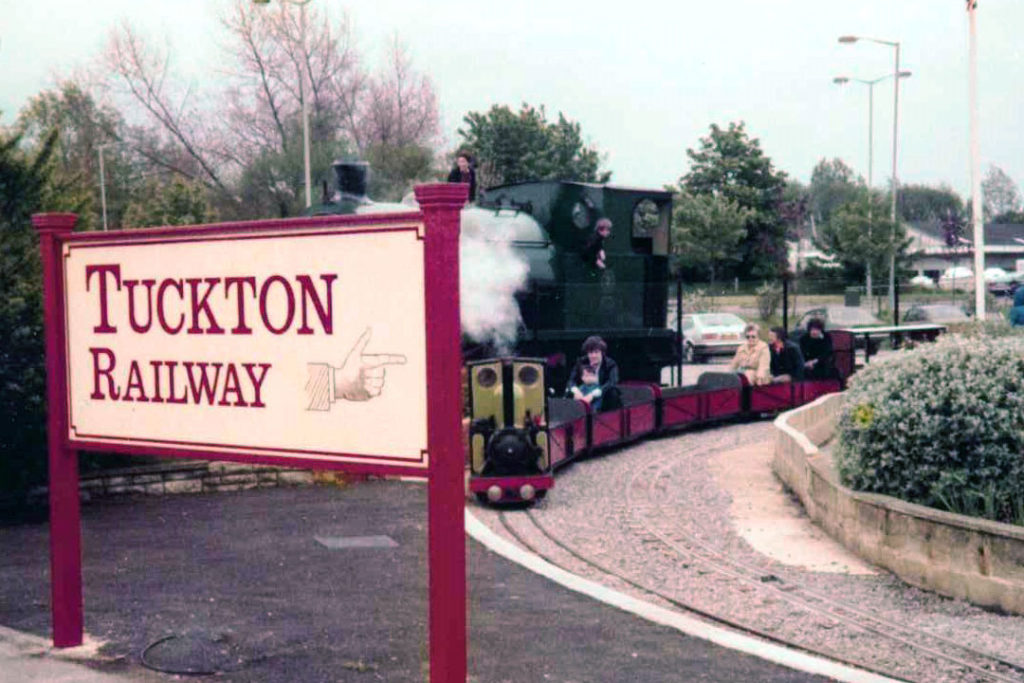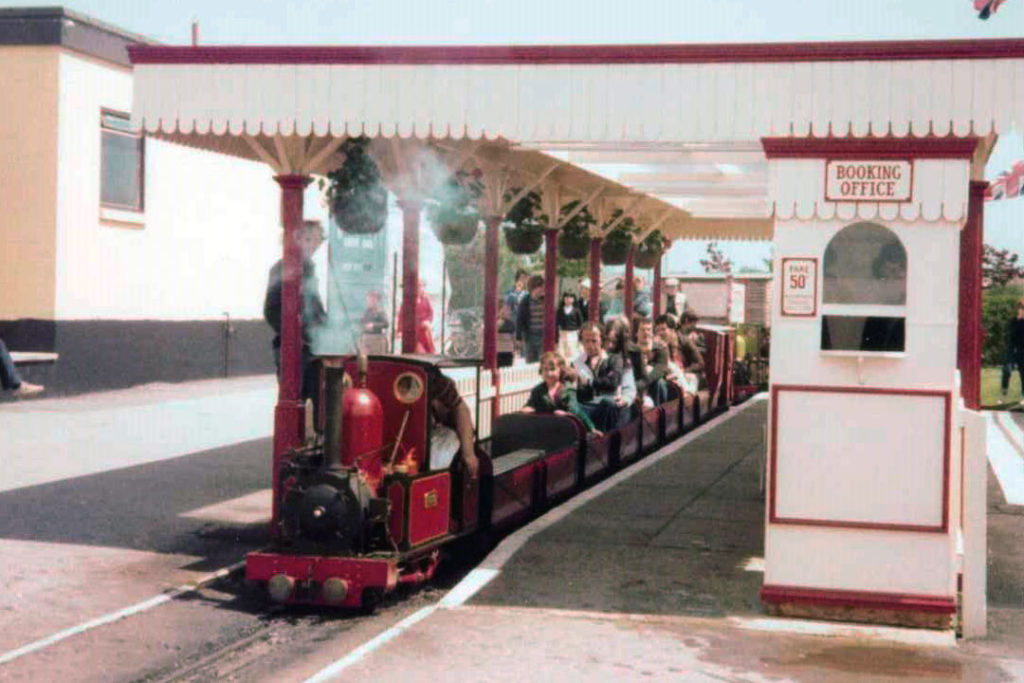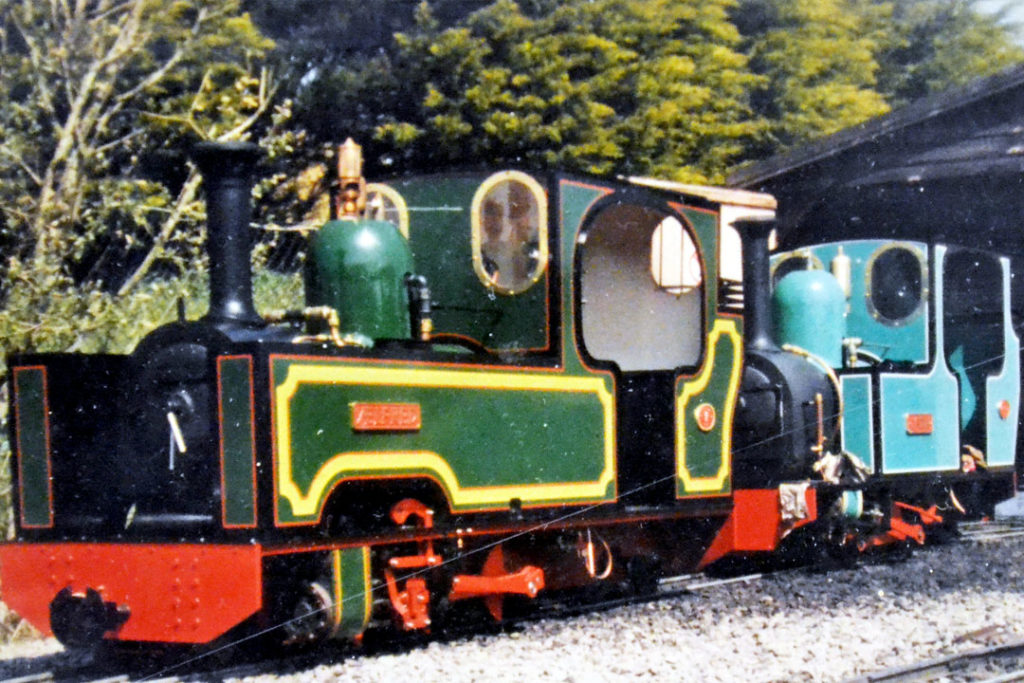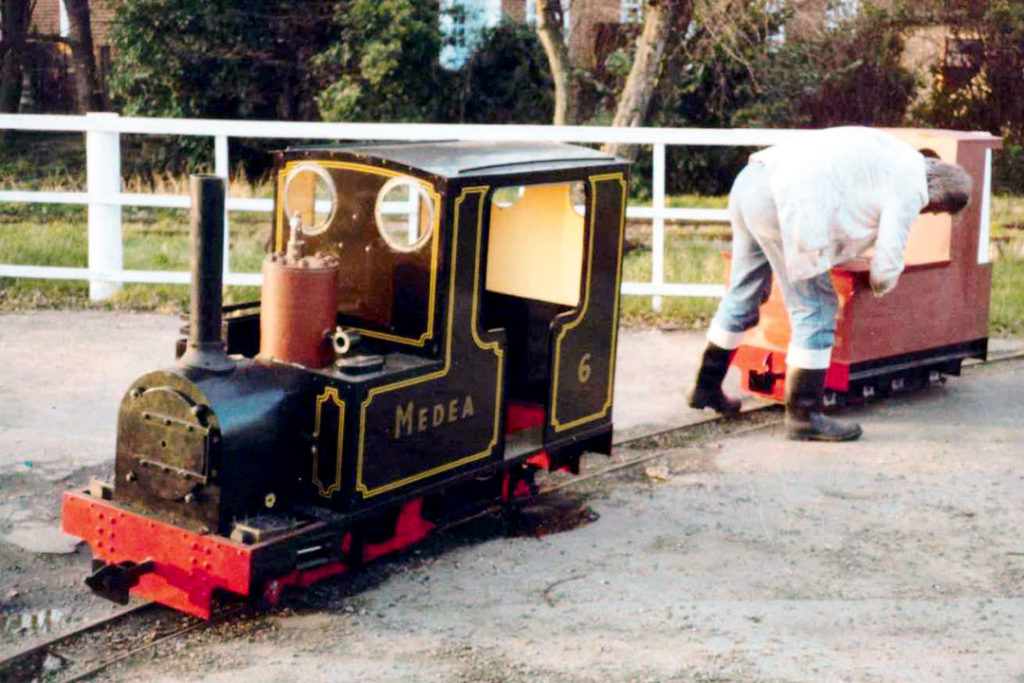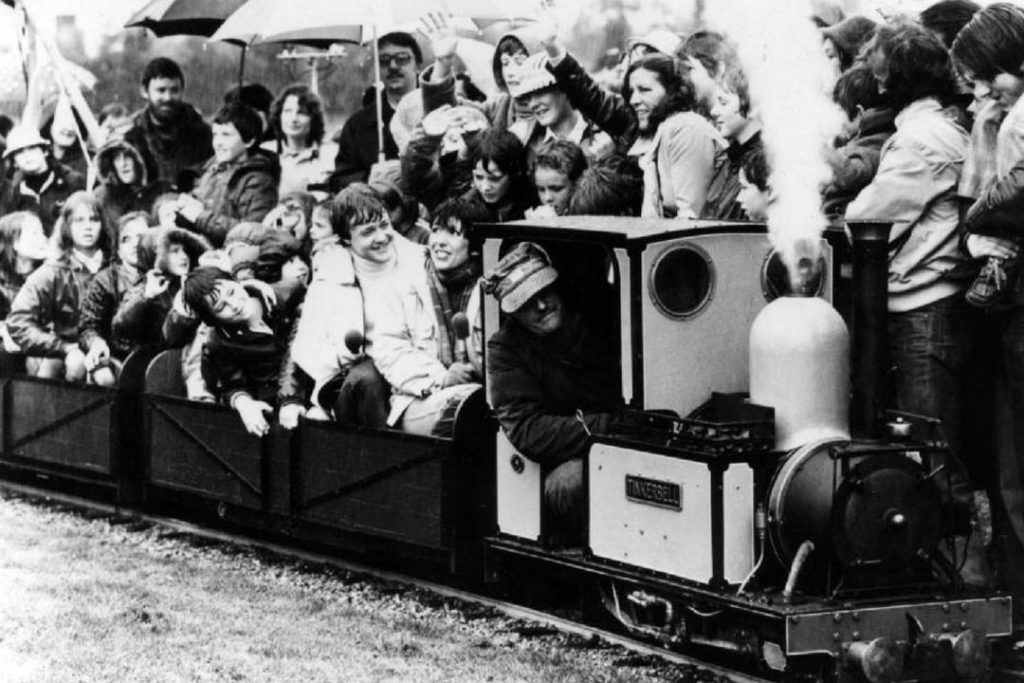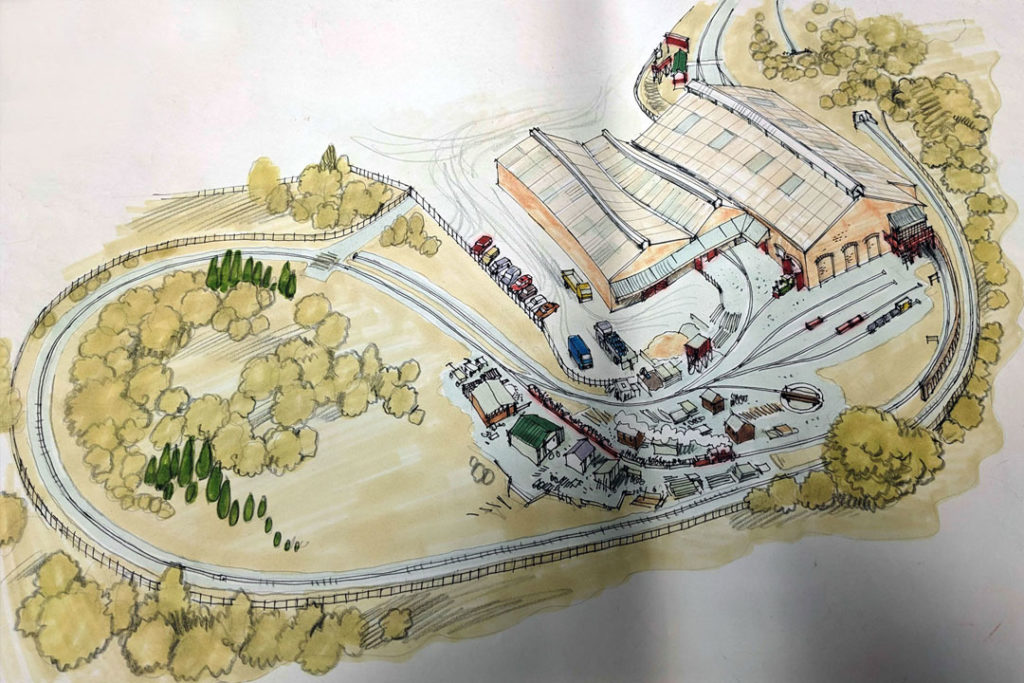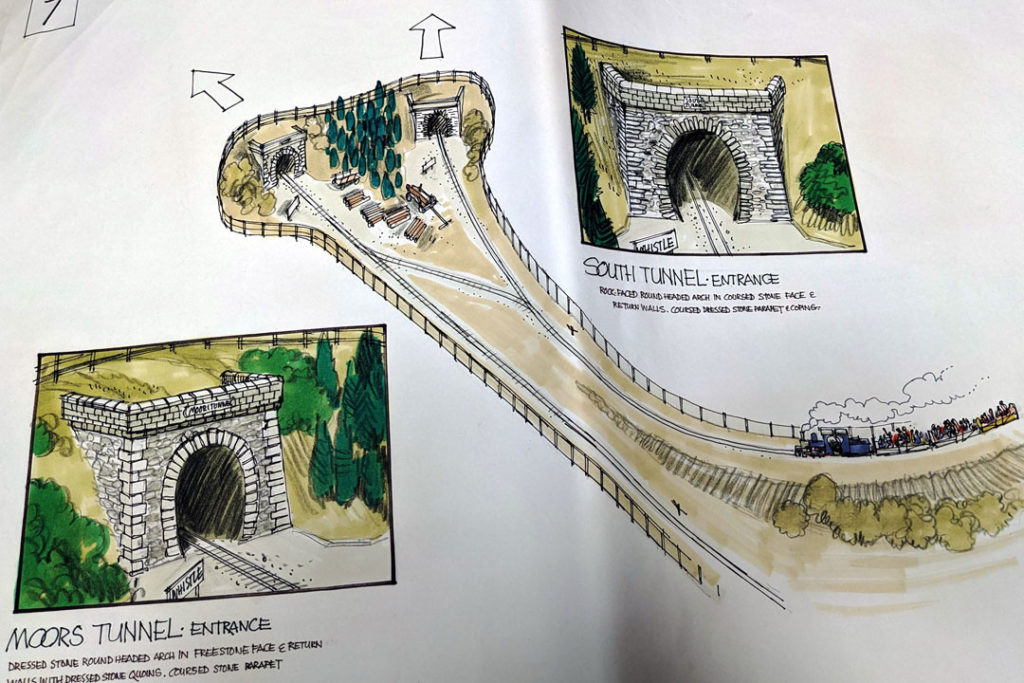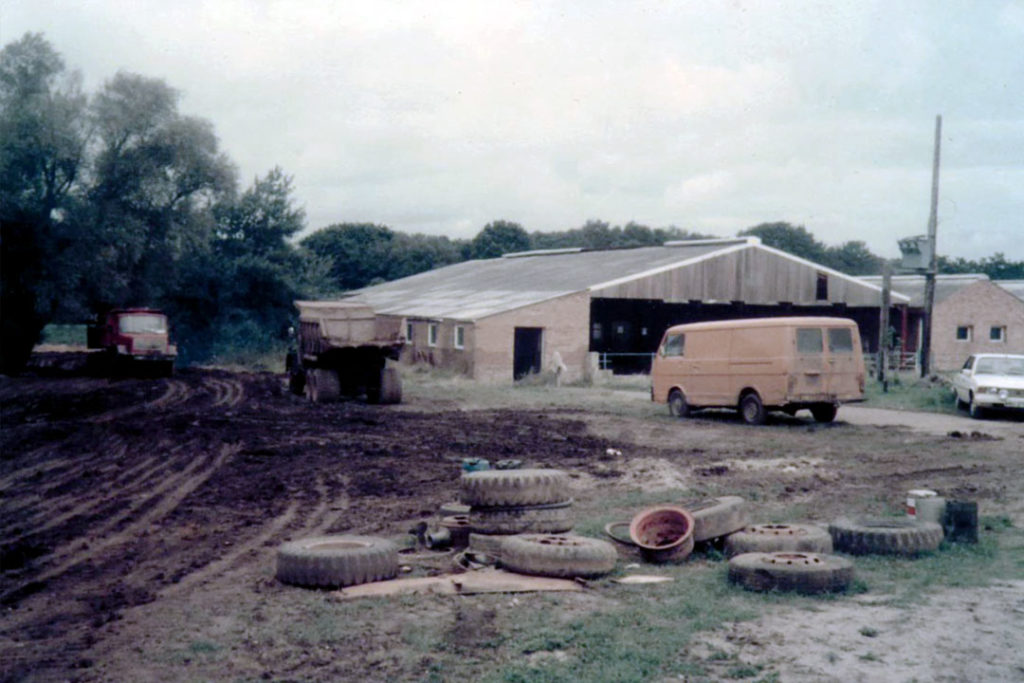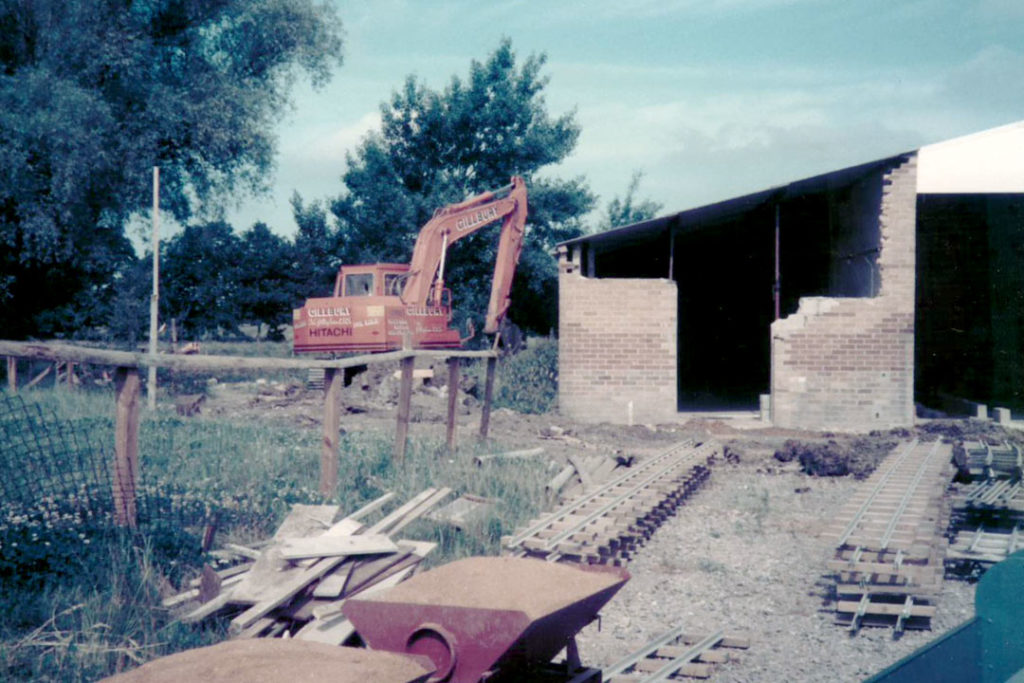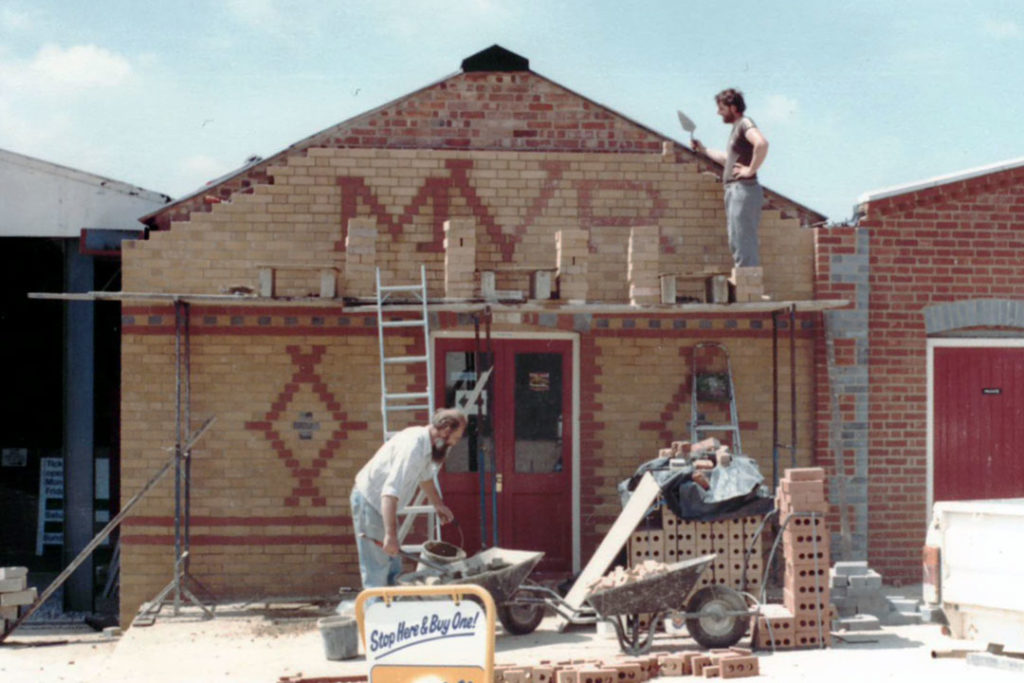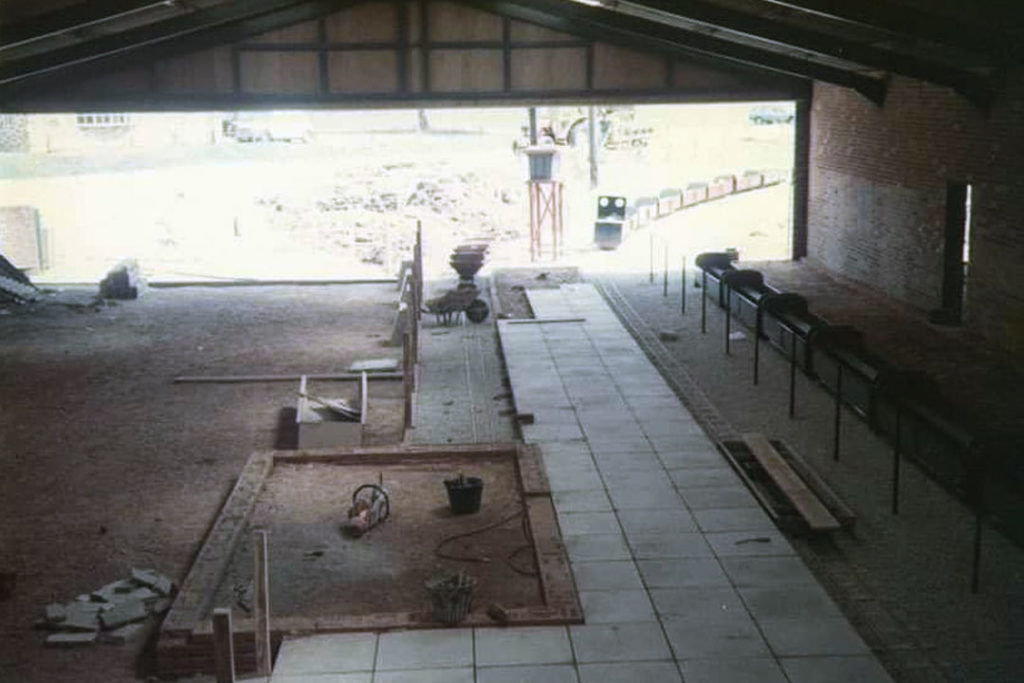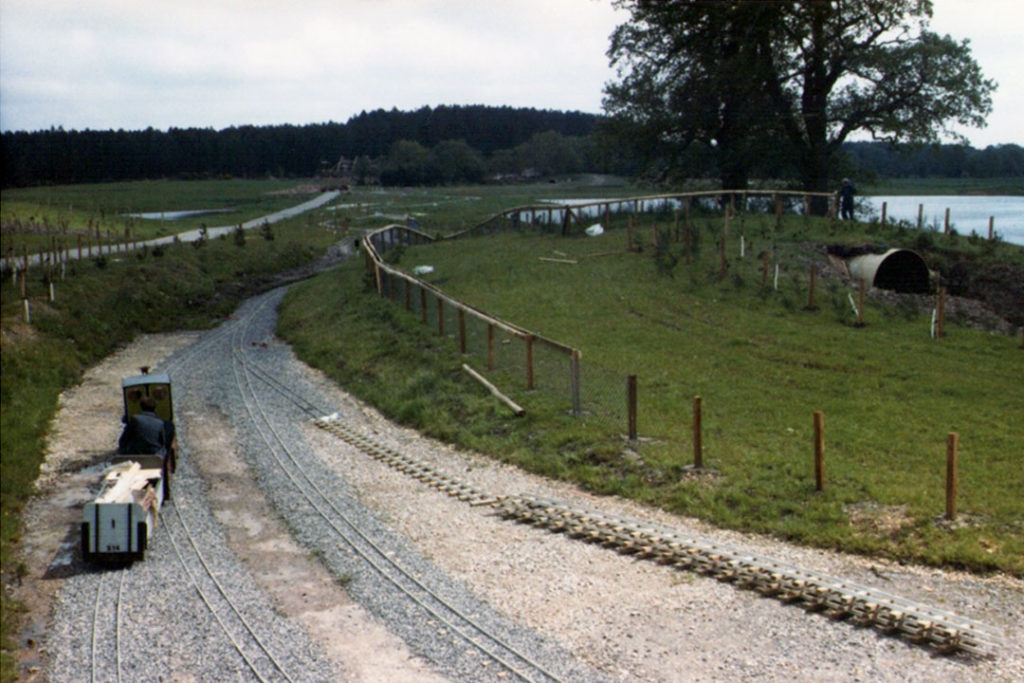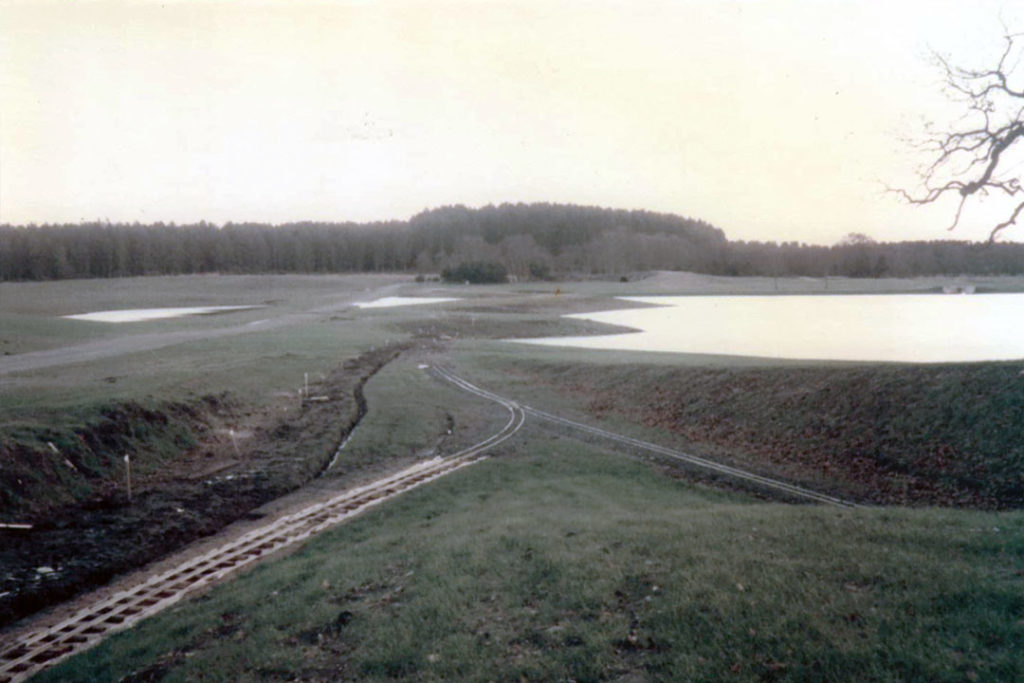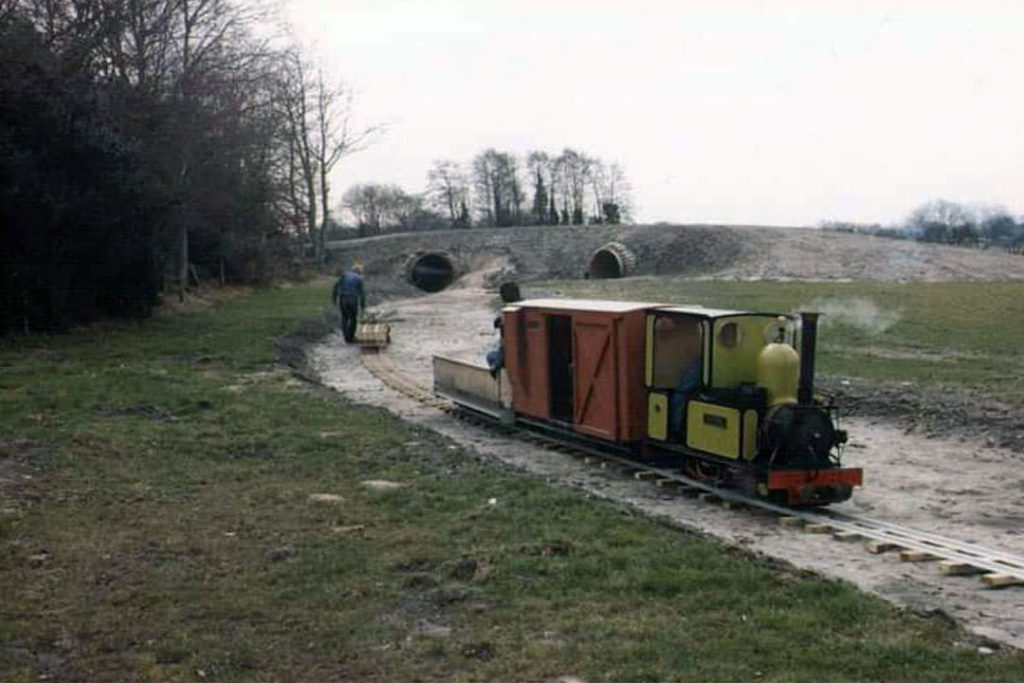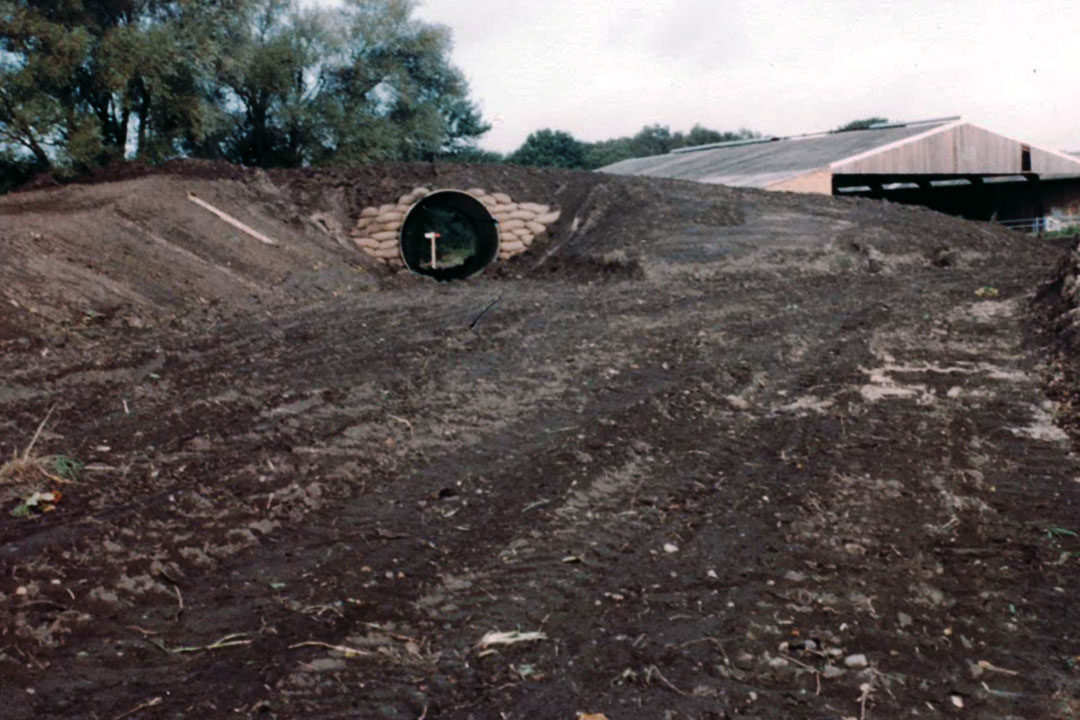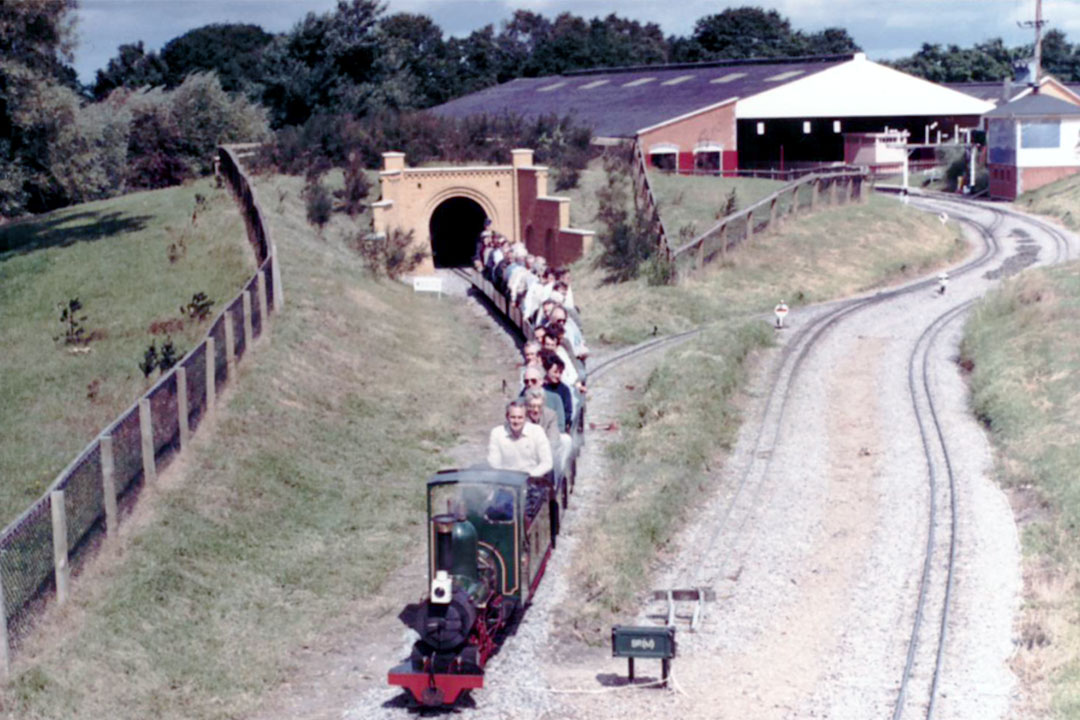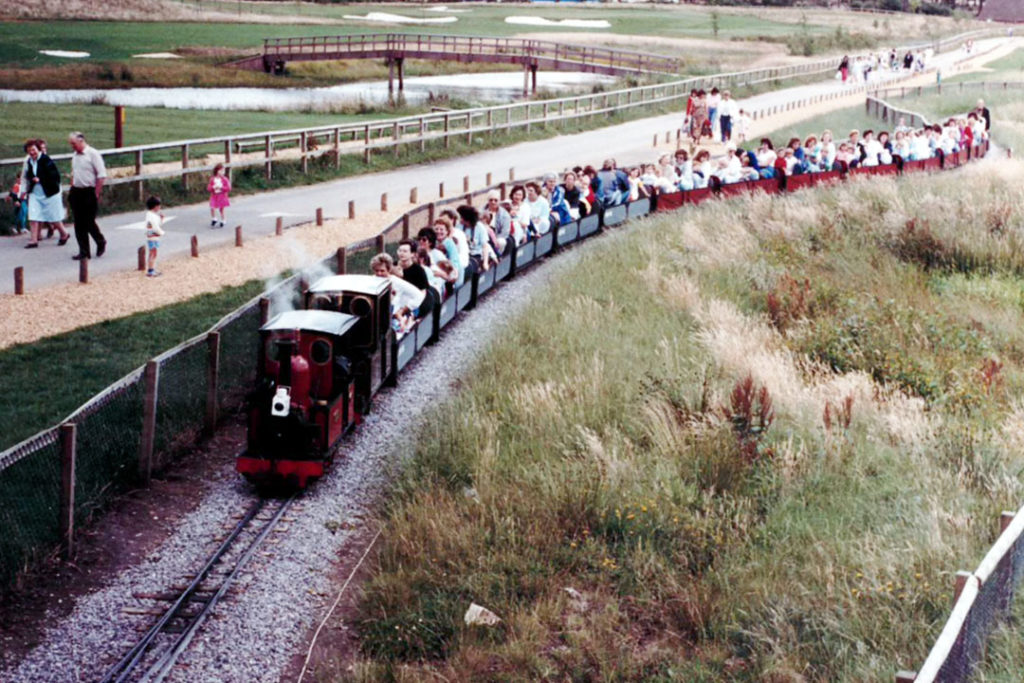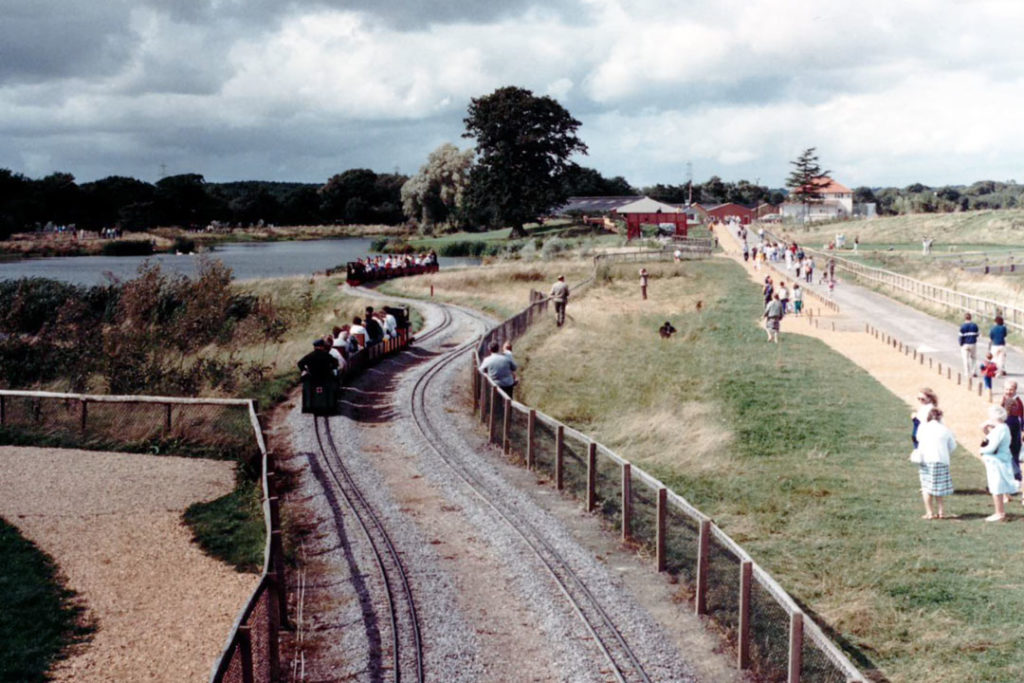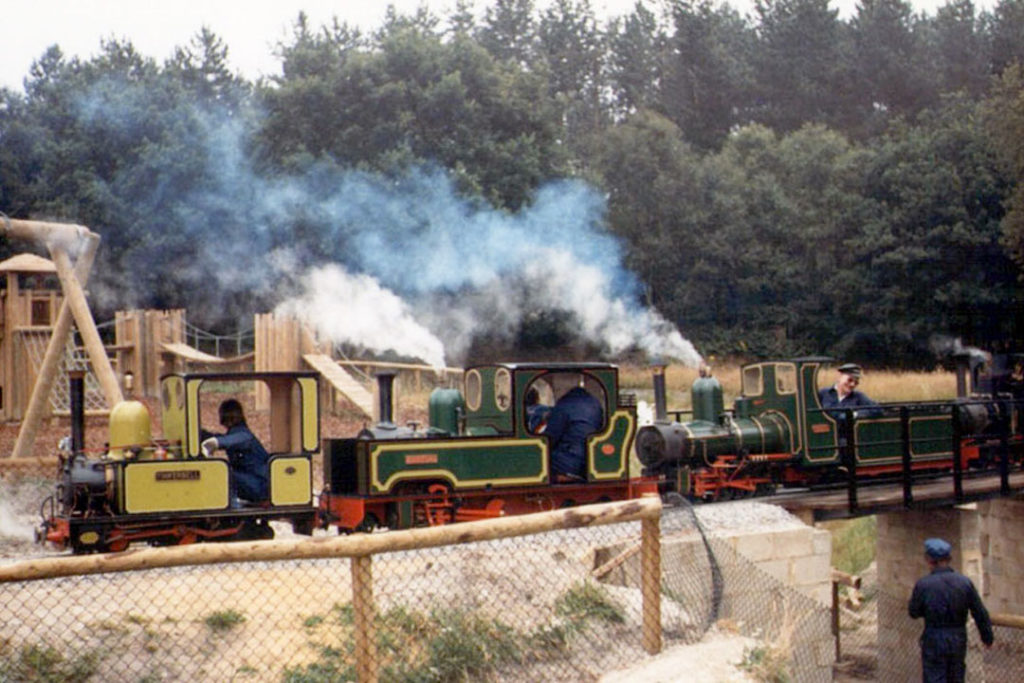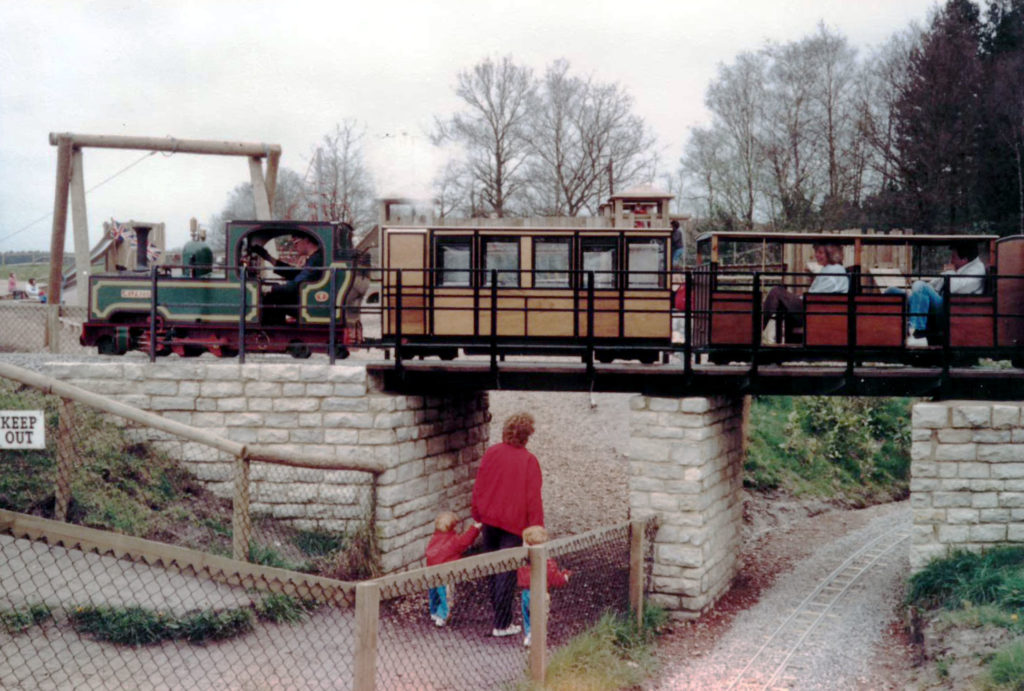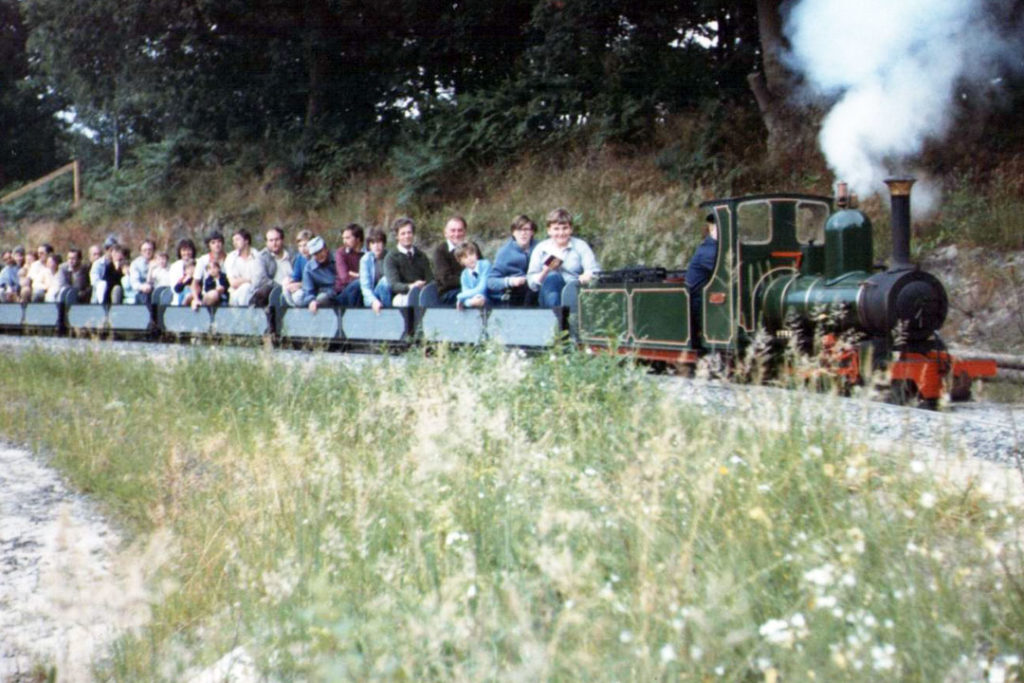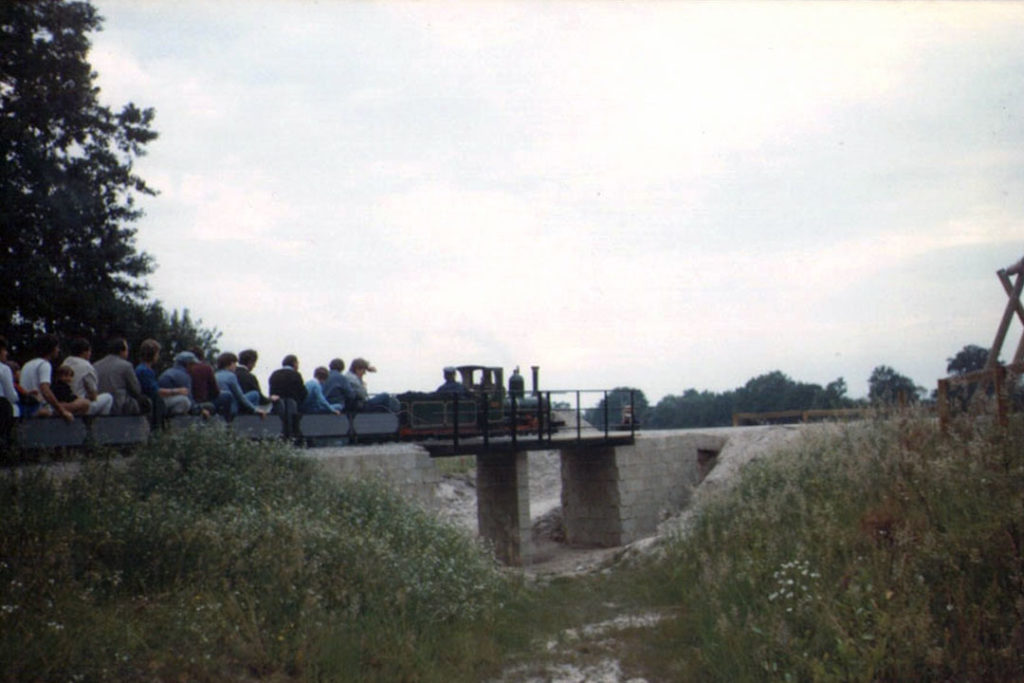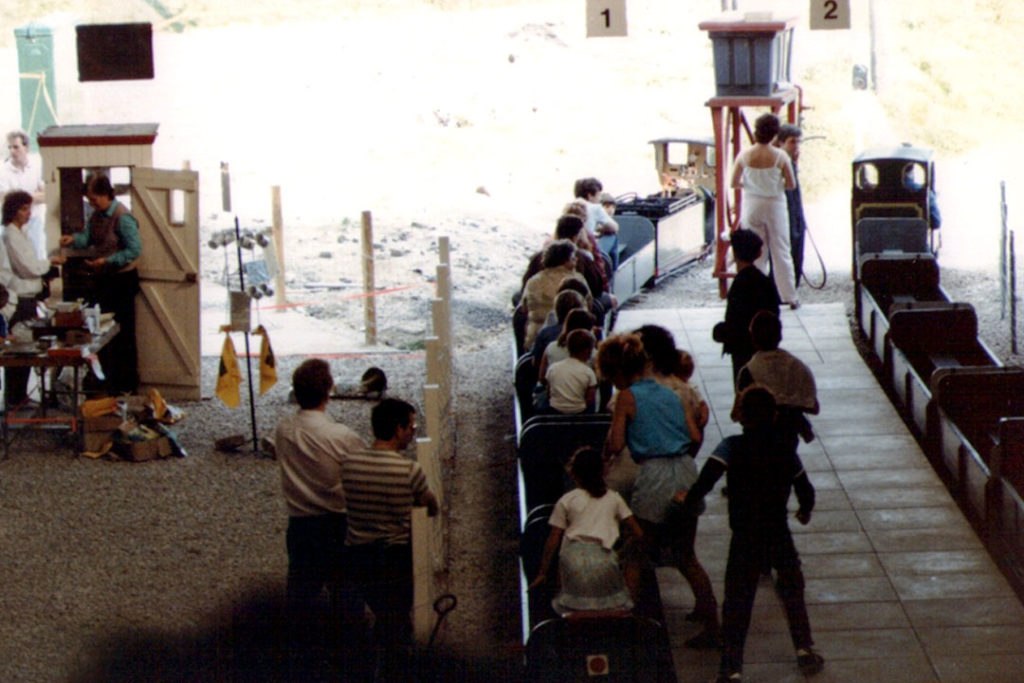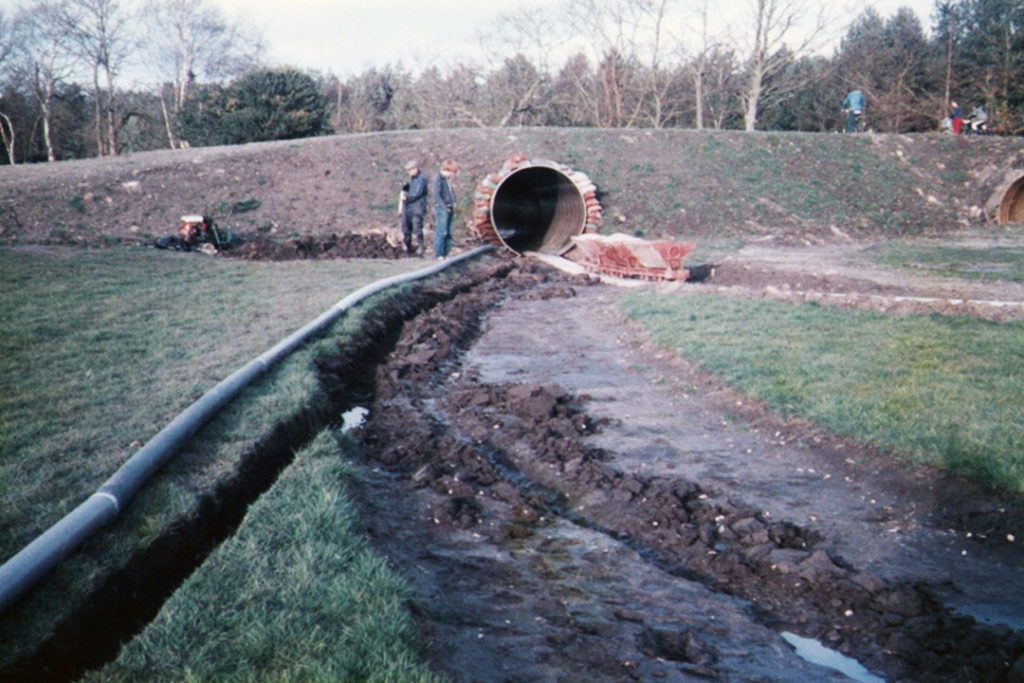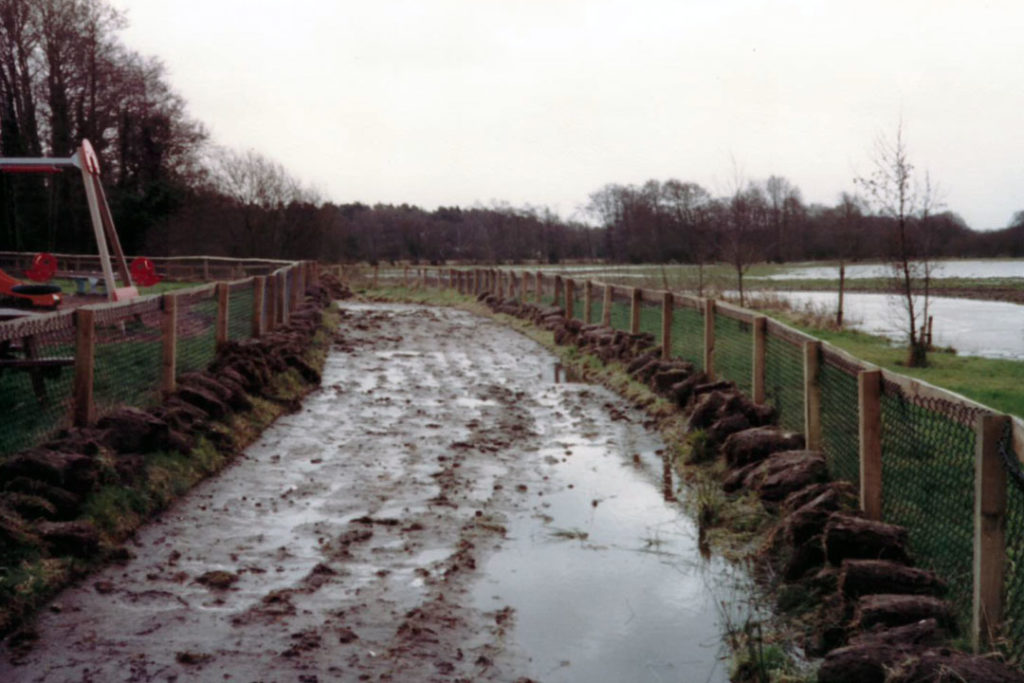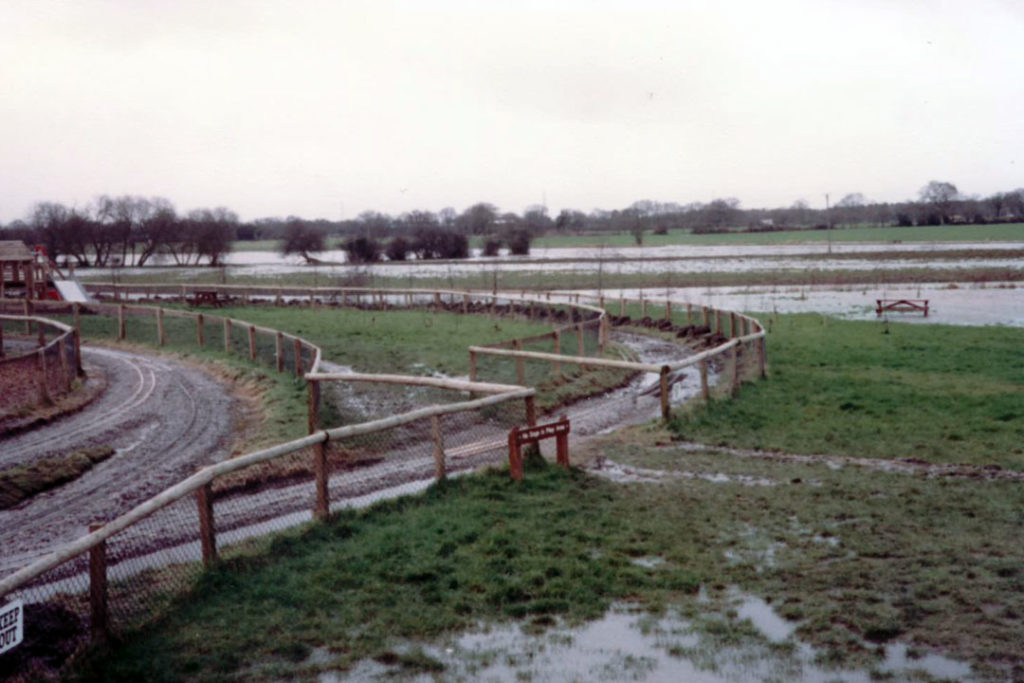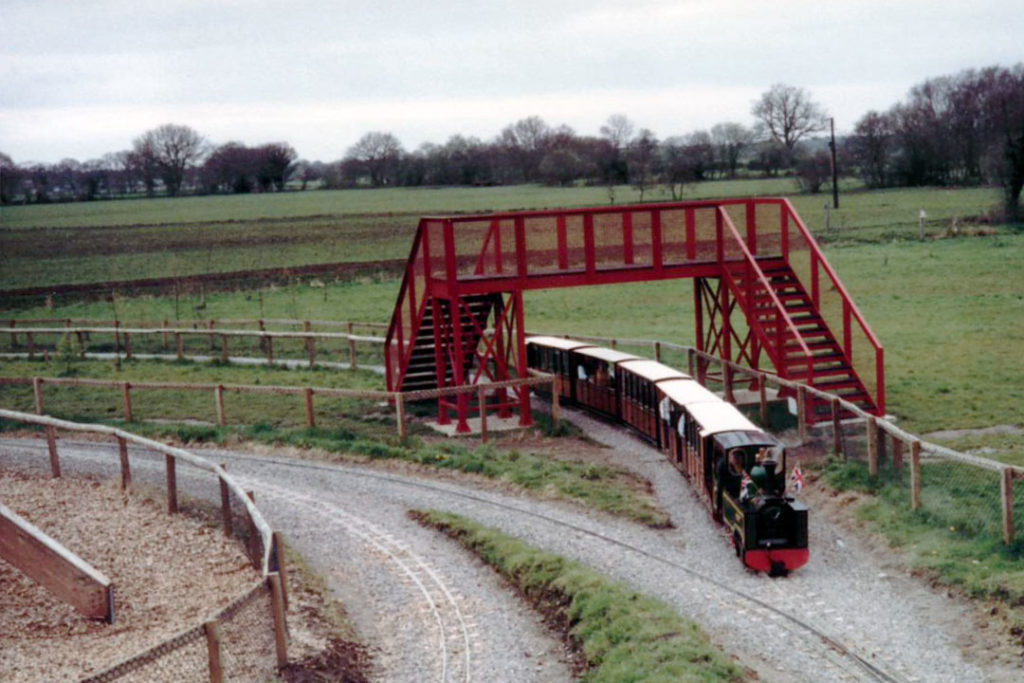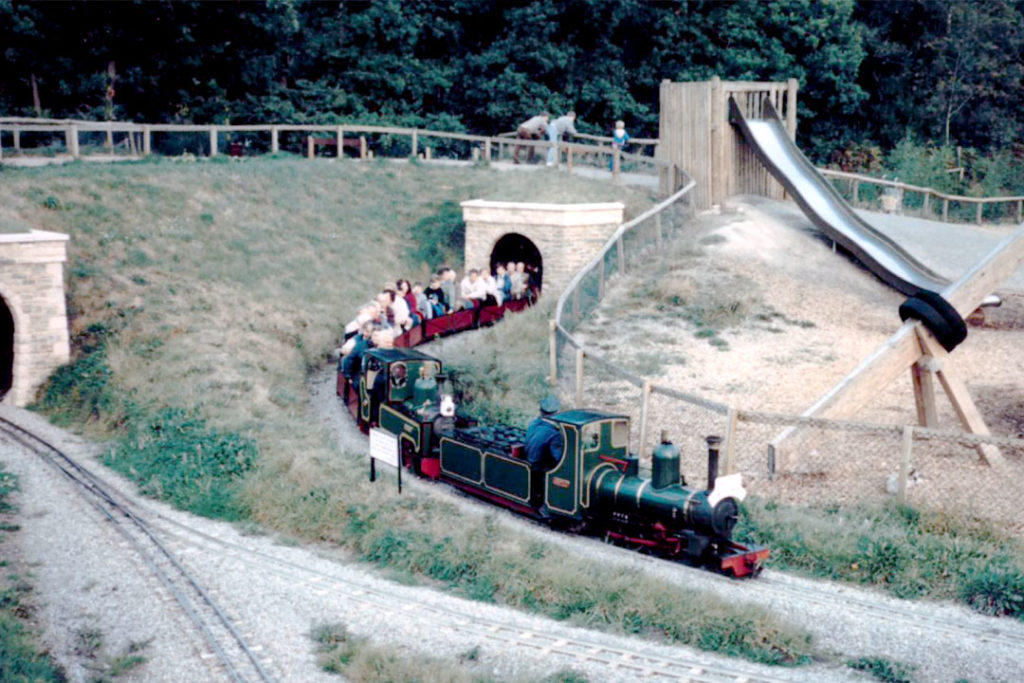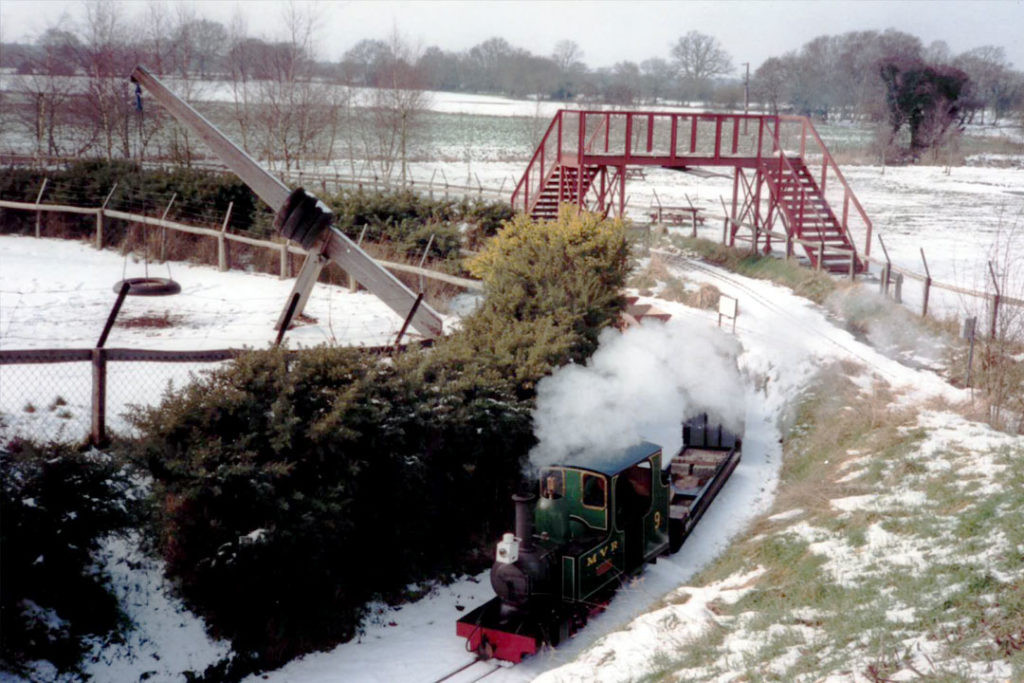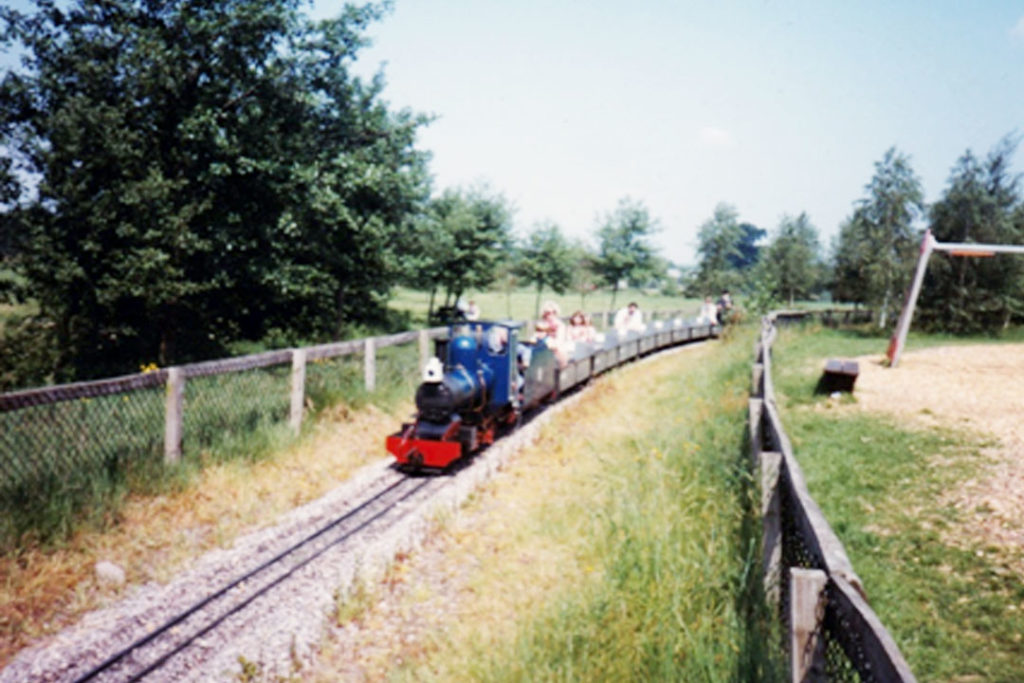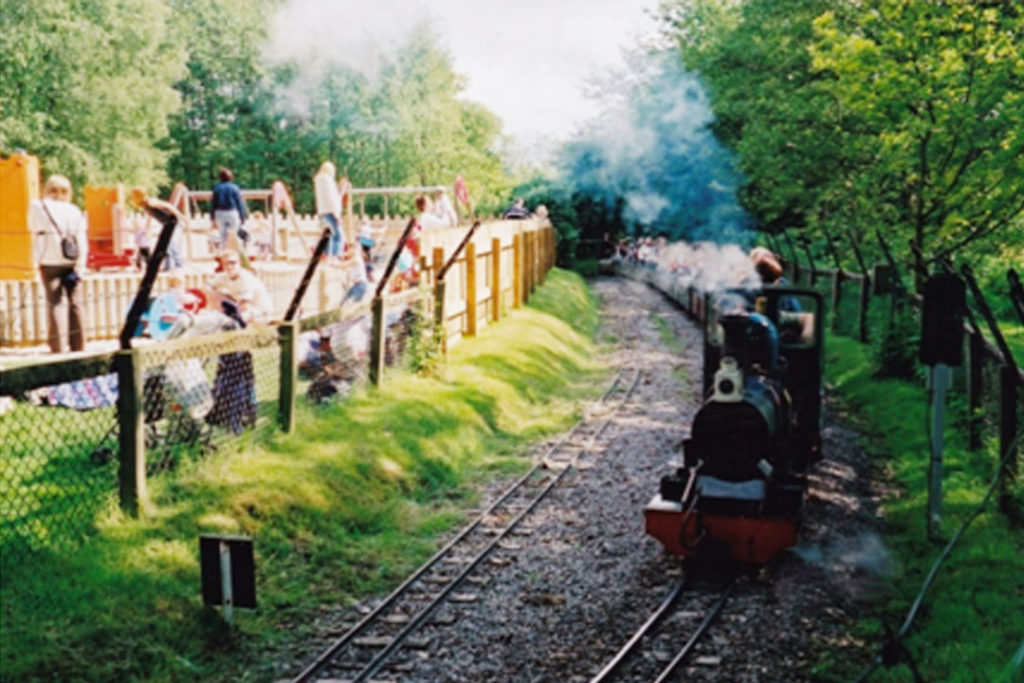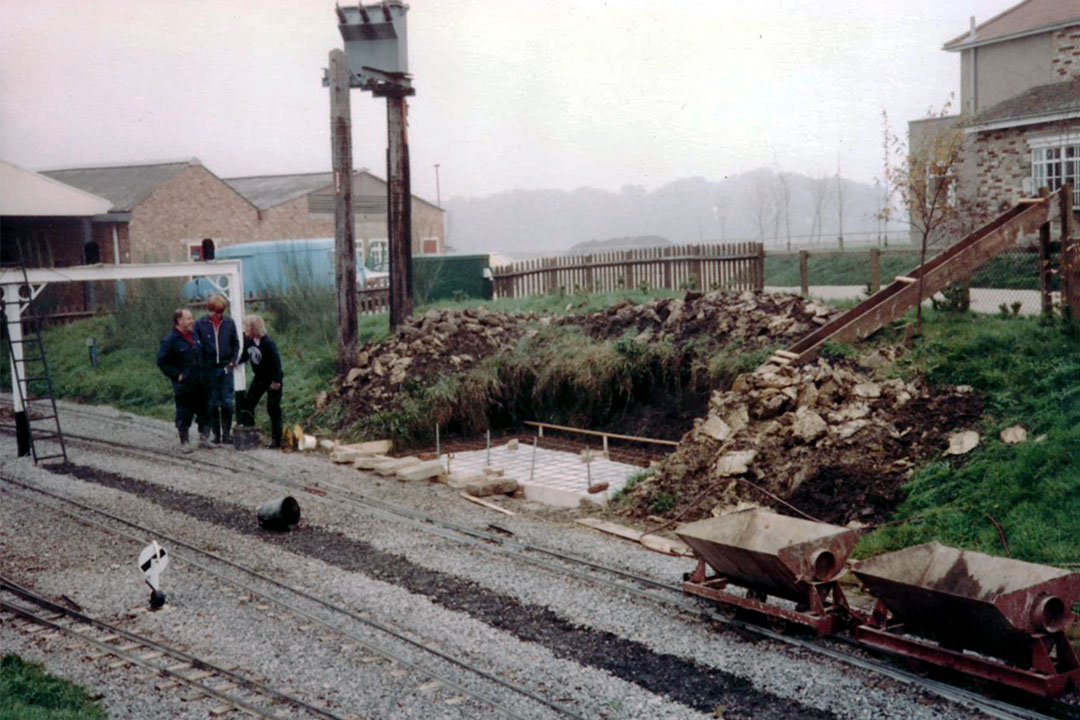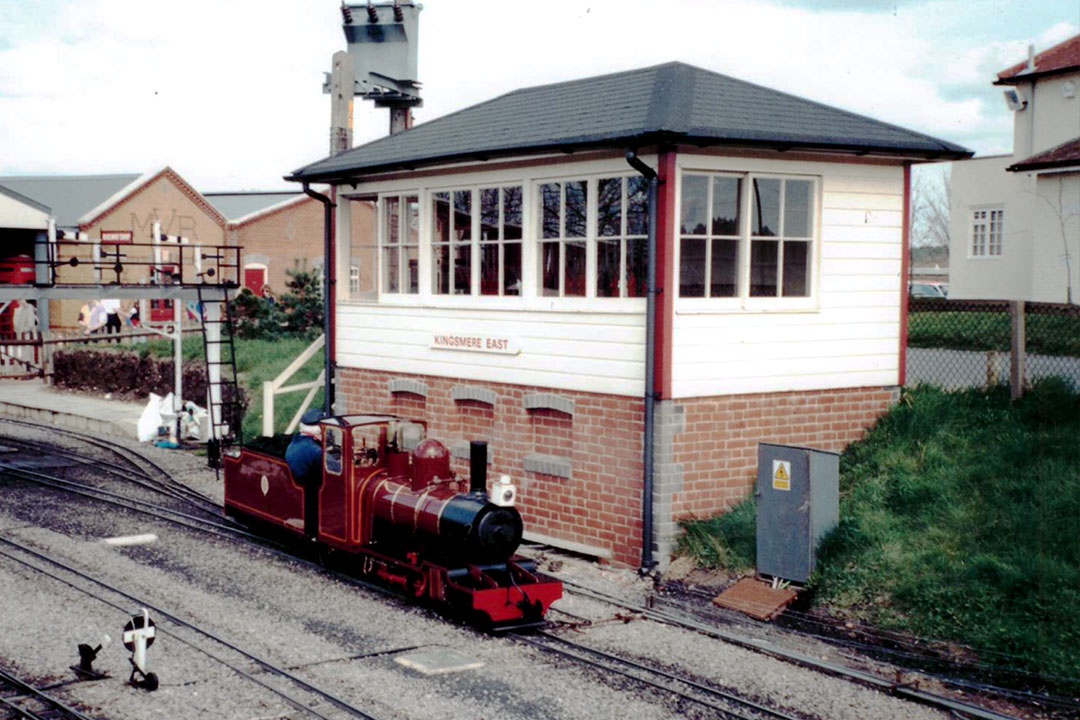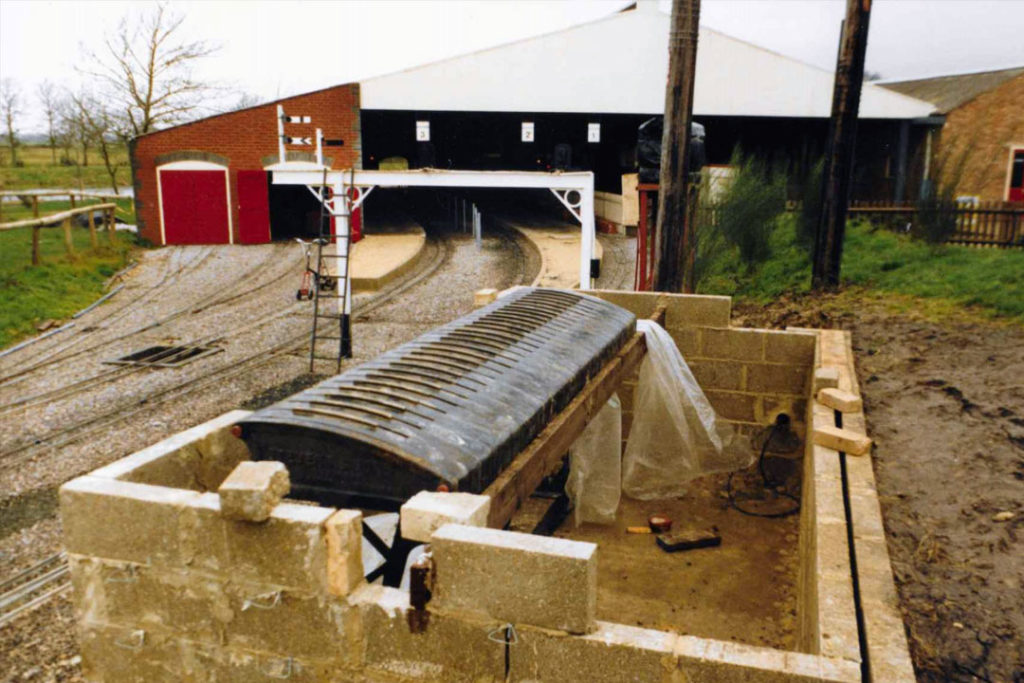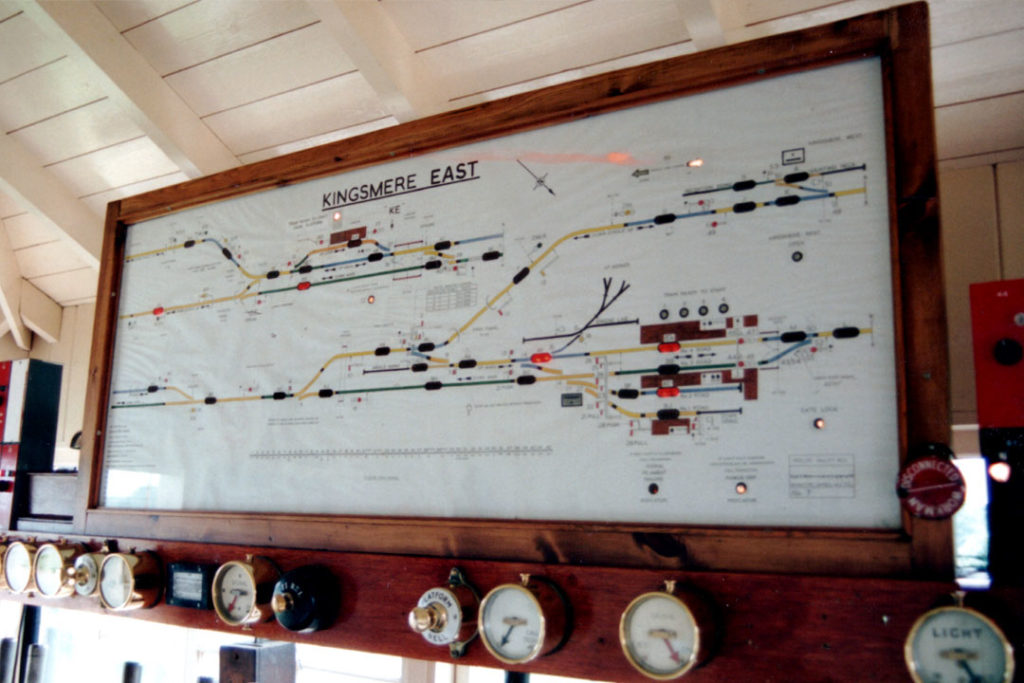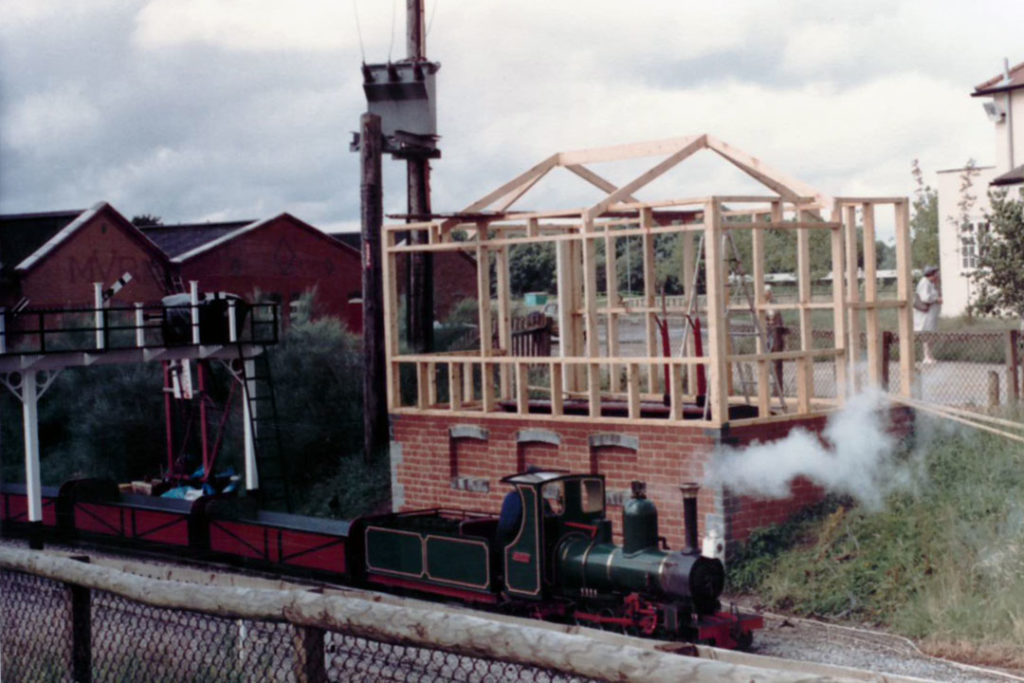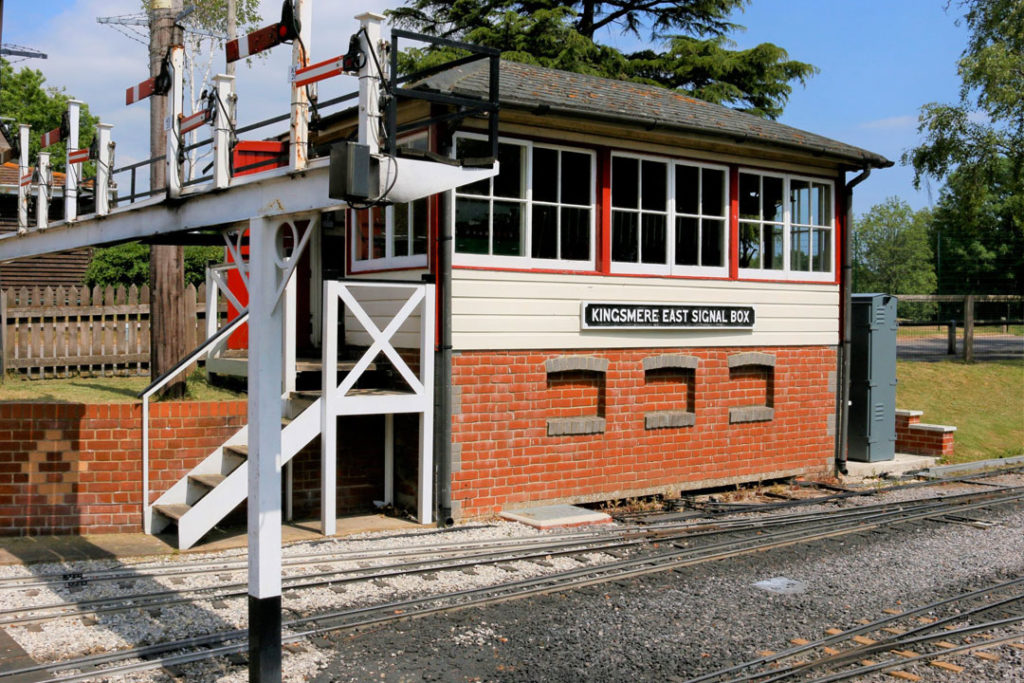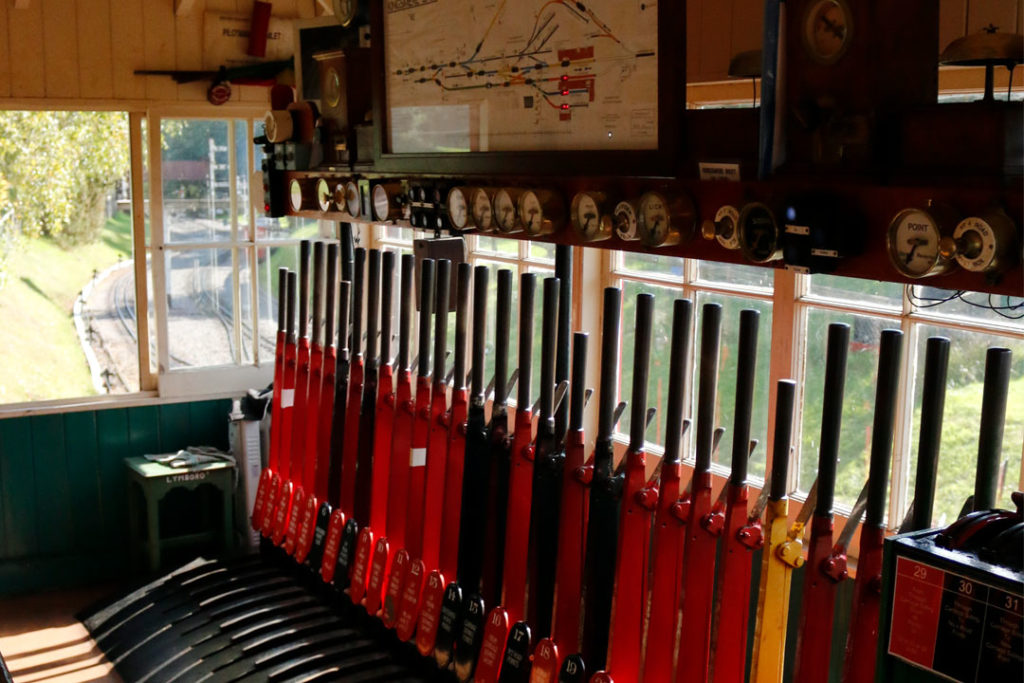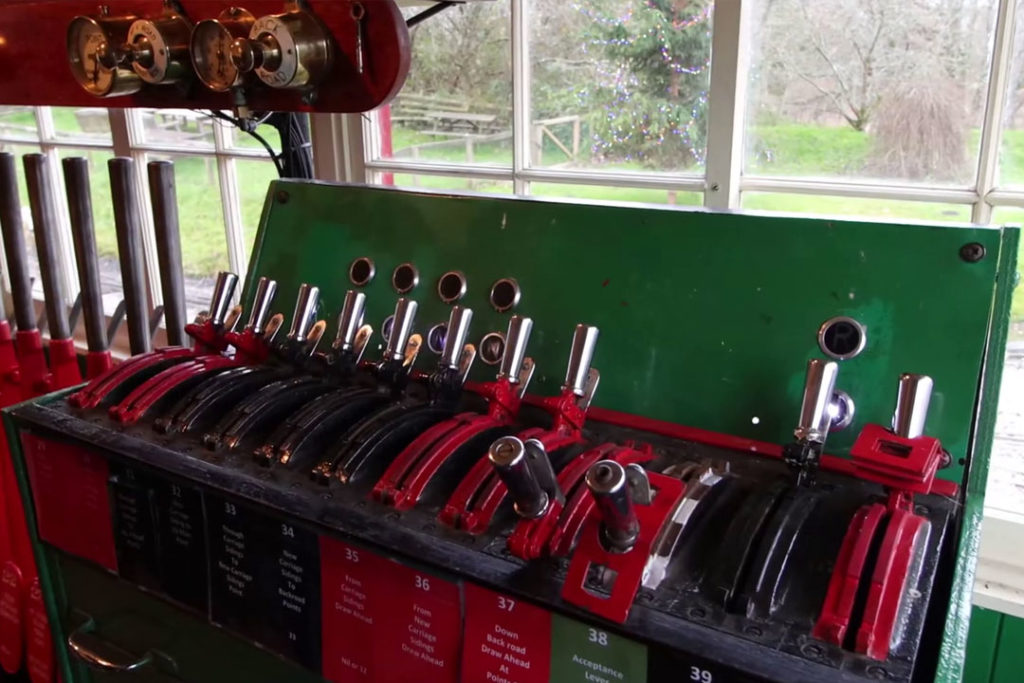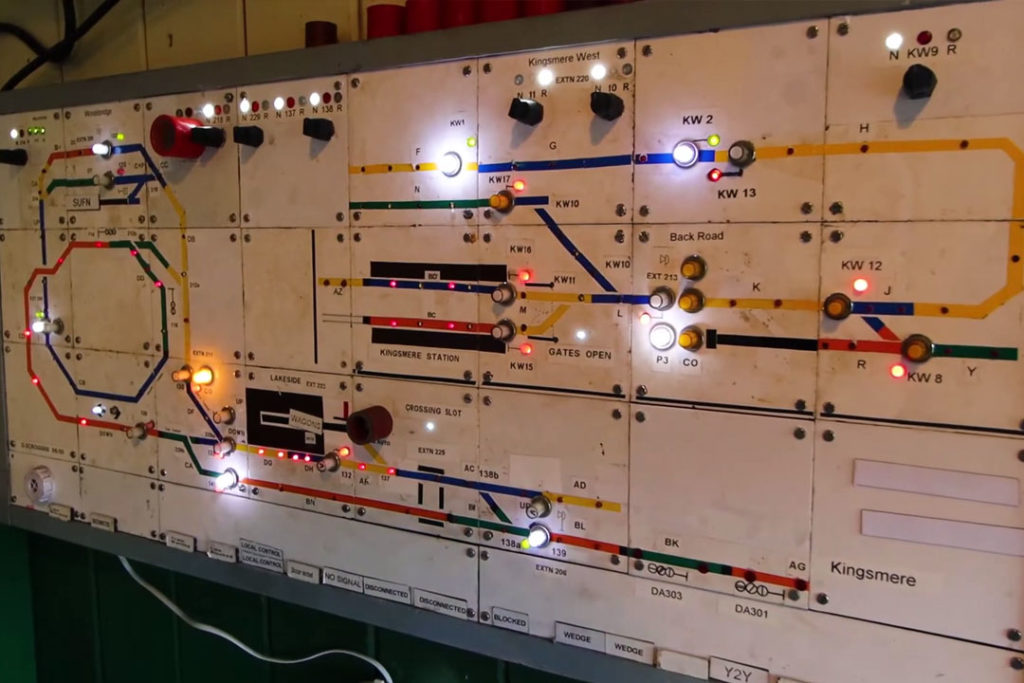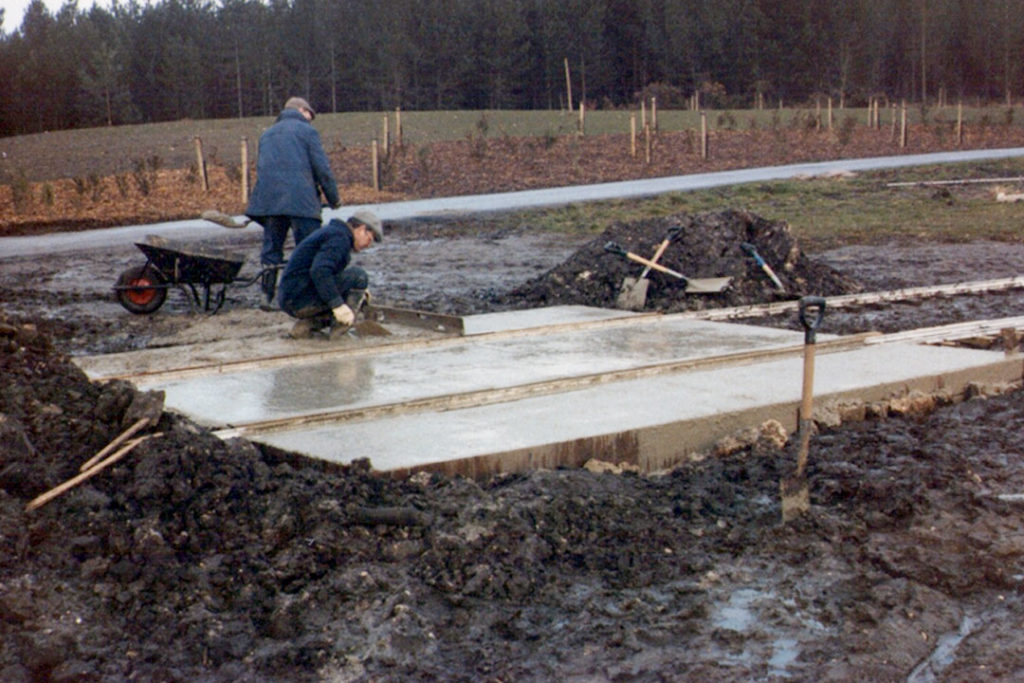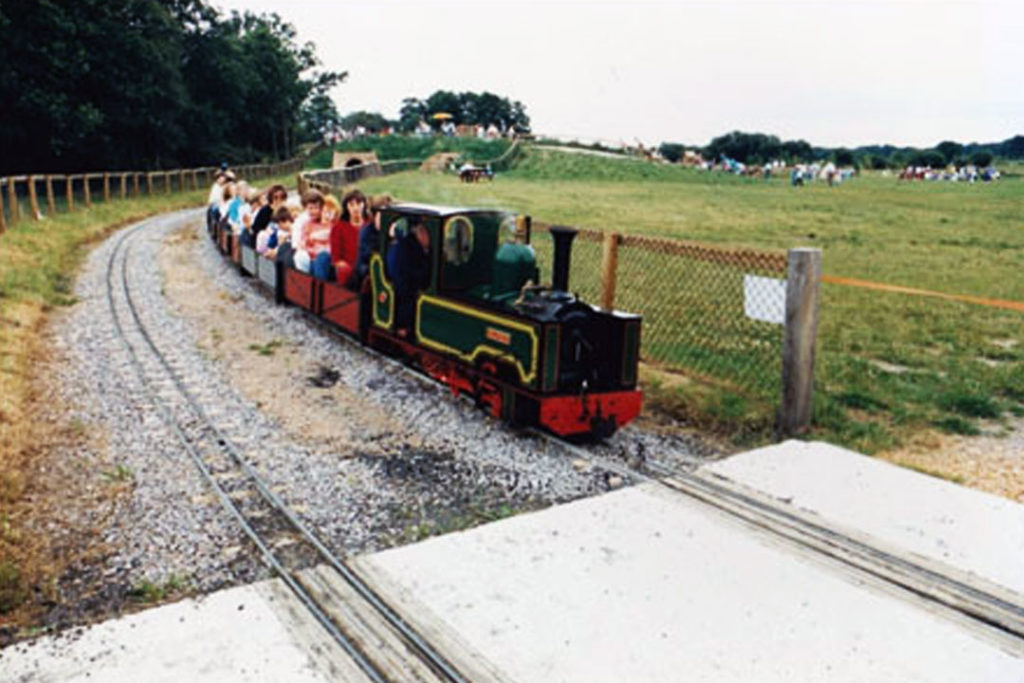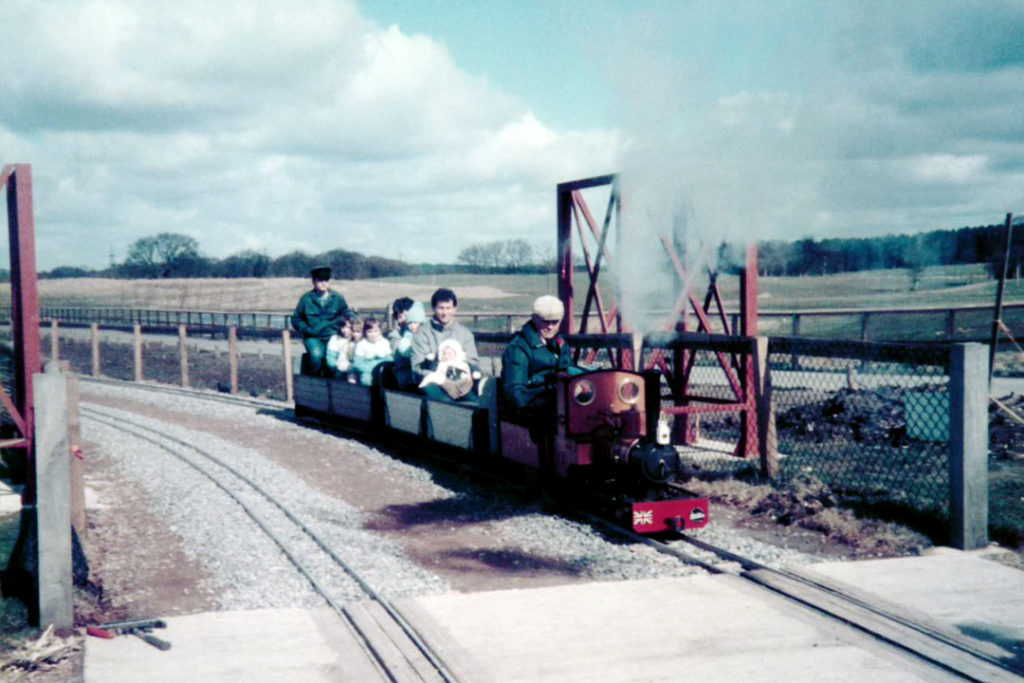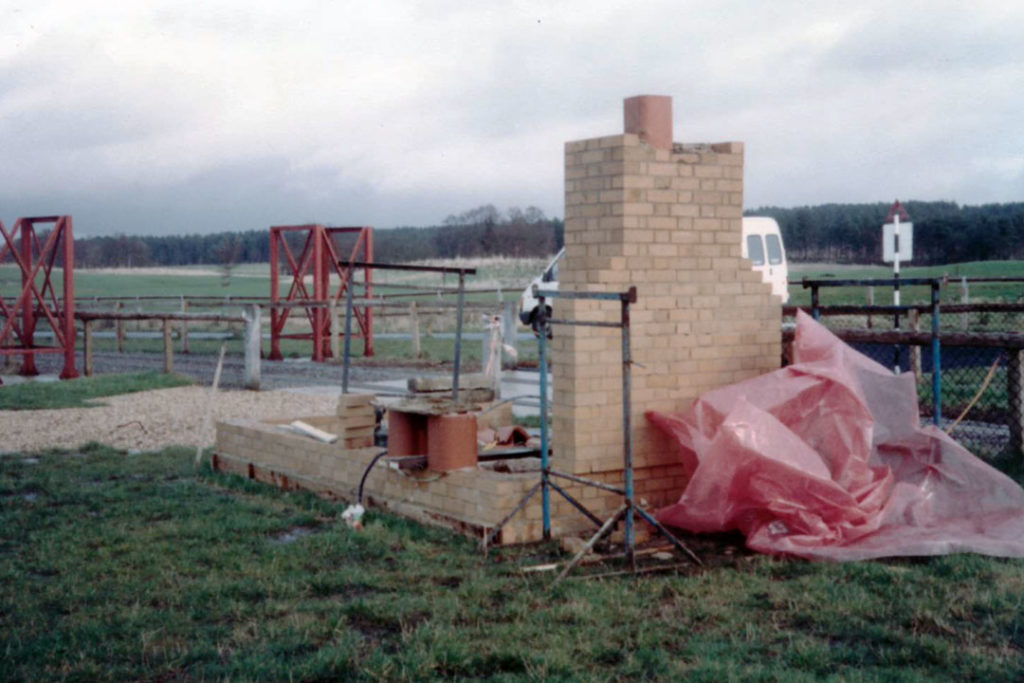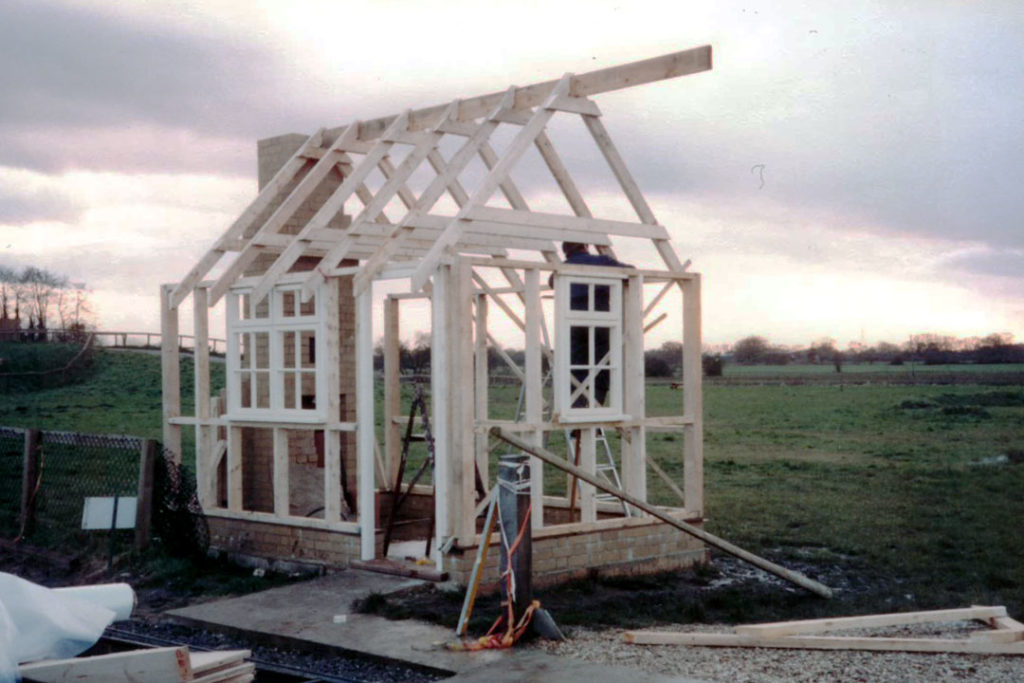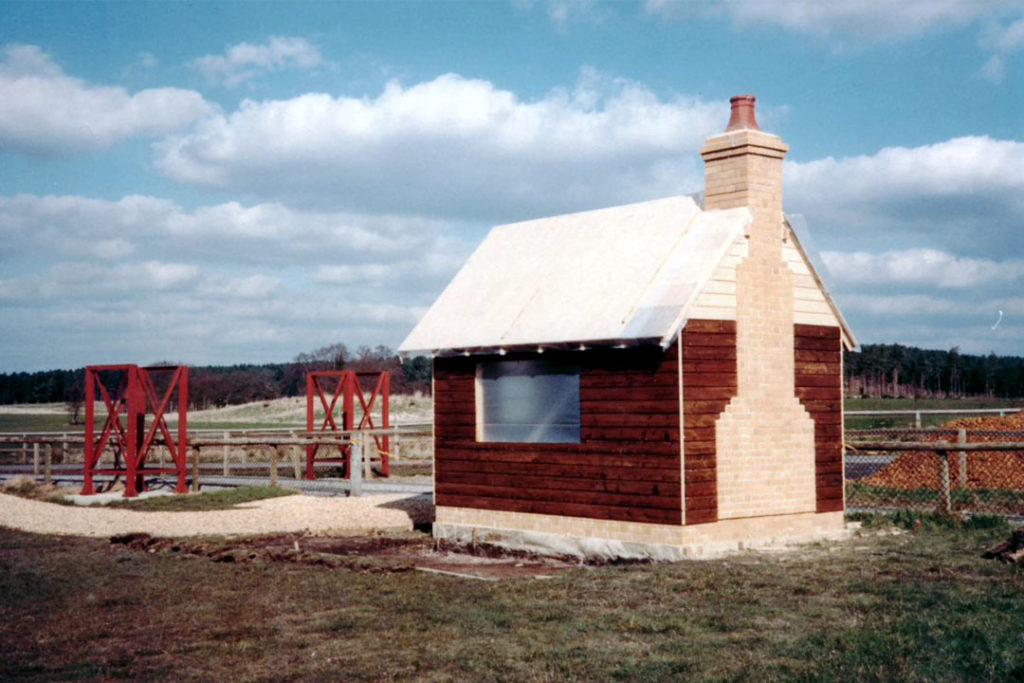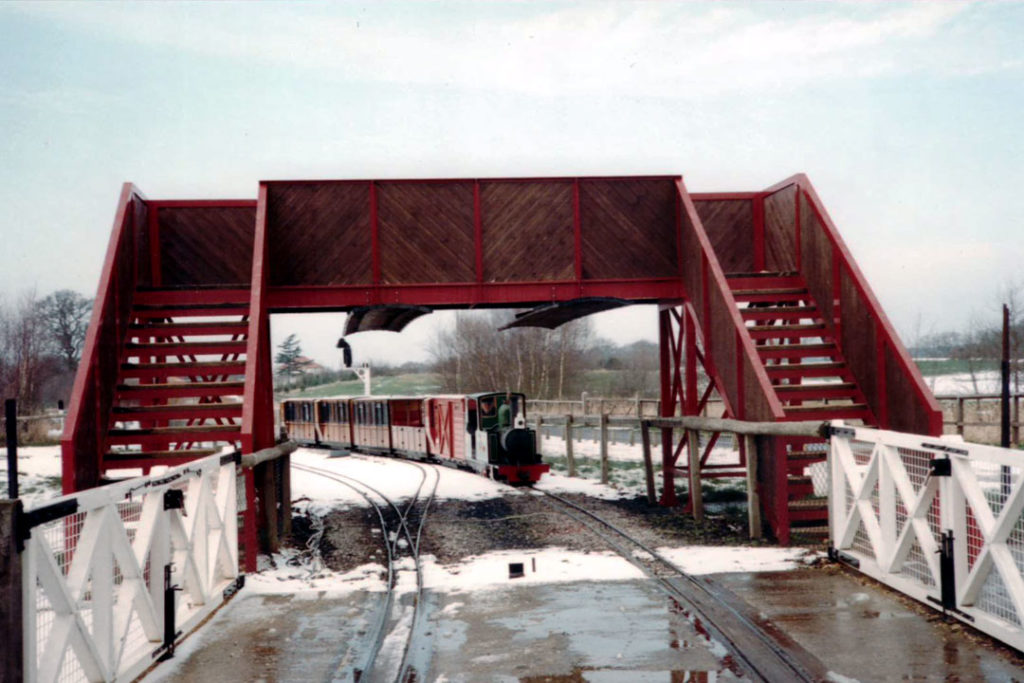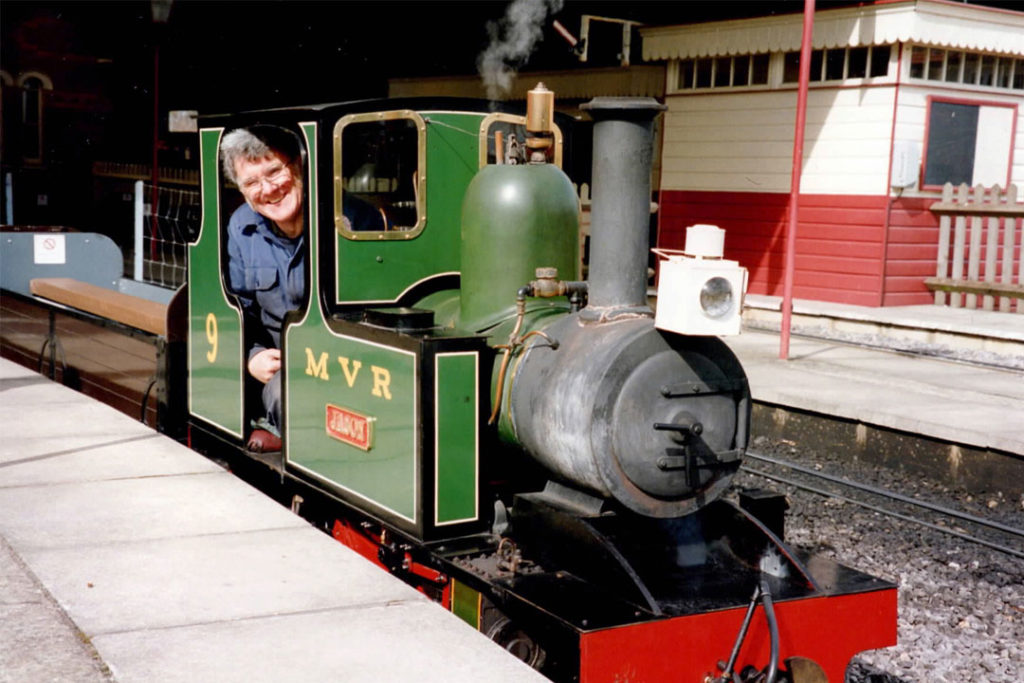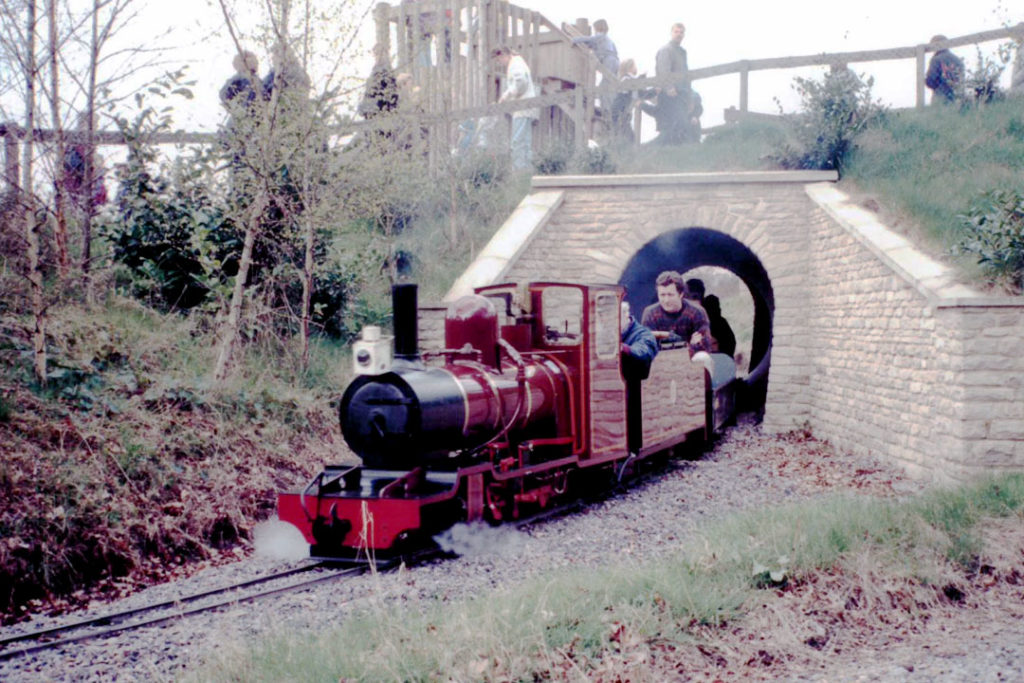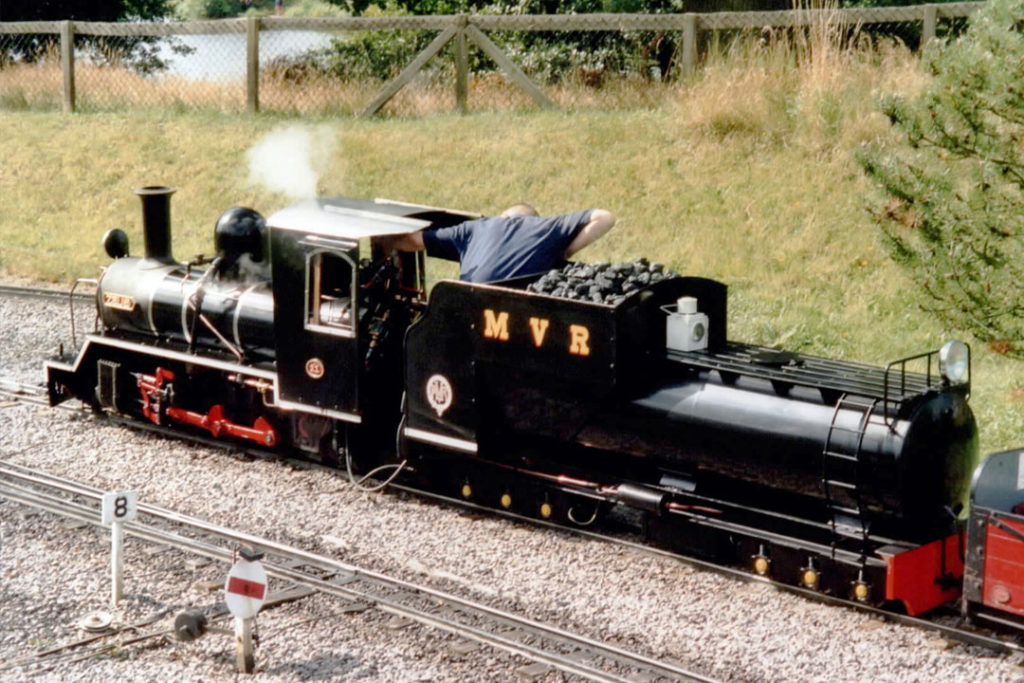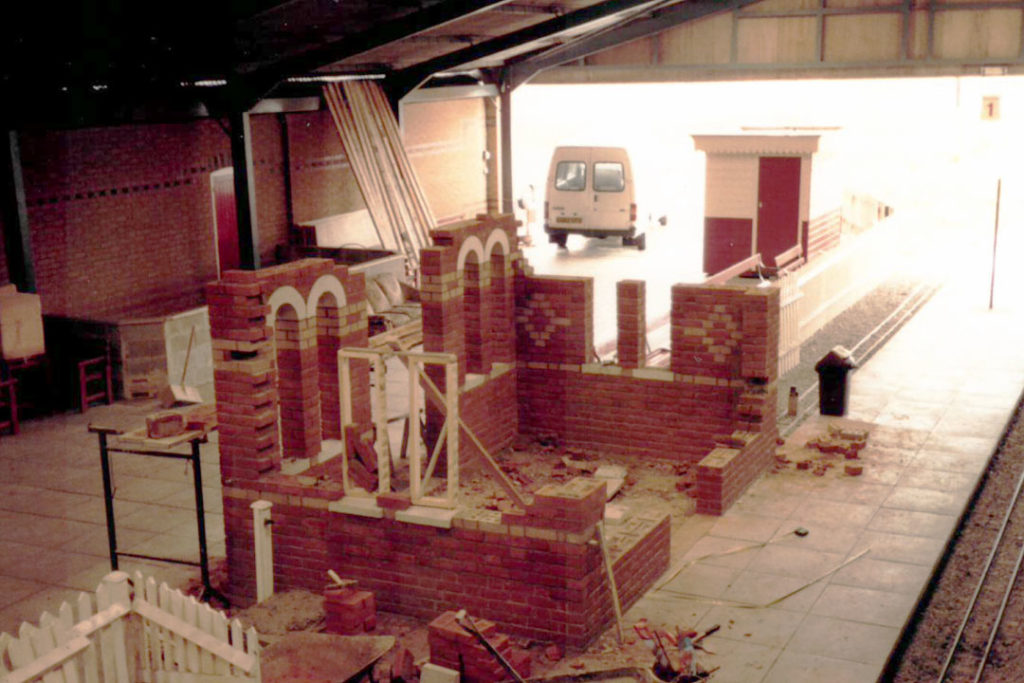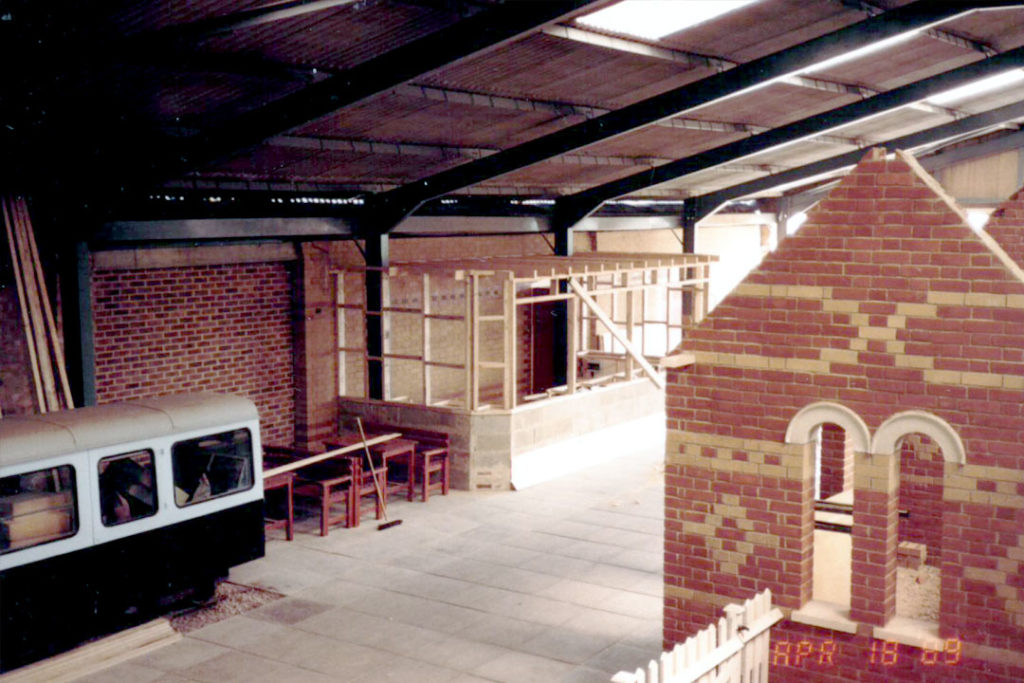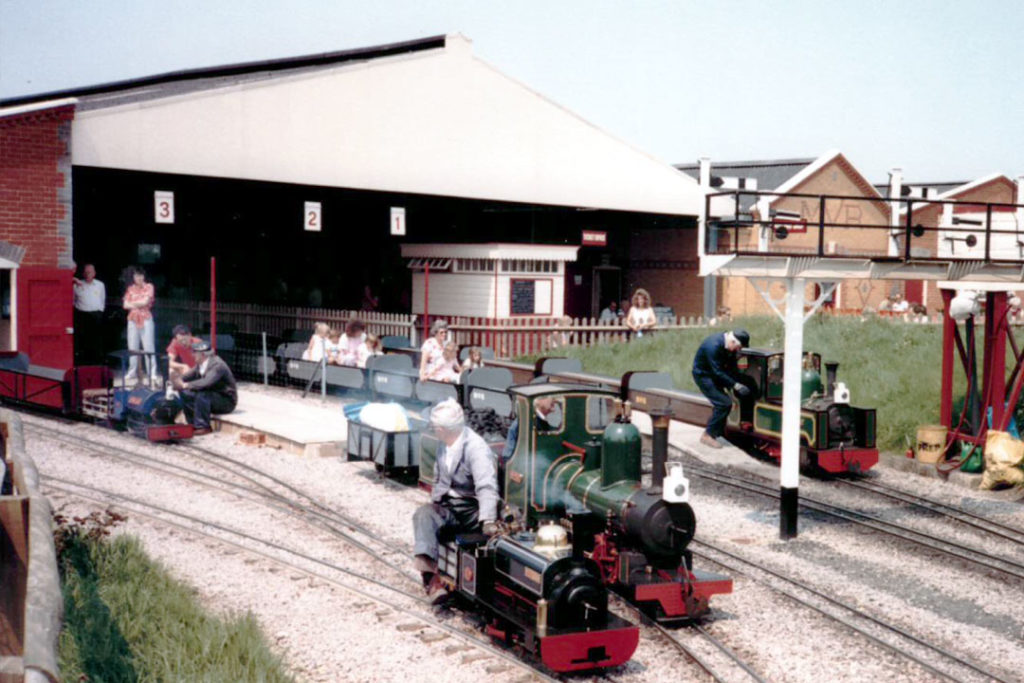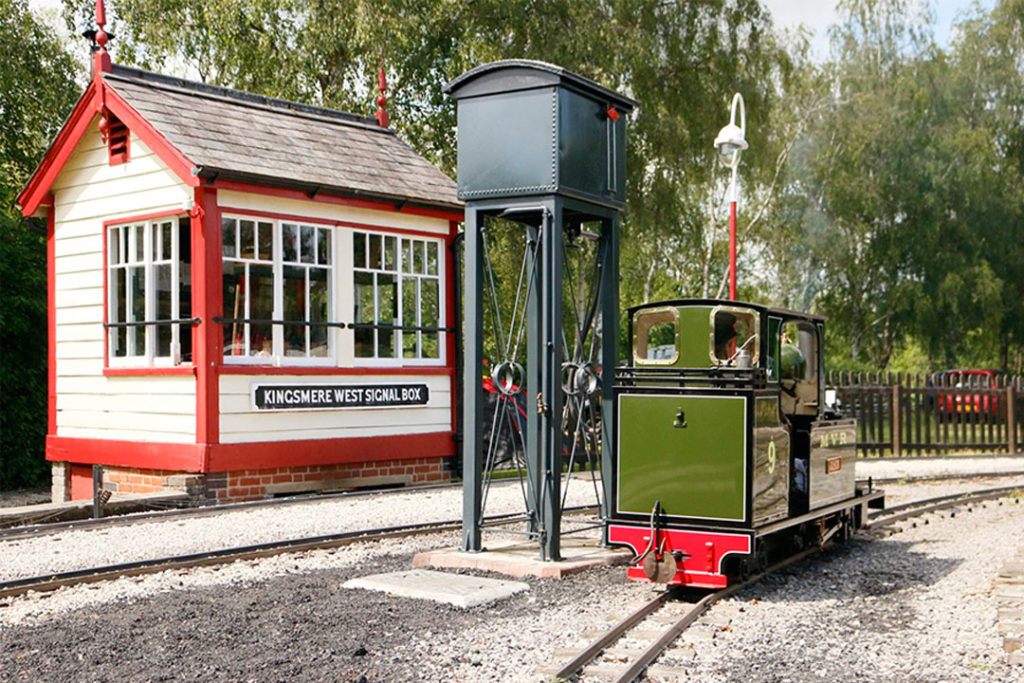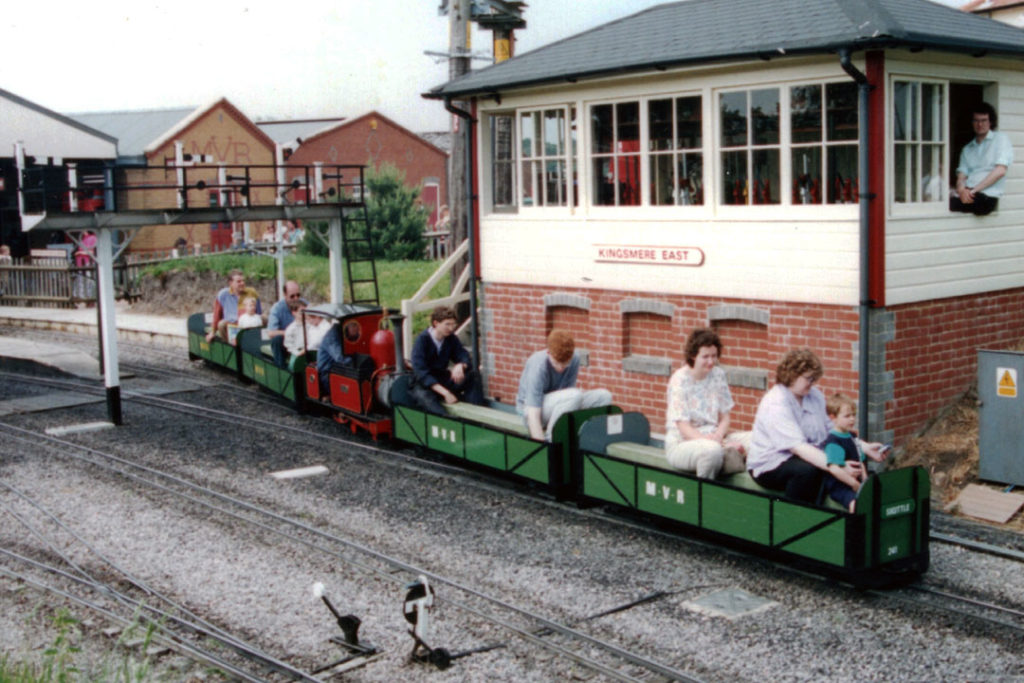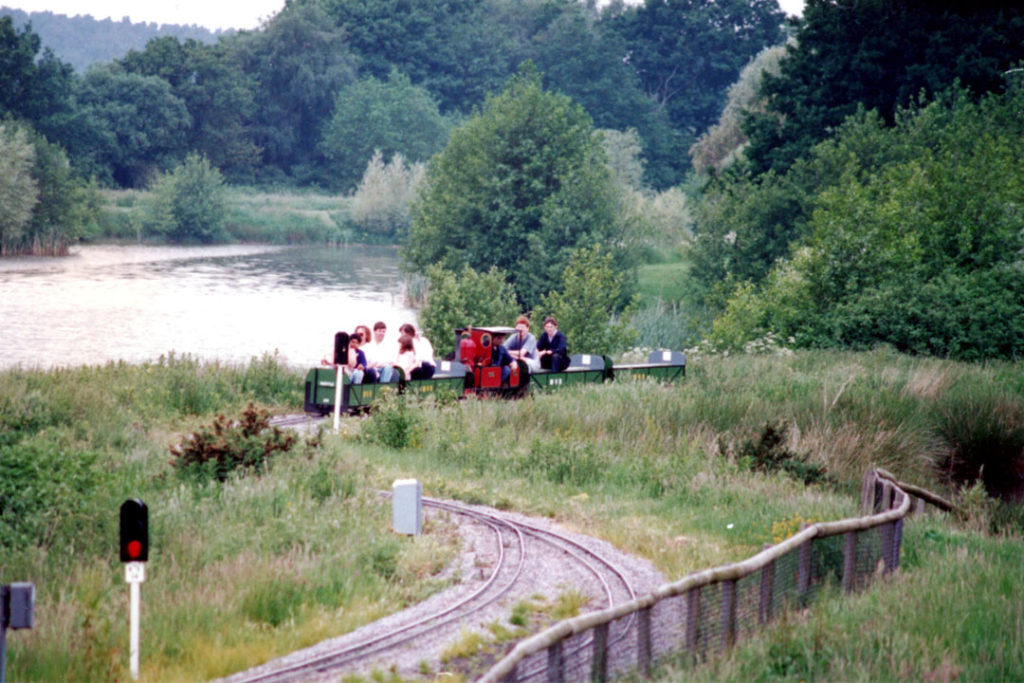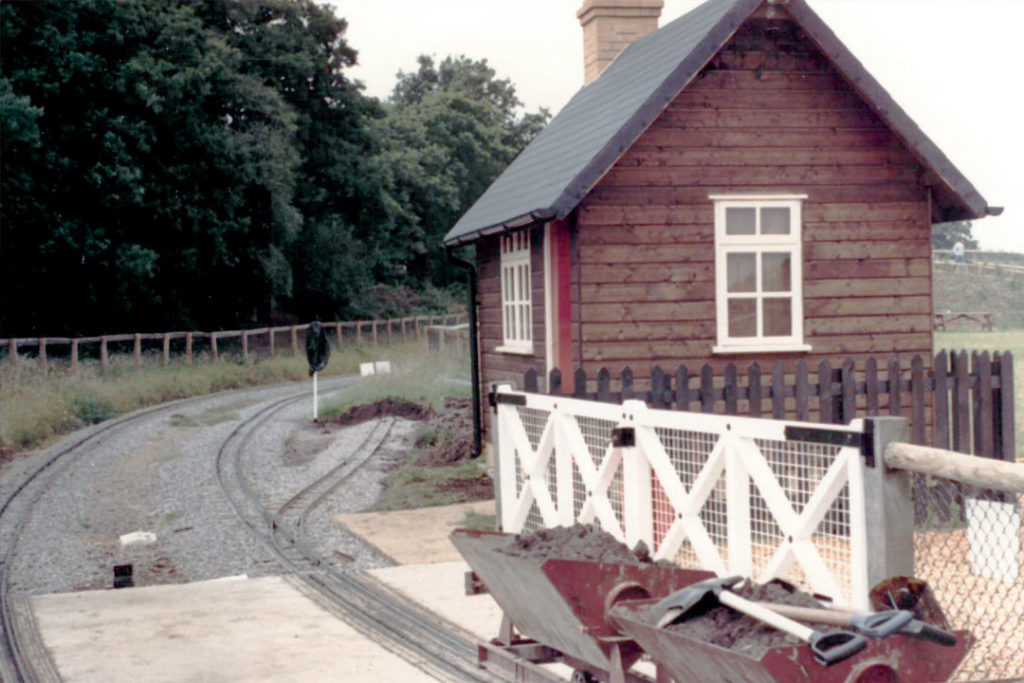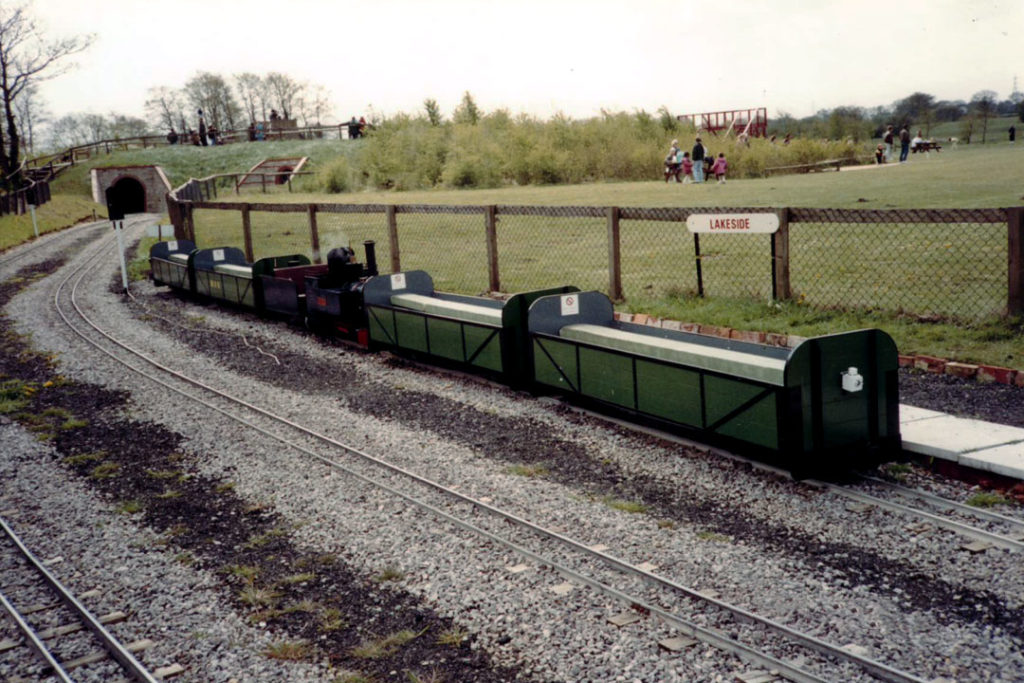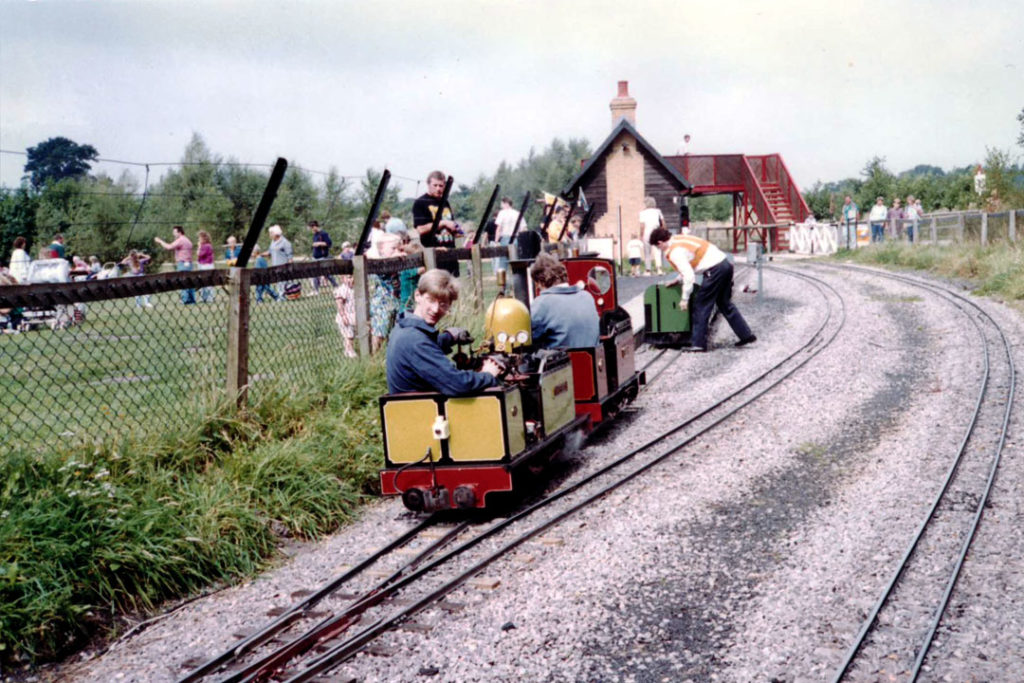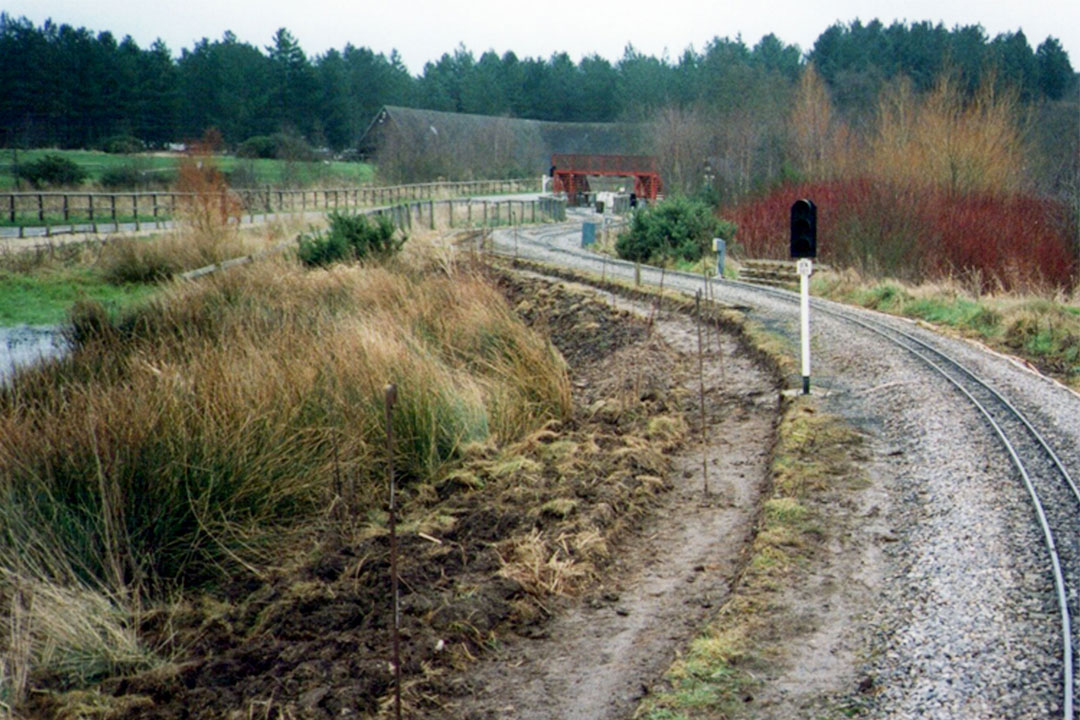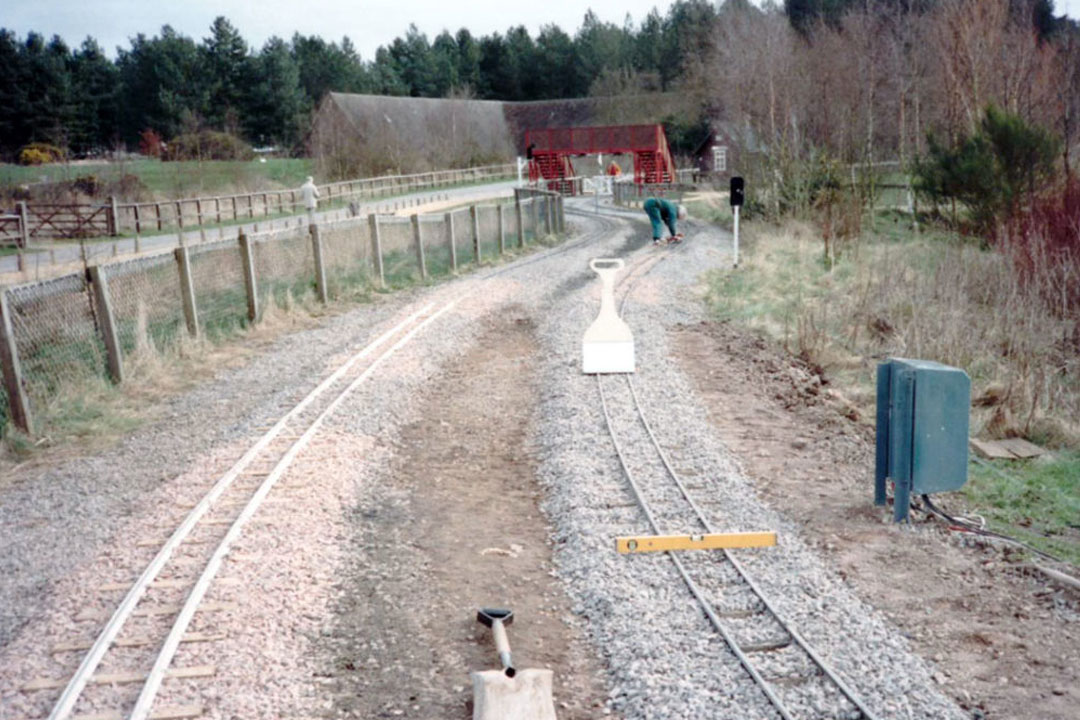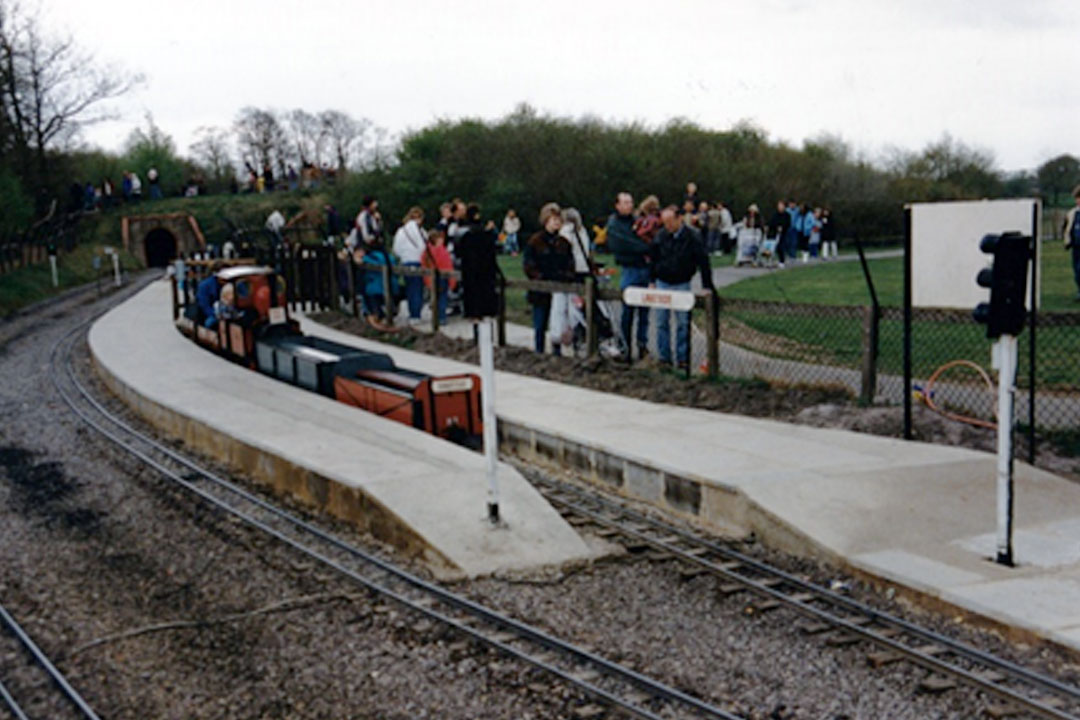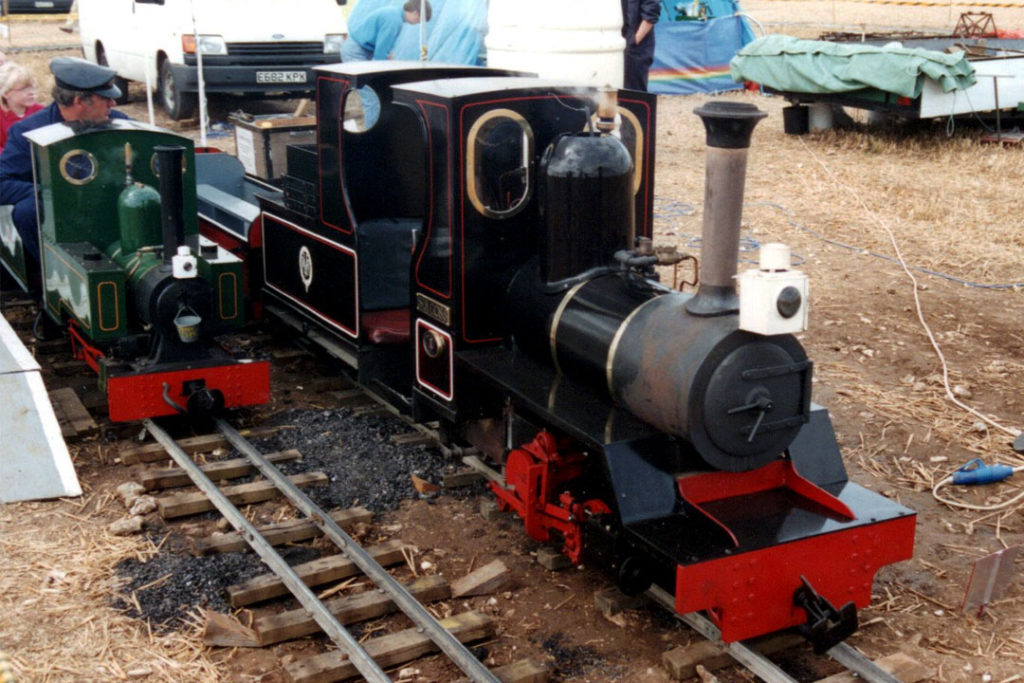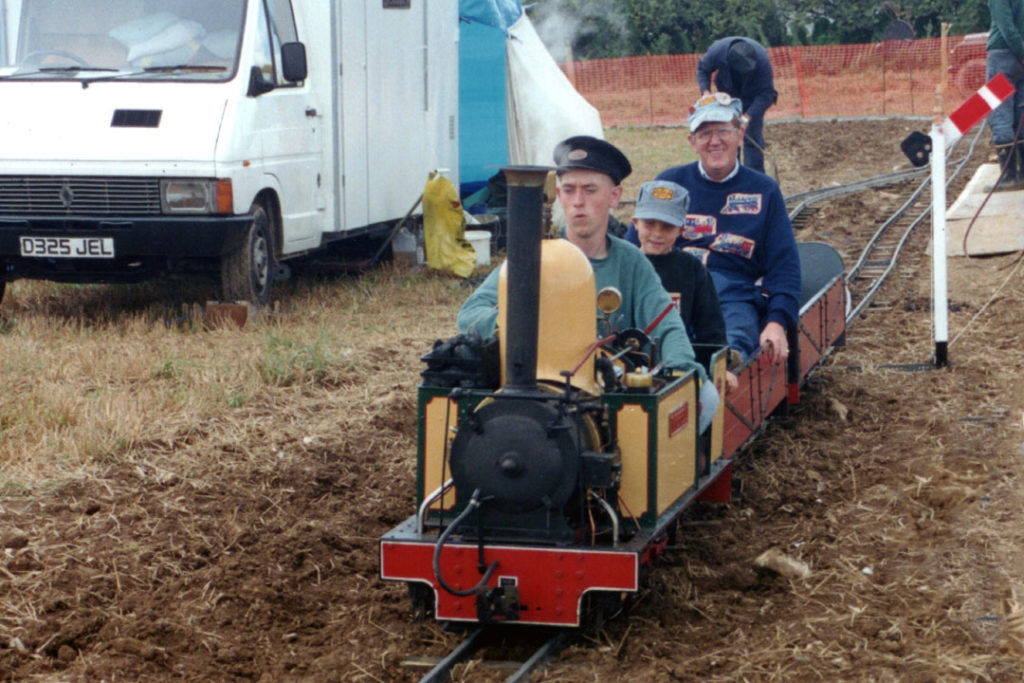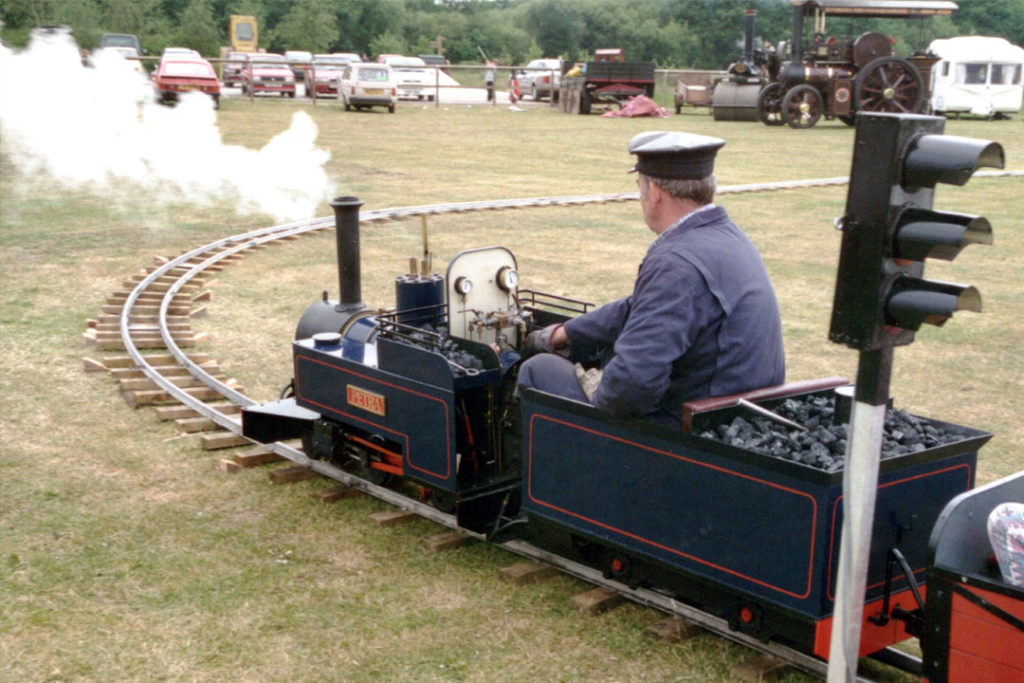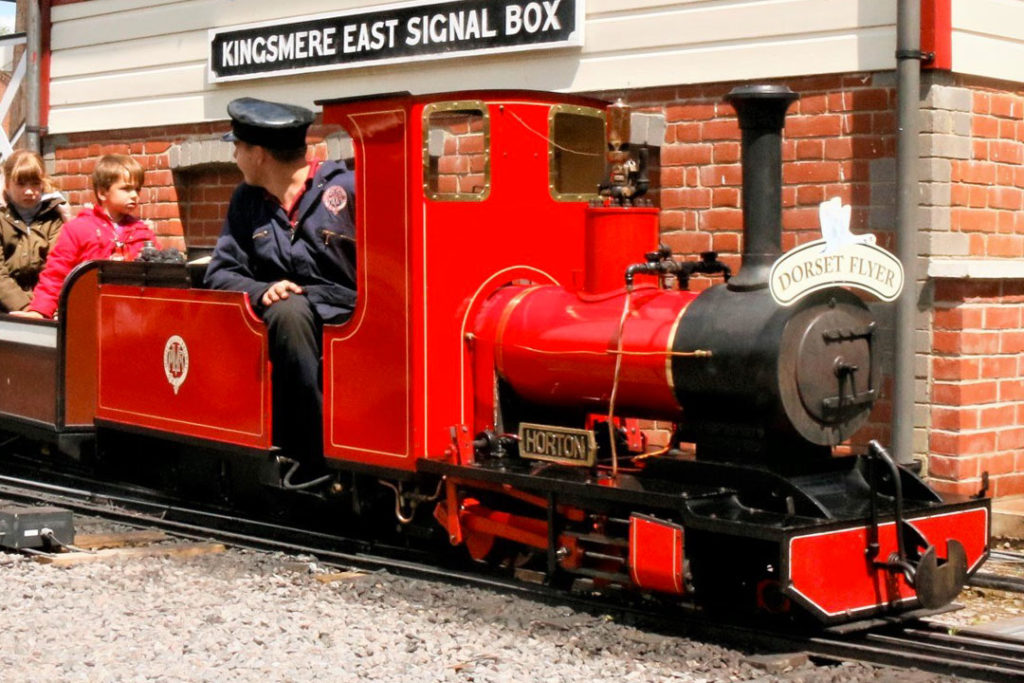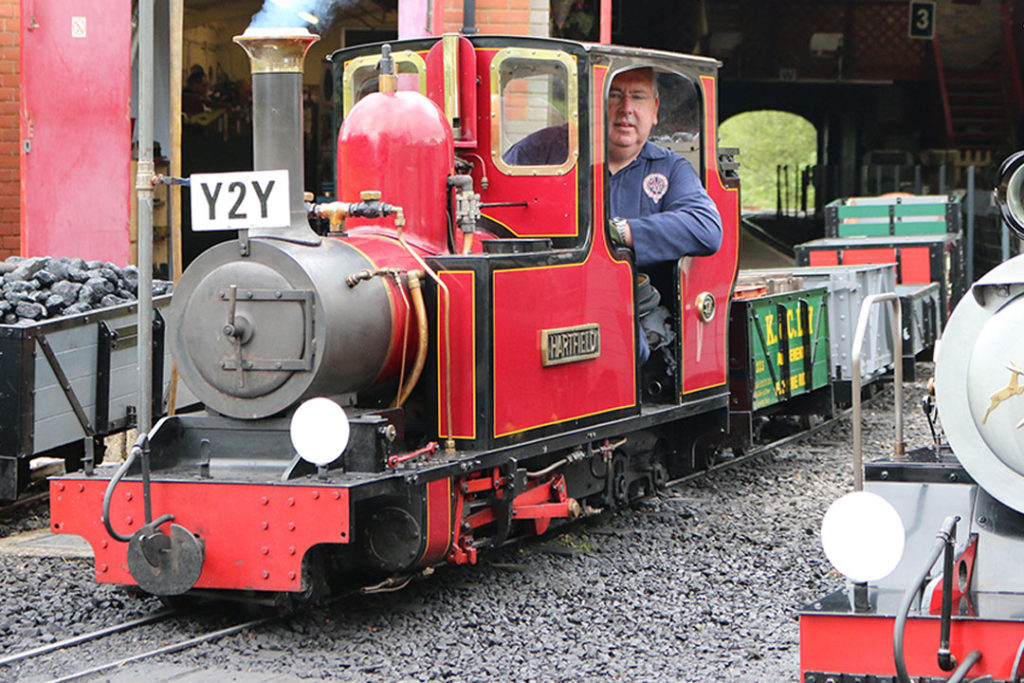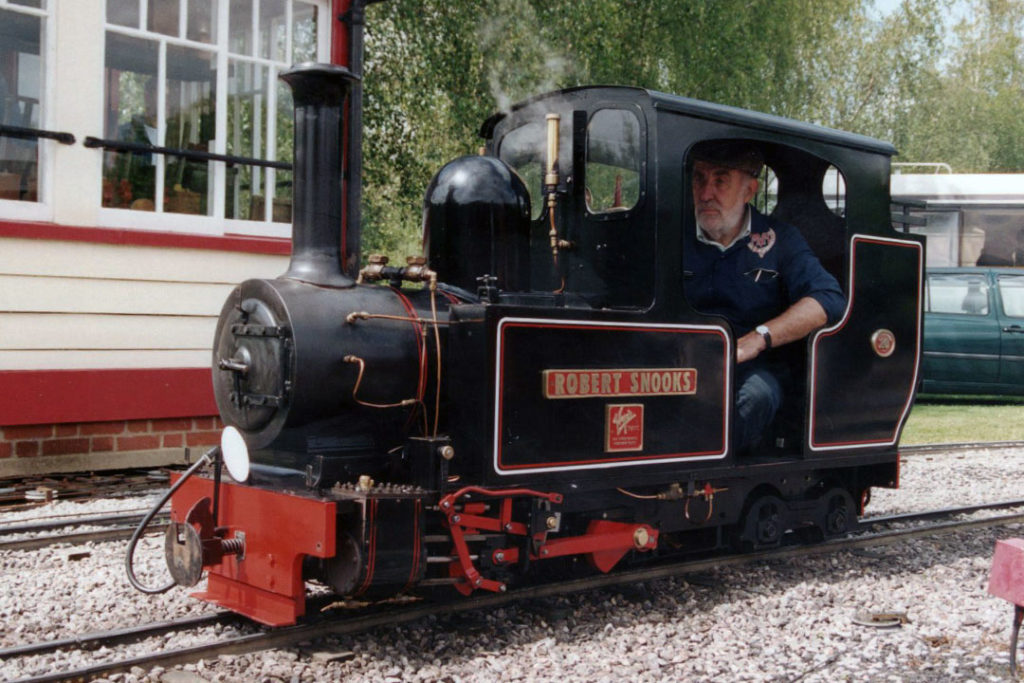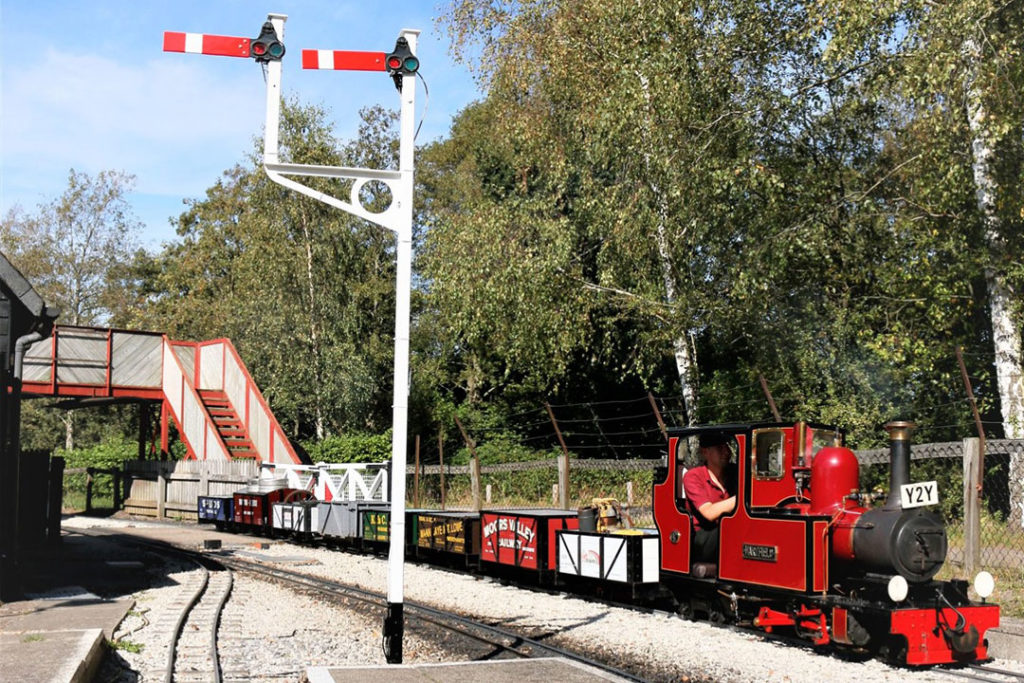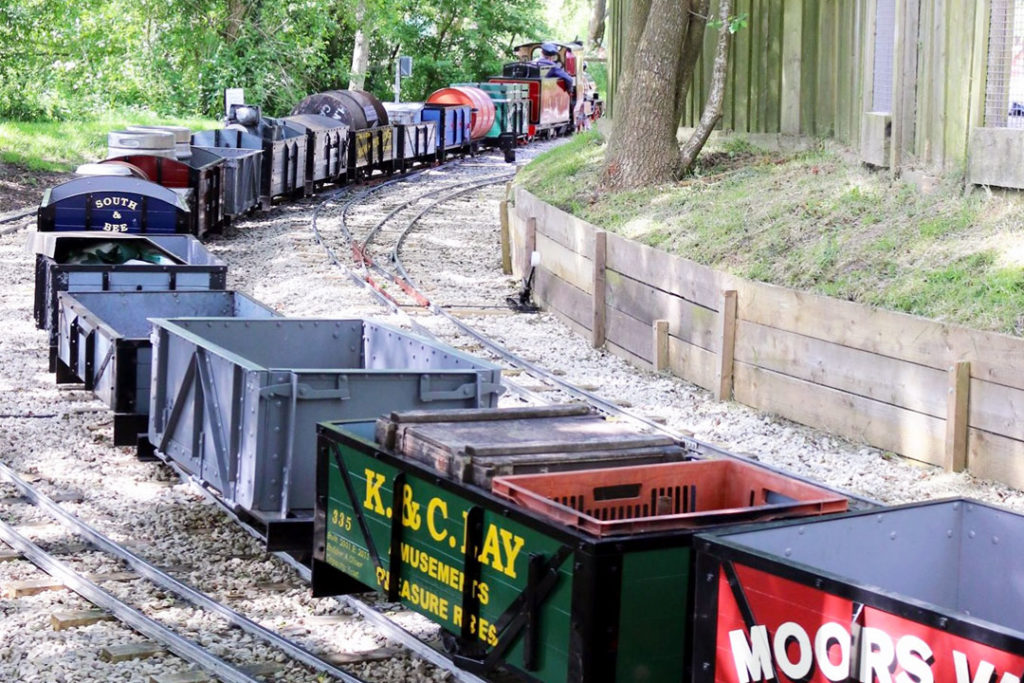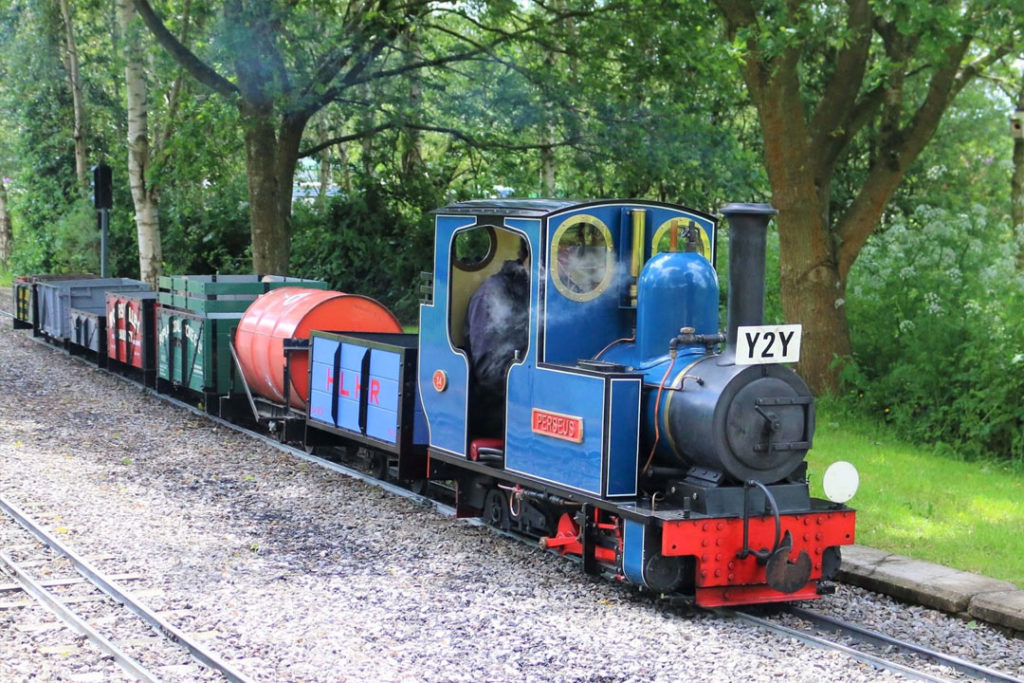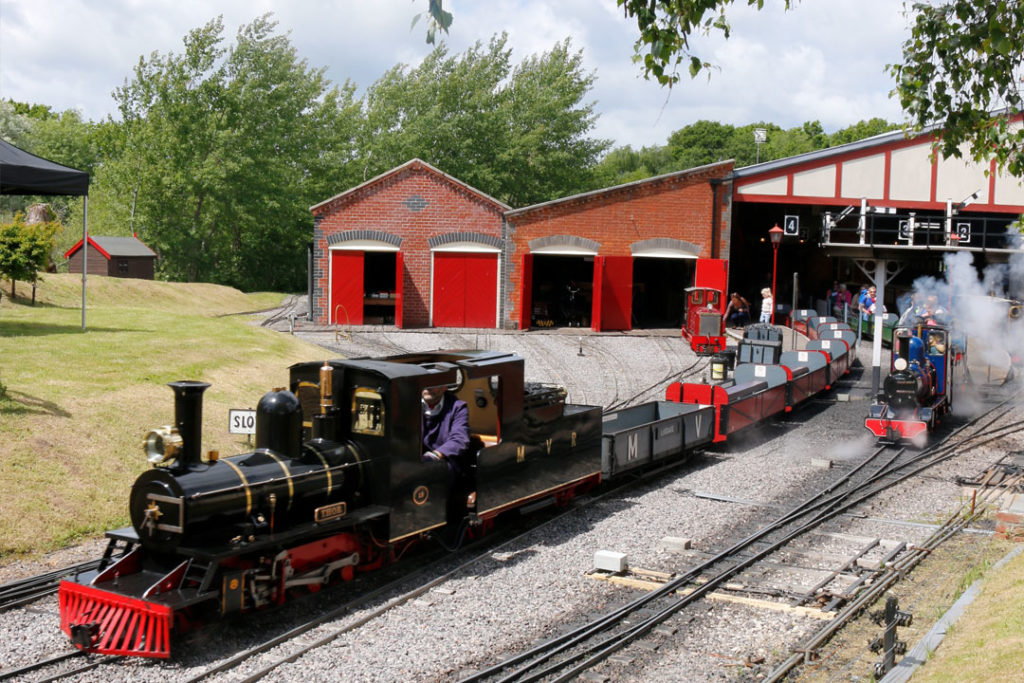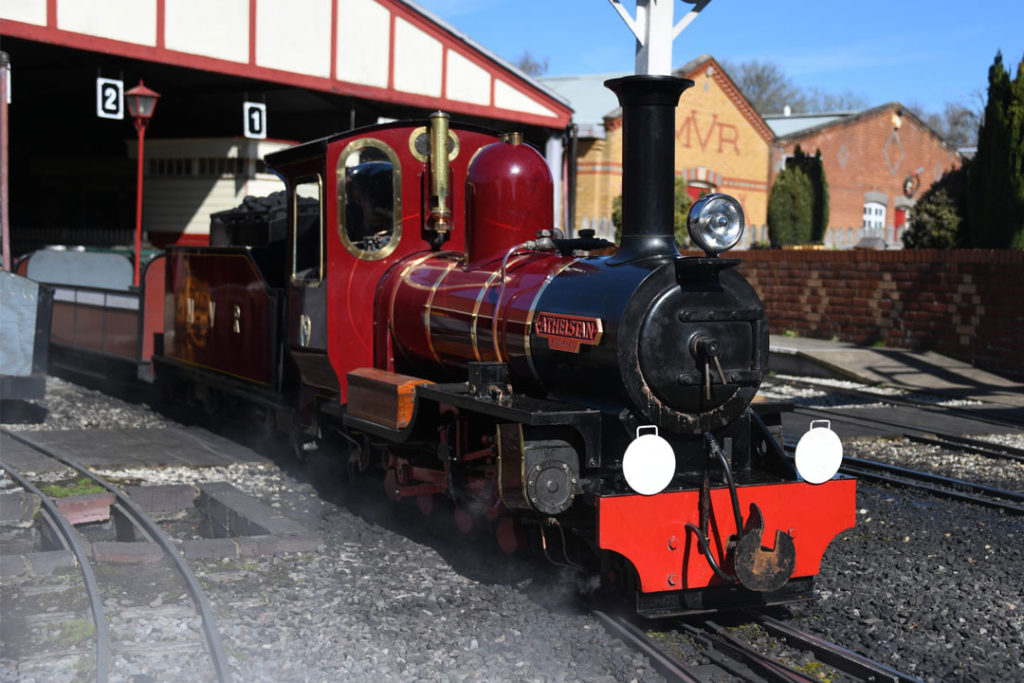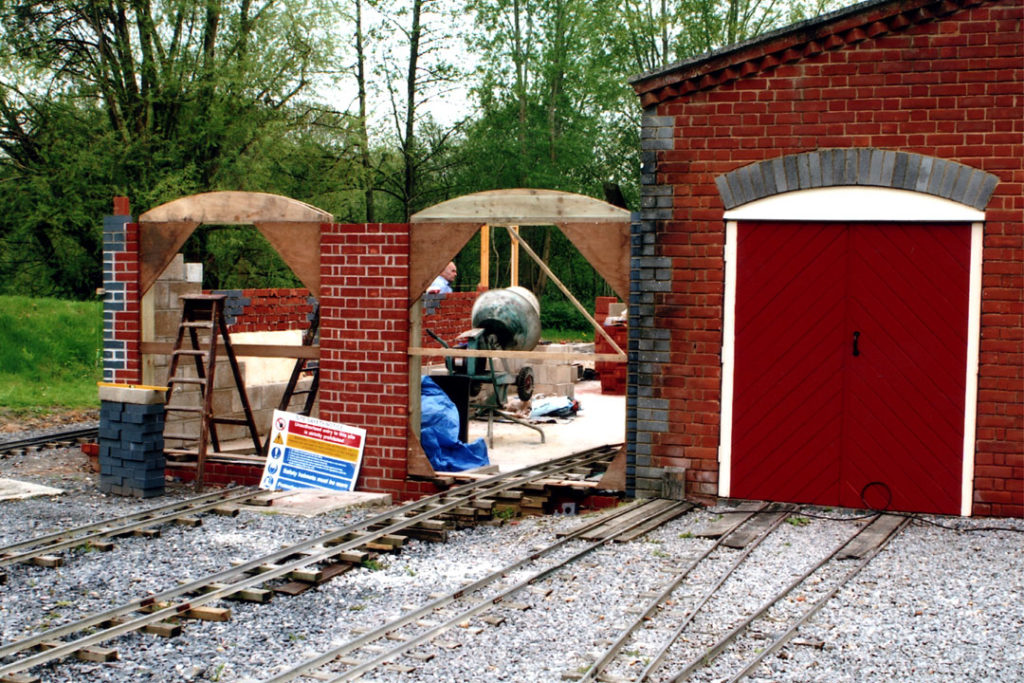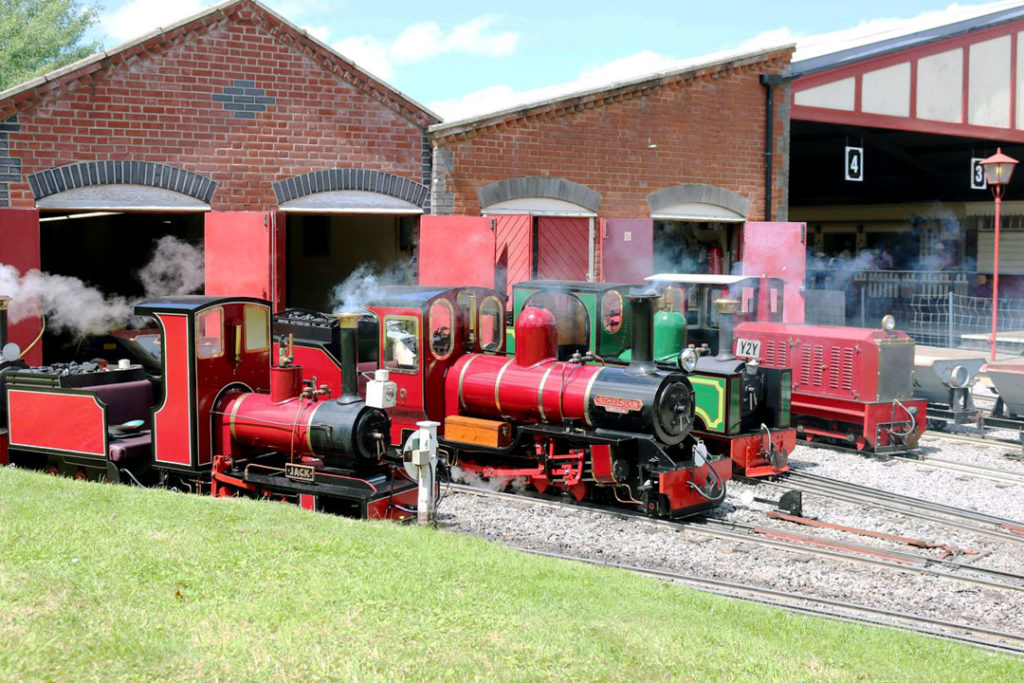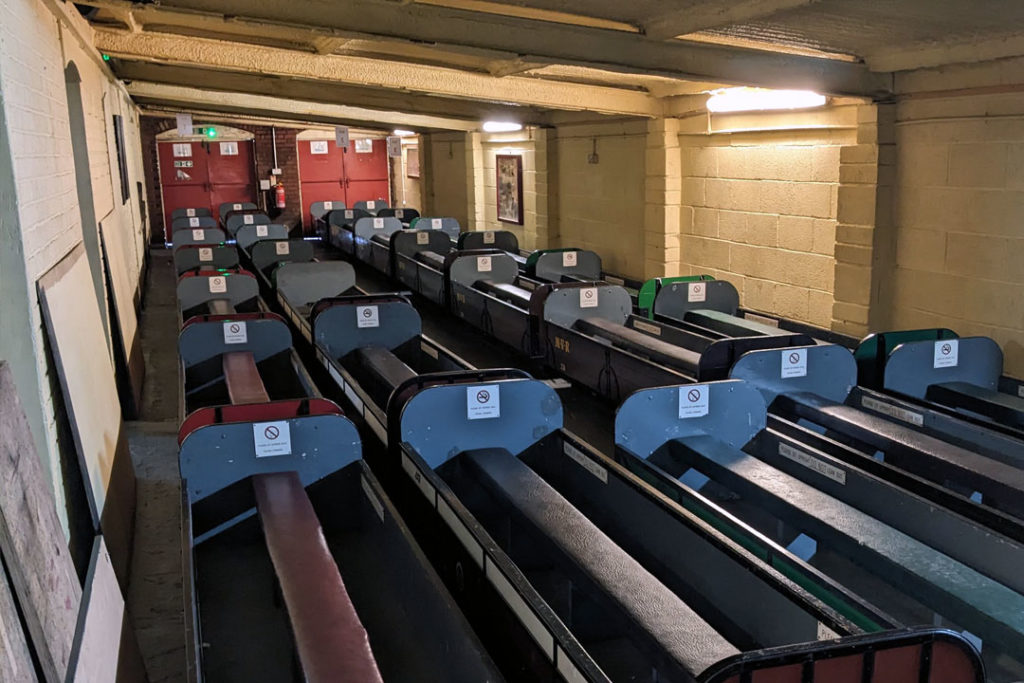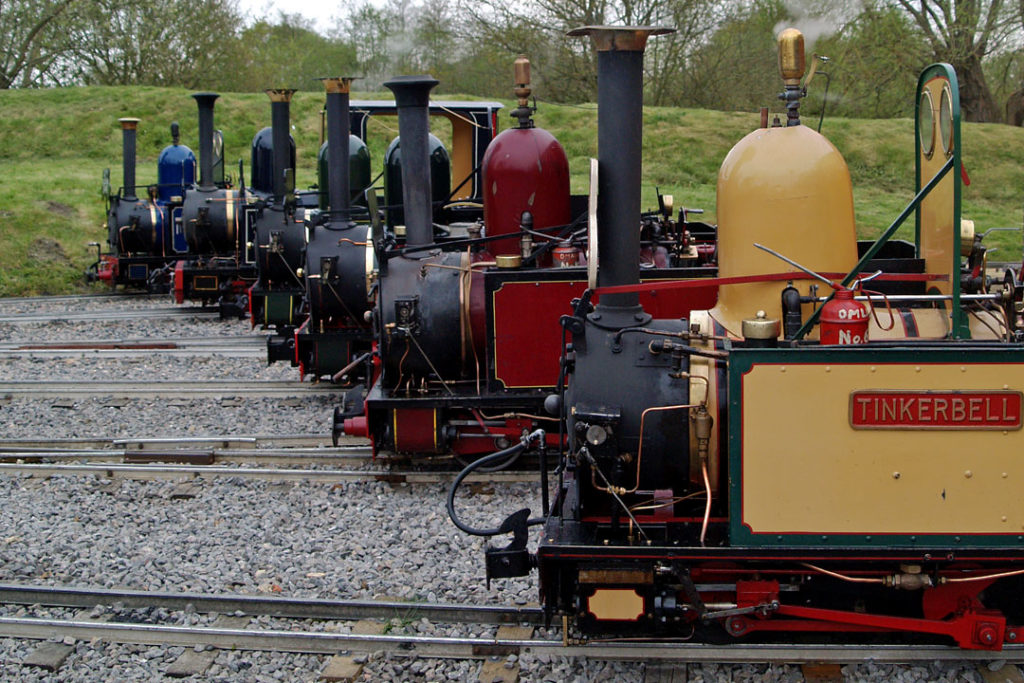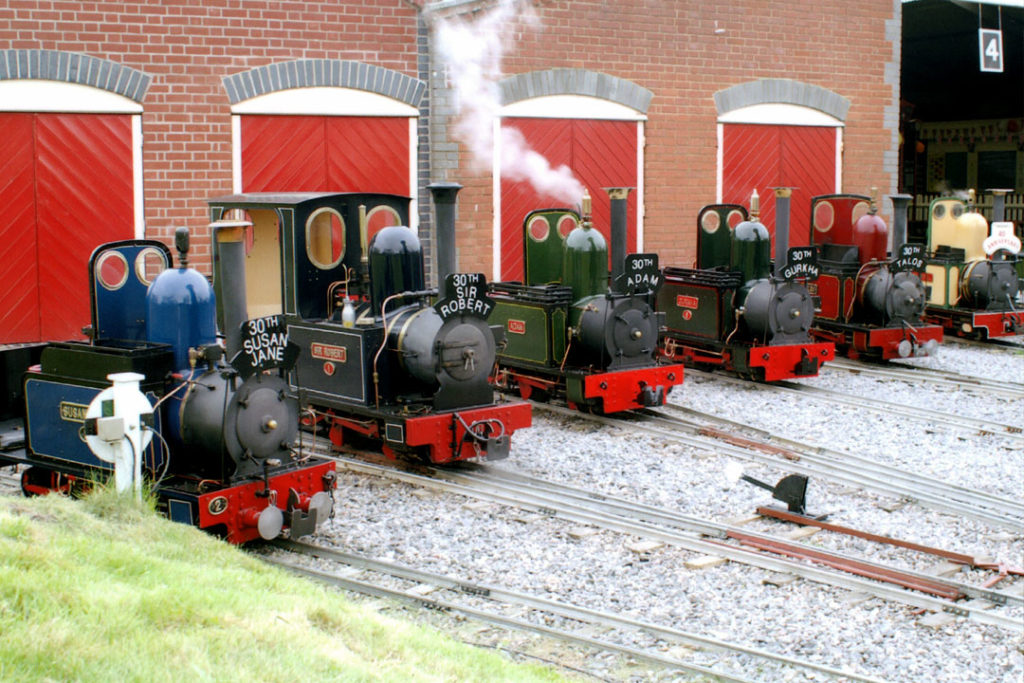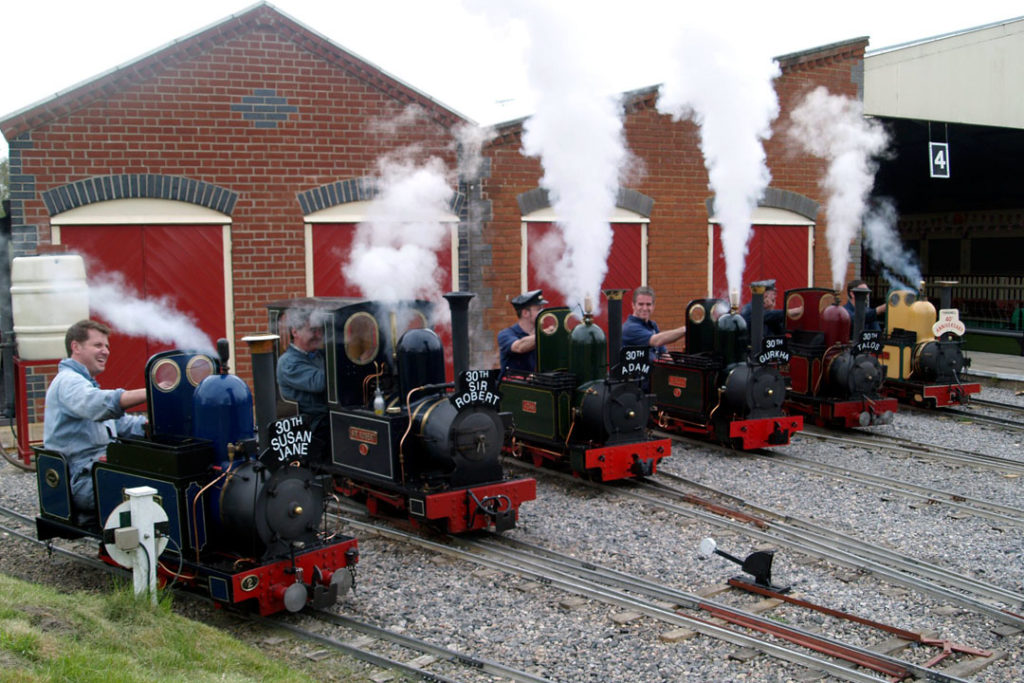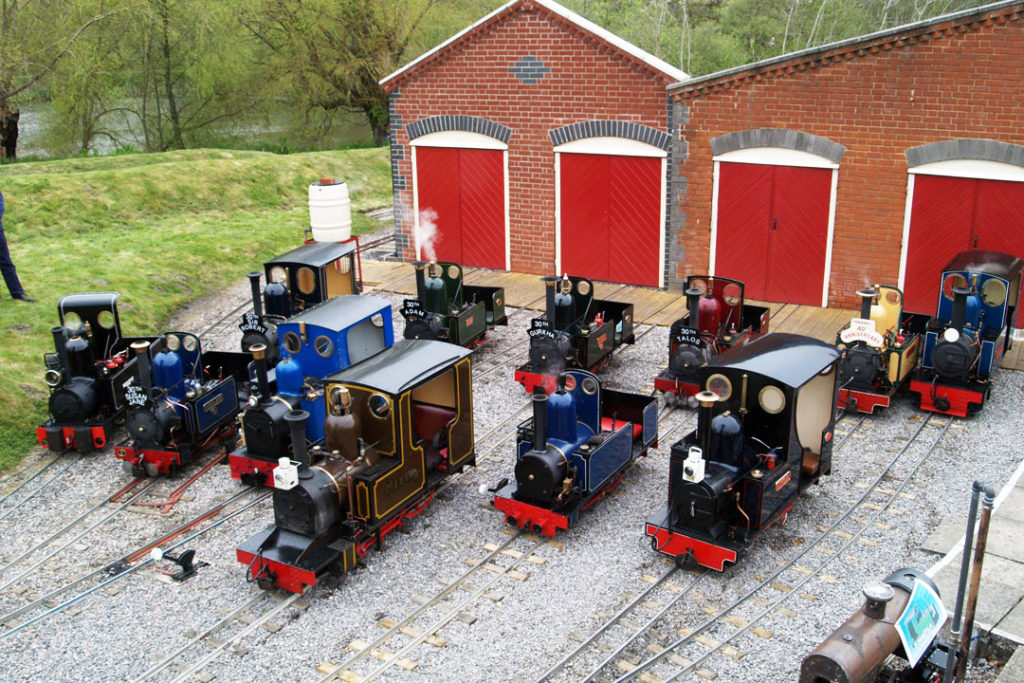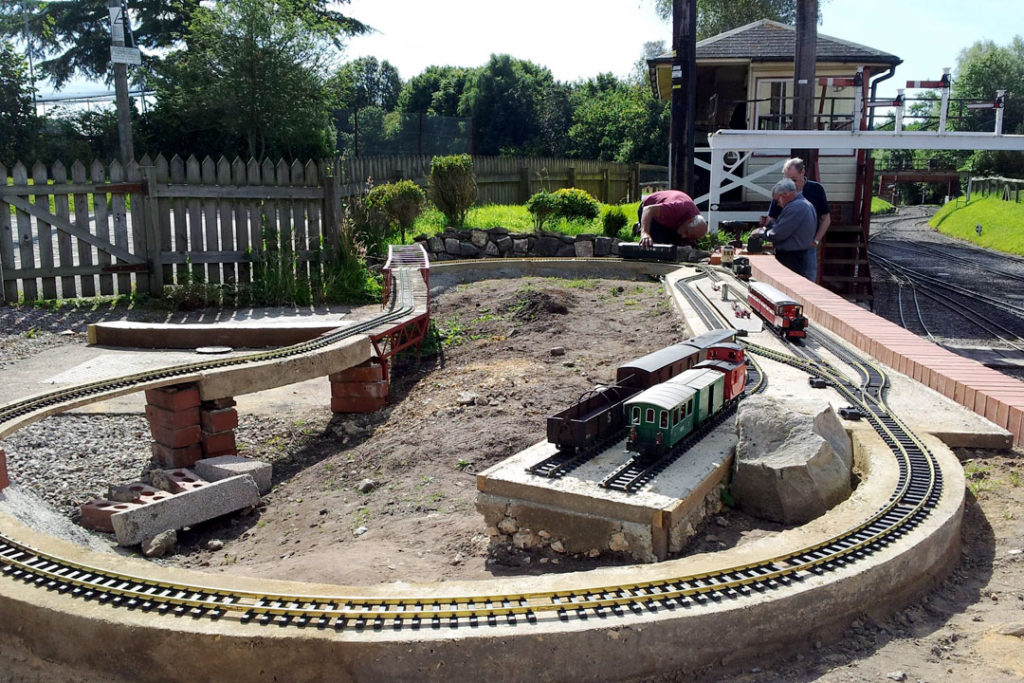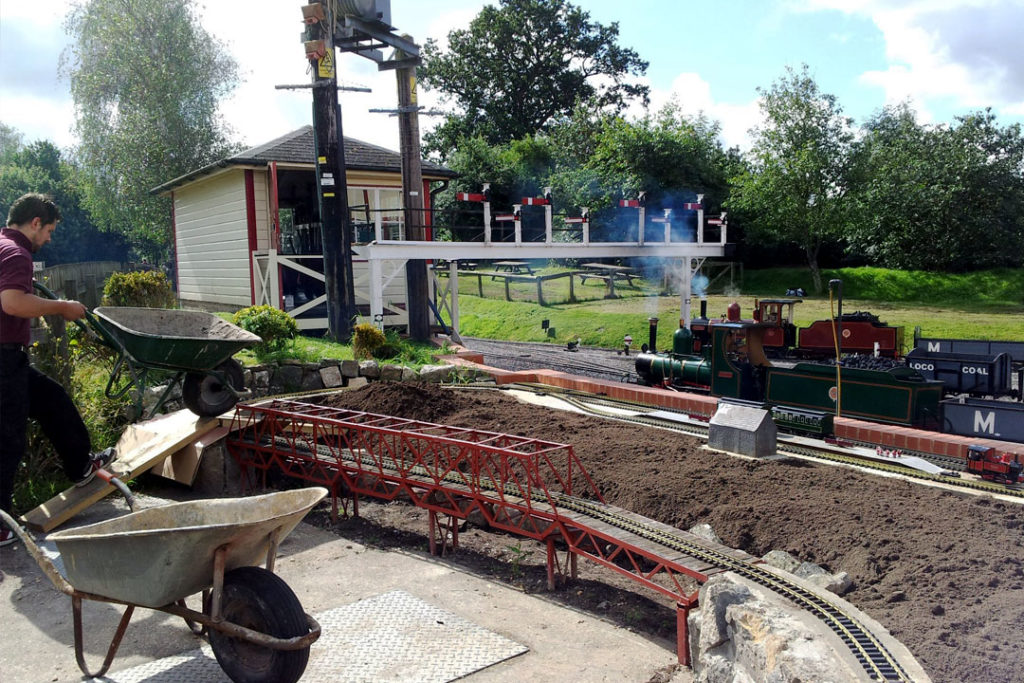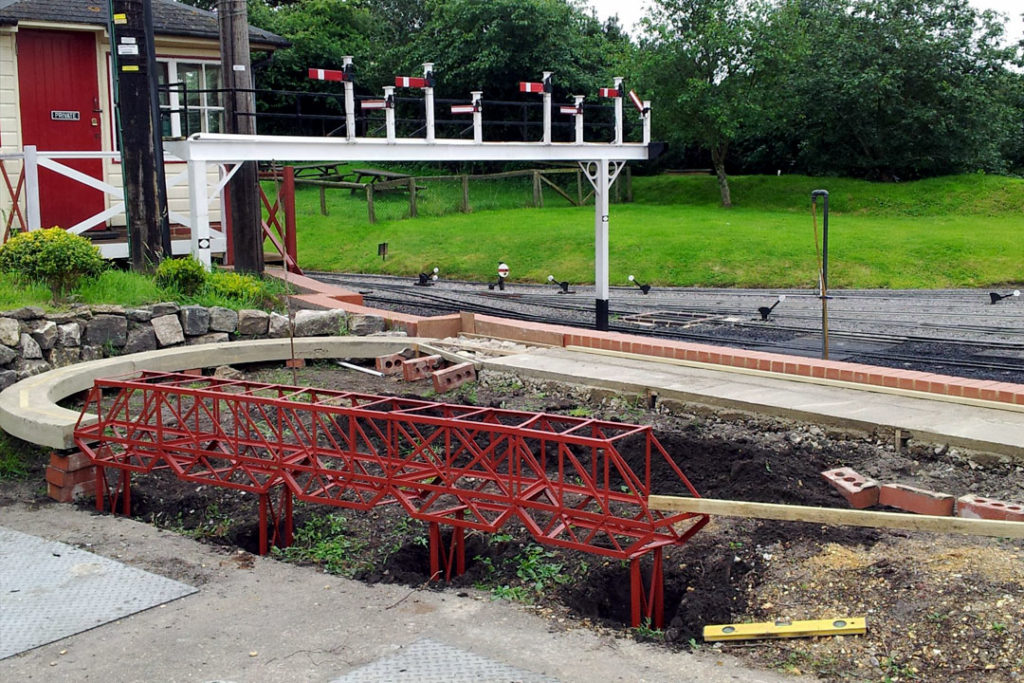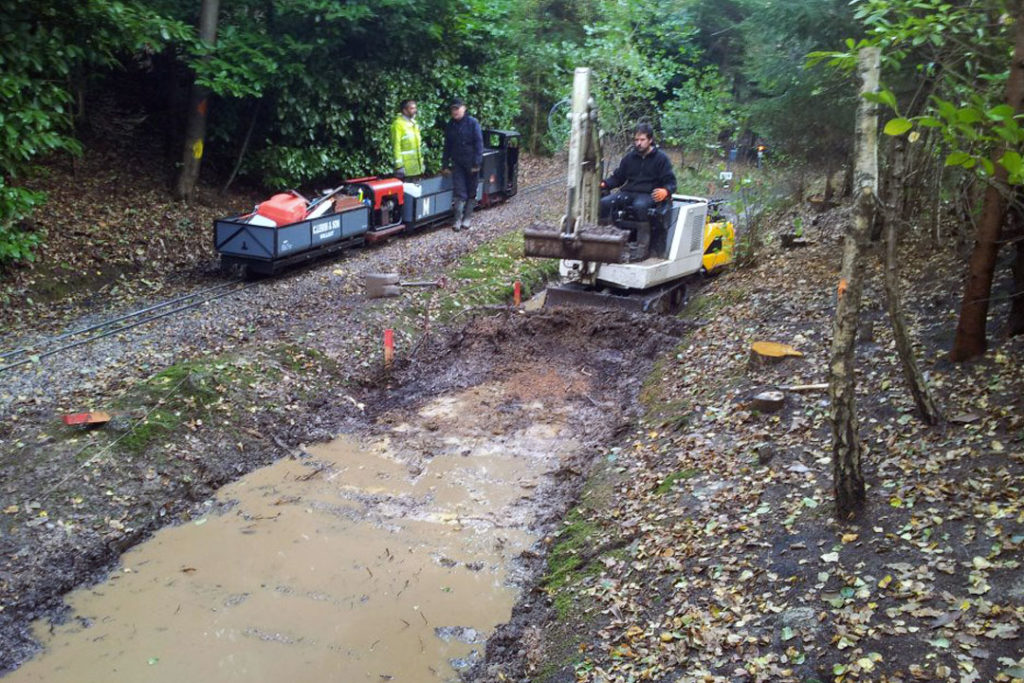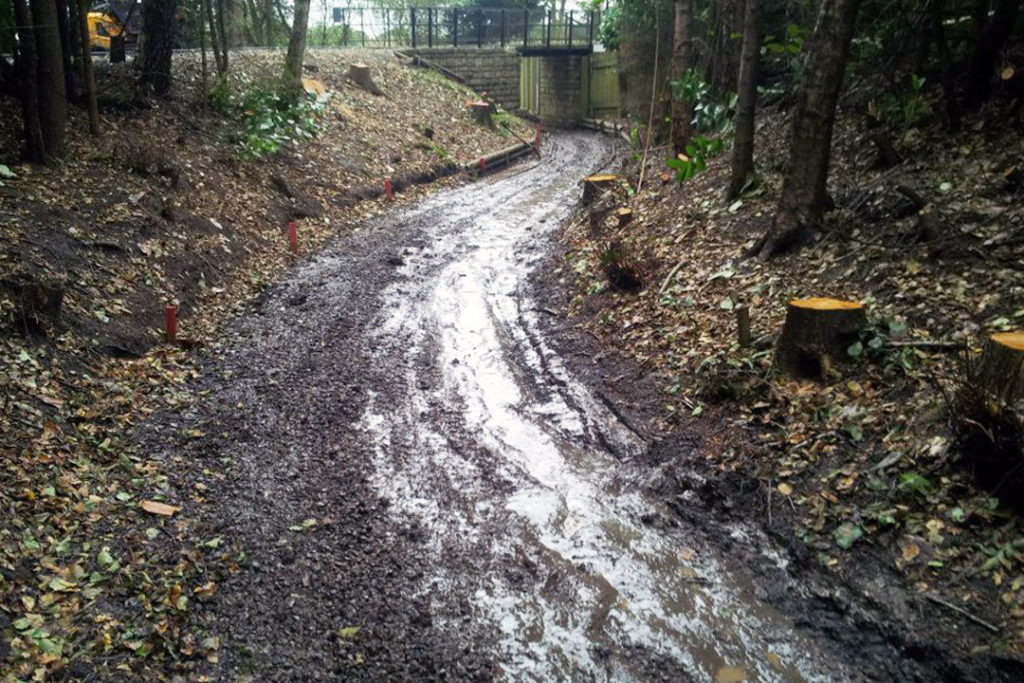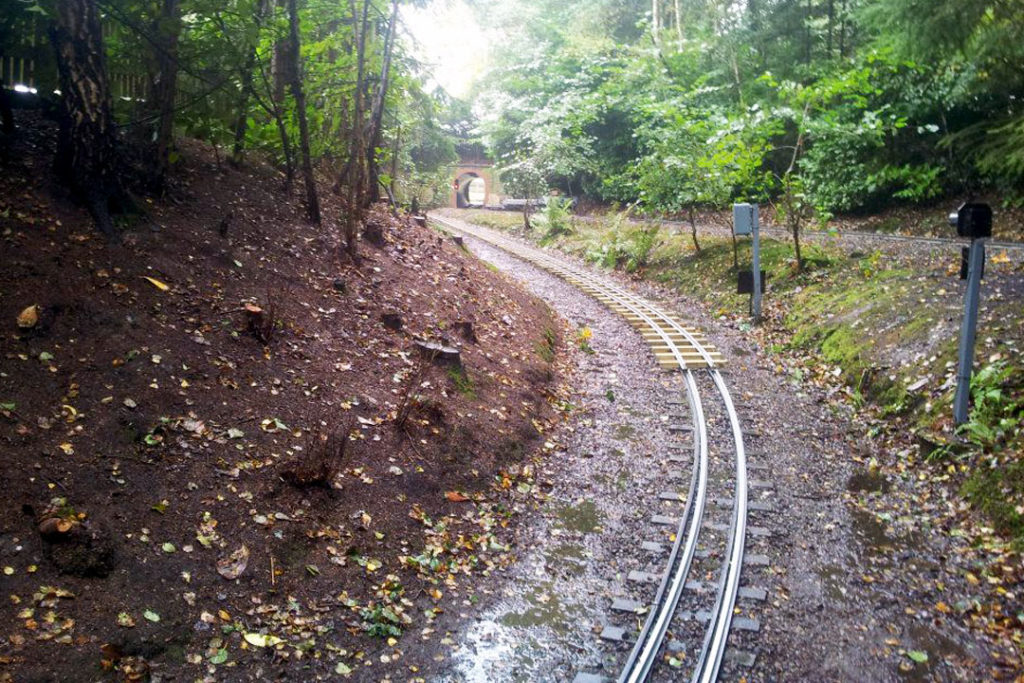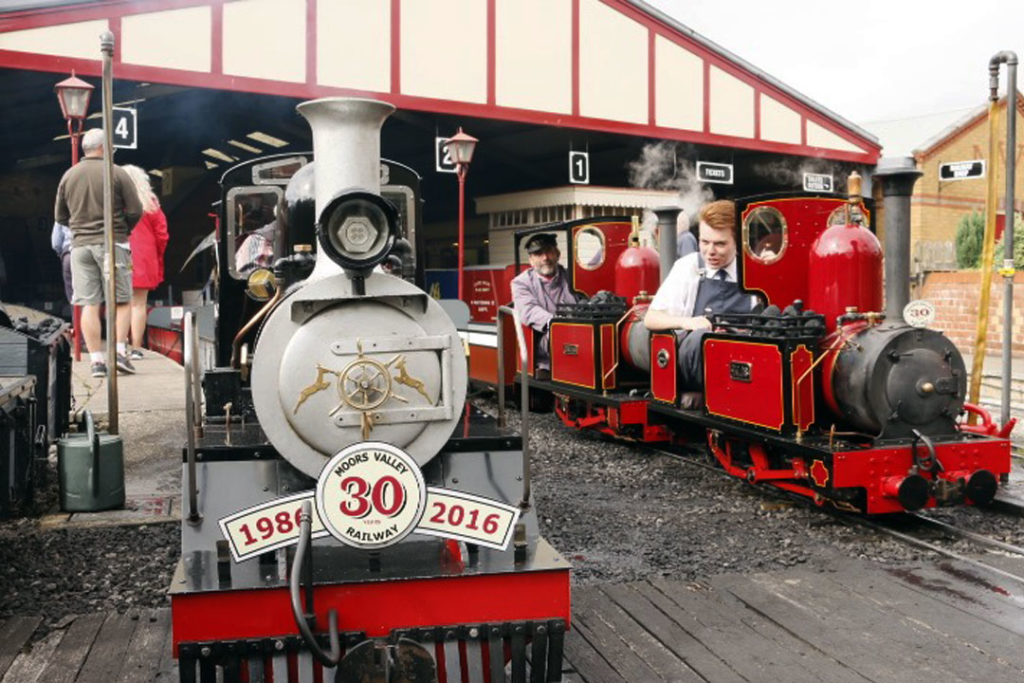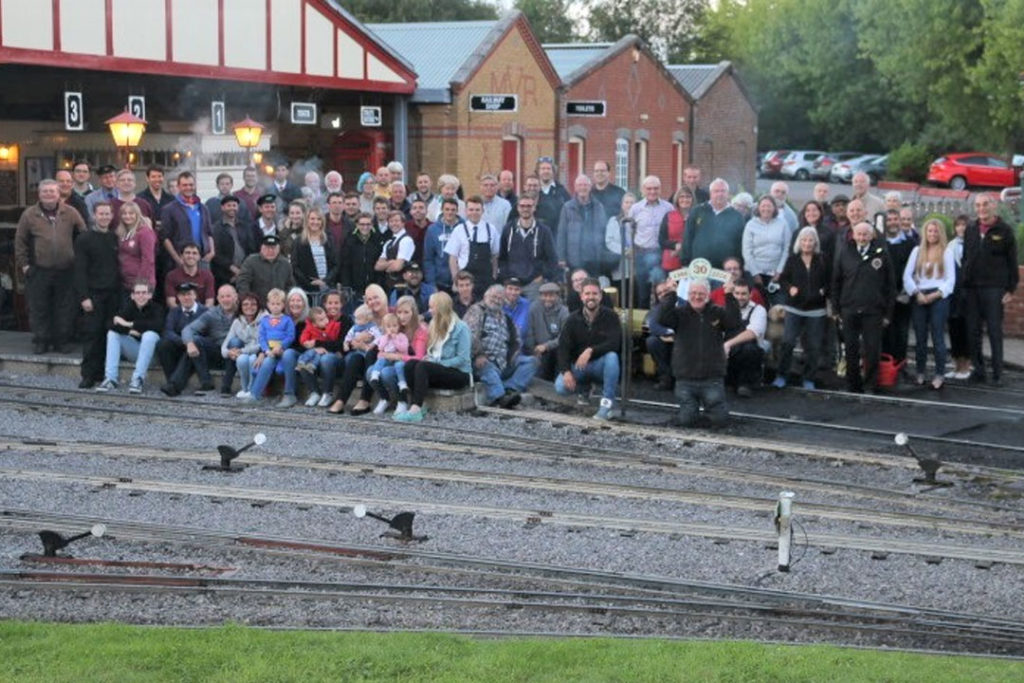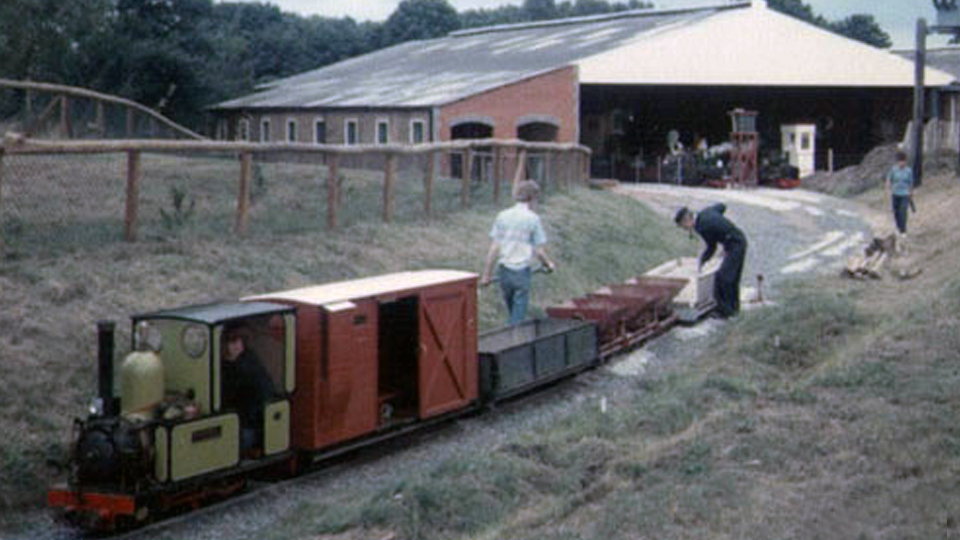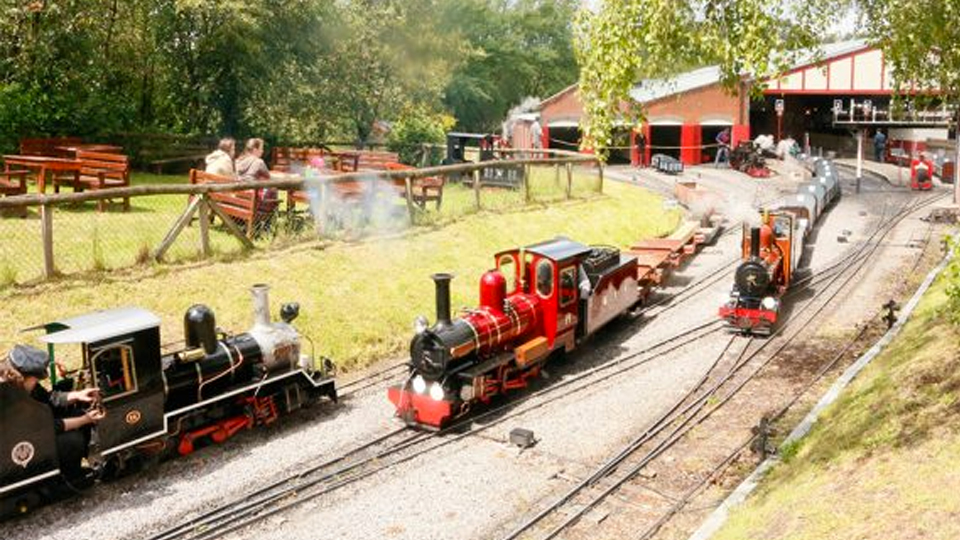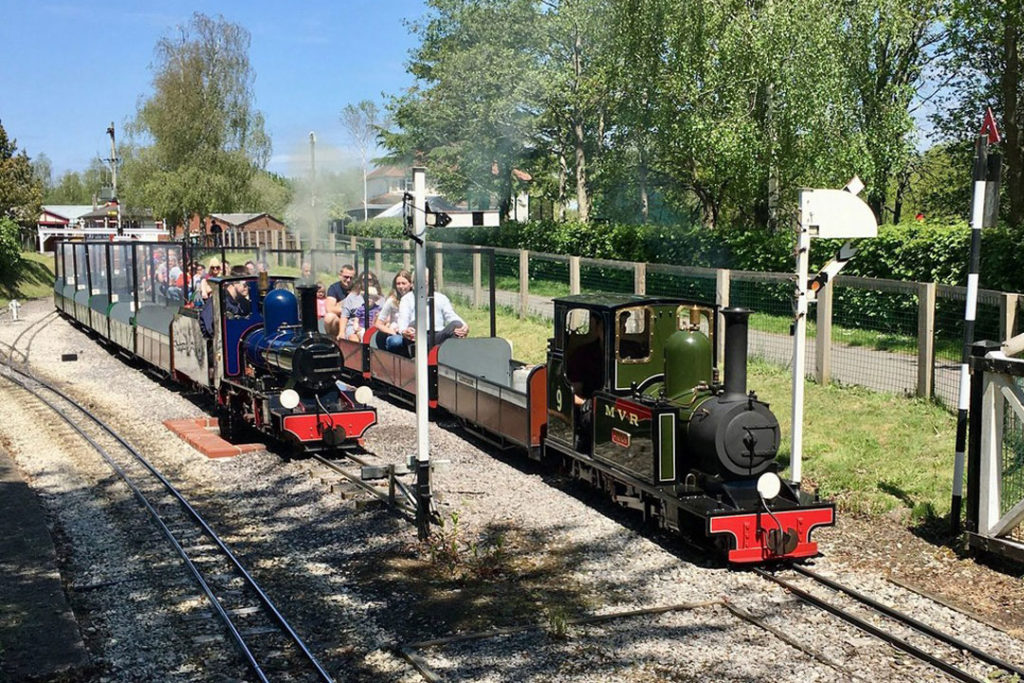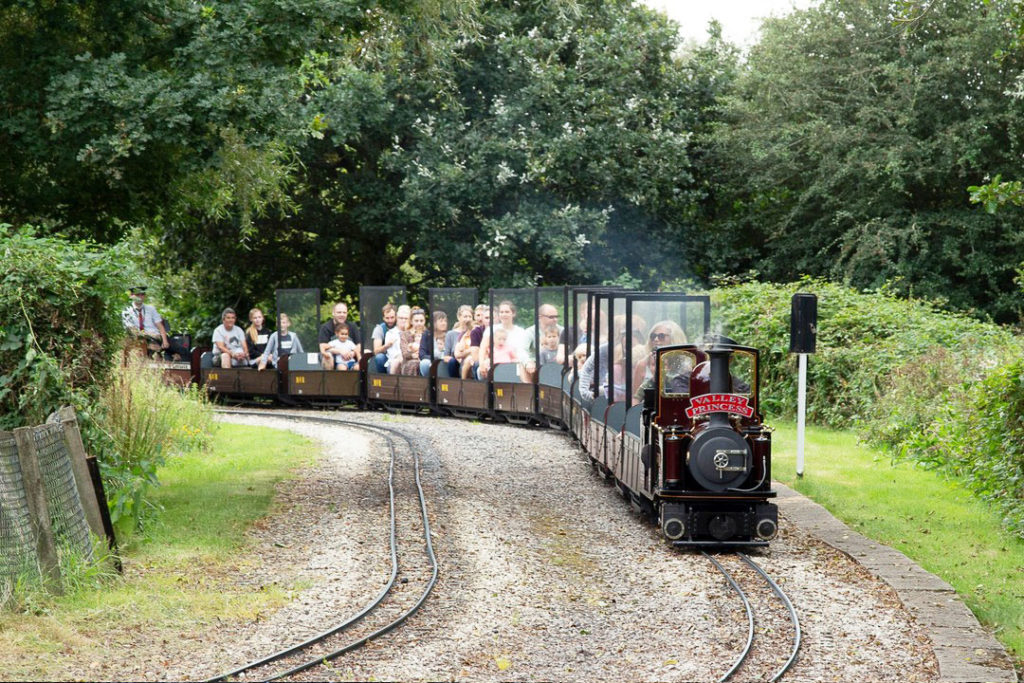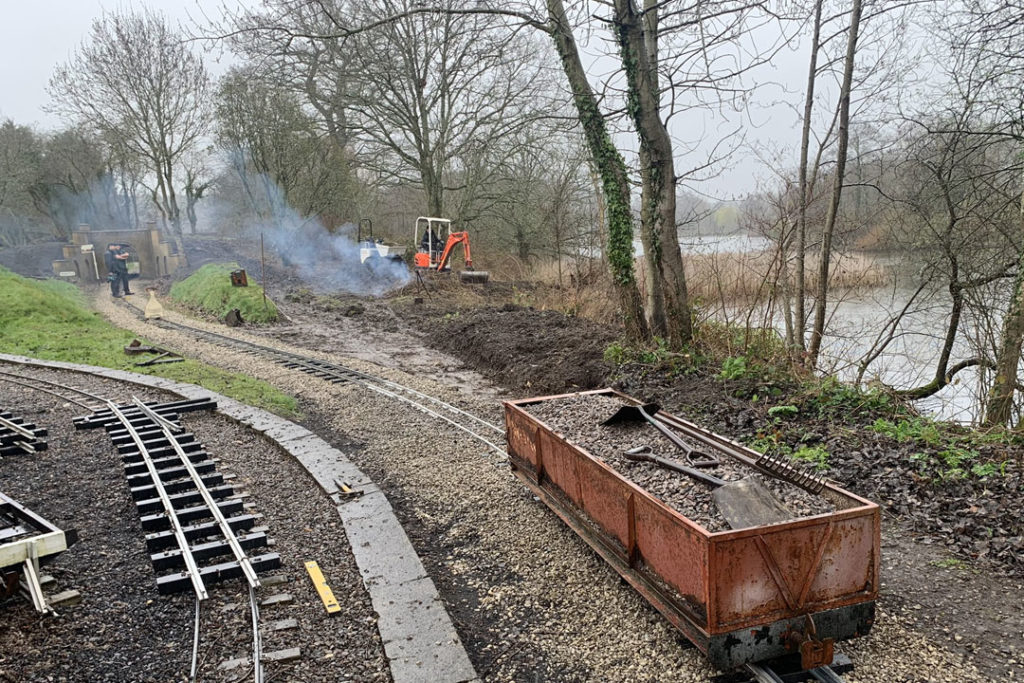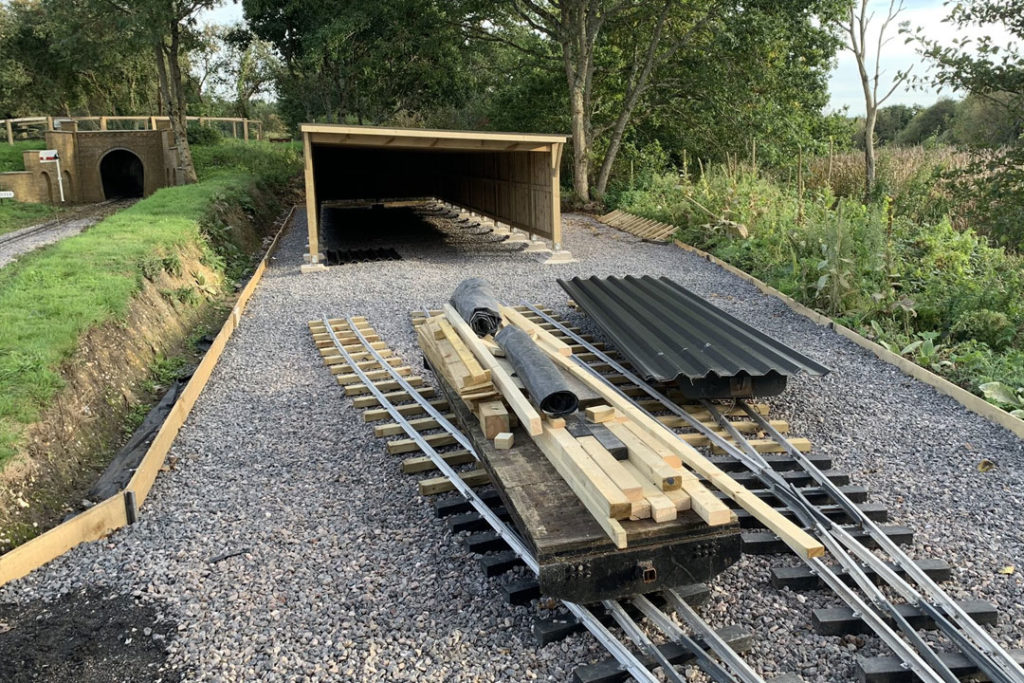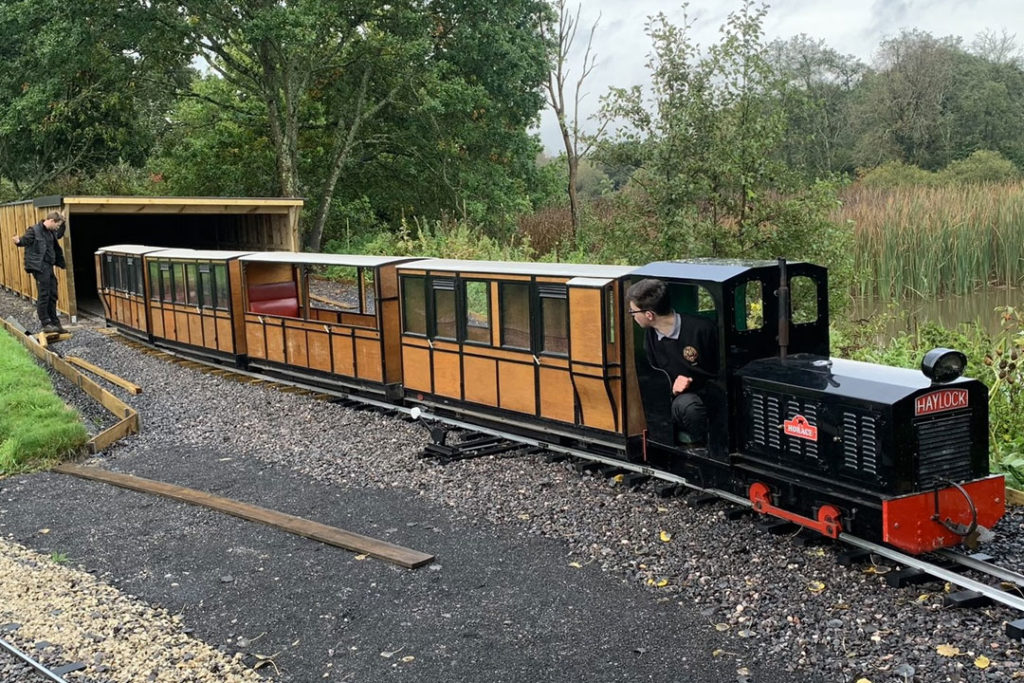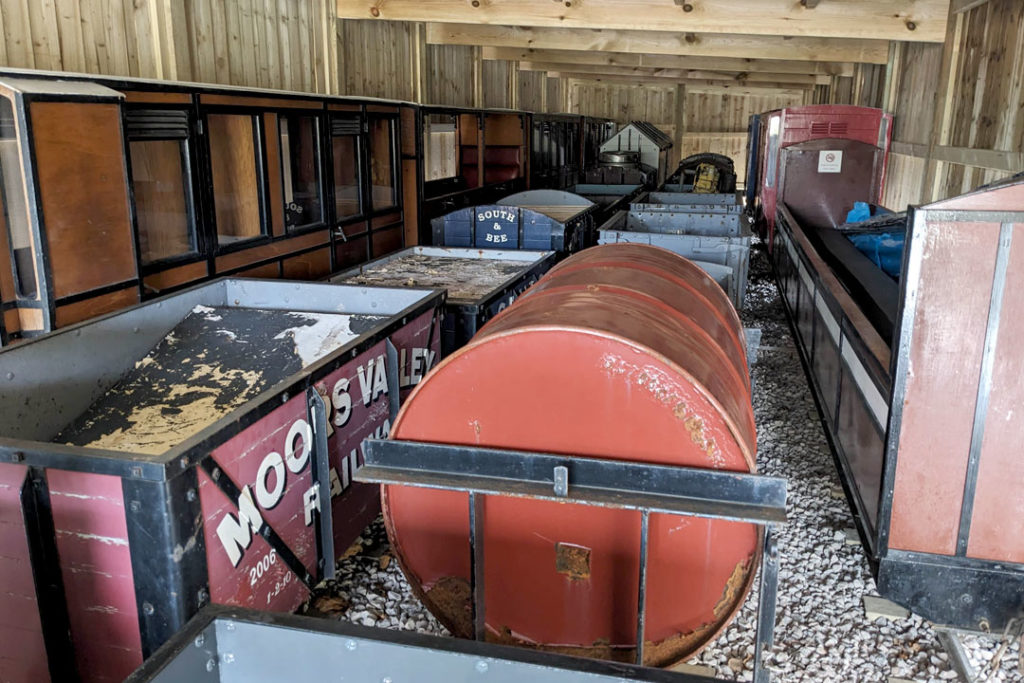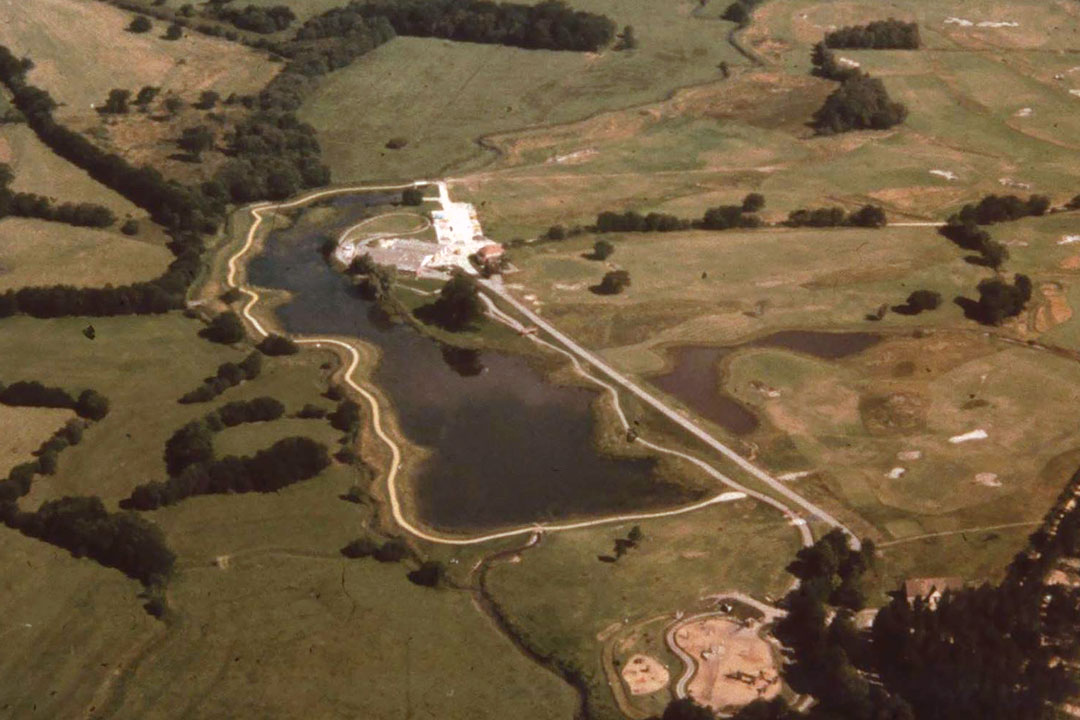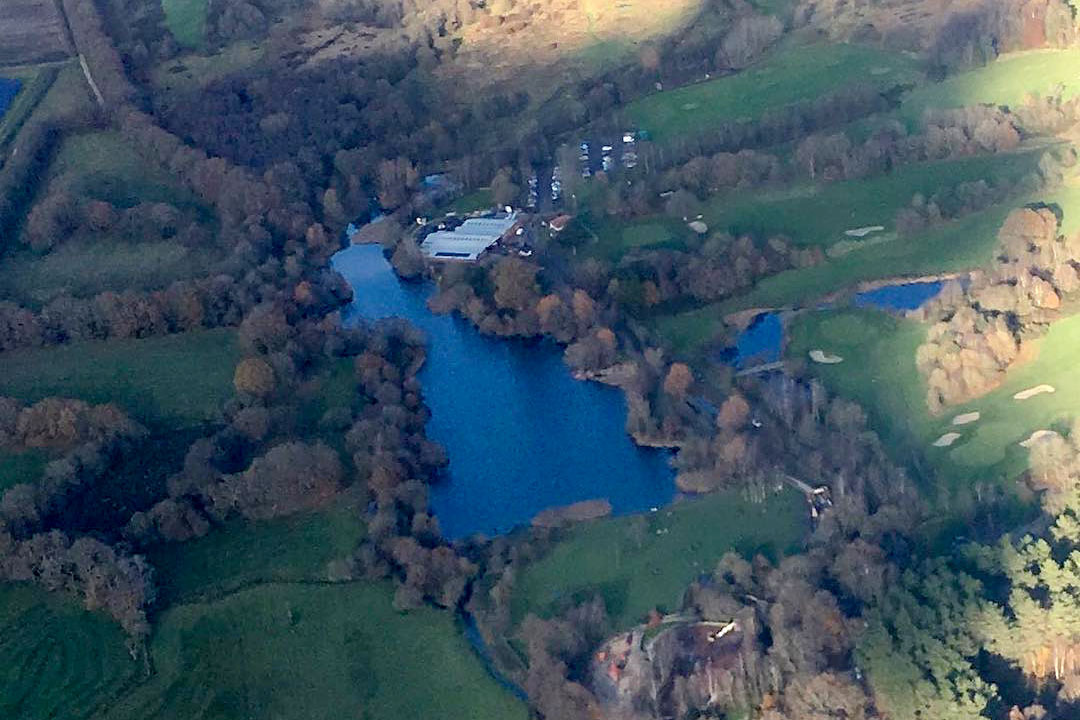1940’s – 1970’s
Jim Haylock, founder of Moors Valley Railway, was born in 1943 and with family living close to the Romney Hythe & Dymchurch Railway in Kent, it was inevitable that a young Jim would develop a love for railways and steam in particular.
In the early 1970’s, following a visit to Cromar White Railways – suppliers of miniature railway equipment, Jim started building a set of sit-in covered coaches and built a 7 1/4″ gauge railway in his own back garden. He went on to form his own company, Narogauge, to start selling these coaches. You can still see these coaches in operation today during special event days.
Moors Valley Railway founder, Jim Haylock
1978
Having fallen in love with the original Tinkerbell steam locomotive after seeing it running at Malden and District Society of Model Engineers, Jim decided he wanted to have his own steam locomotive. In 1978, following discussions with Roger Marsh, Jim purchased the original Tinkerbell along with a new-build “Tinkerbell class” loco which Jim named Talos.
Jim tested these at Malden and even on the short railway in his back garden. Not content with this however, Jim decided that after a 20-year career in the carpet and upholstery business, the time was right to set up his own railway.
Tinkerbell and a brand new Talos
1980 – 1985
In 1980, he found a suitable site at the Tucktonia Theme Park in Christchurch and created the Tuckton Railway. Tucktonia was a giant model village which also featured several other amusement attractions and originally had a short 10¼″ gauge railway.
The Tuckton Railway was soon converted from its original 10¼ gauge to 7¼″, as well as being doubled in length with a new loop around the overflow car park. This was the forerunner of the railway we know and love today.
It was soon realised additional and more powerful locomotives would be required to help Tinkerbell and Talos run the railway, and a new locomotive building programme was started. Sir Goss, Medea, Sapper and Aelfred were all built to run on the Tuckton Railway.
After 5 years, Jim decided he needed to move the railway to a better location and heard that the council was creating a new country park to be called Moors Valley. After changing hands several times, Tucktonia eventually closed in 1986, replaced by retirement housing.
Tucktonia was best known for its large model village layout which included a representation of London.
1985
The original concept for the railway at Moors Valley included a station to serve the new children’s play area, a large girder bridge over part of the newly constructed lake, as well as the main station and workshops at the newly created Kingsmere Station.
Prior to being purchased by Dorset Council, Moors Valley was a dairy farm called Kings Farm, and the original farm buildings were ideal to use for the main station. Cattle stalls were altered to accommodate a carriage shed, engine shed and shop, and the milking parlour was transformed into the workshop. A skin of brickwork was laid across the front of the buildings in a traditional railway style.
King’s Farm being transformed into Moors Valley Railway 1.
Following the move from Tucktonia, work started in earnest to construct the new railway. Major earthworks were completed, including four tunnels created from cast concrete sewer pipes, cuttings, embankments, and even a railway bridge to carry the line over itself close to the new play area. In total, the line was to be one mile in length, with the first ¾ mile phase completed ready for opening day
King’s Farm being transformed into Moors Valley Railway 2.
1986
The railway opened on 26th July 1986 with a single-track connection to what later became Lakeside Station, and the first loop of the spiral around the children’s play area. Kings Junction was the start of the single line, and a token system was operated to ensure only one train occupied the line at any one time. Initially all trains ran from Kingsmere station only on an out and back circuit up Tinkerbell Hill and back through Moors Tunnel.
King’s Farm being transformed into Moors Valley Railway 3.
The honour of pulling the first official passenger train over the new line was given to Sapper, the largest engine on the railway at the time of opening. The driver was one very happy Jim Haylock, the owner of the railway. Later at the 30th Anniversary of the railway, Sapper, once again driven by Jim Haylock, would be used to re-create that original first train.
King’s Junction Then and Now.
King’s Farm being transformed into Moors Valley Railway 4.
1987
The railway proved its popularity in the newly opened country park and was soon extended to its full 1-mile length, with a loop around the new children’s play area to what became known as Woolsbridge End.
King’s Farm being transformed into Moors Valley Railway 5.
1988
The original concept for the railway had been to include all elements to be found on the national railway network, so the priority was a fully operational signalling system.
Kingsmere East Signal Box was completed in 1988 and was built around a twenty-eight lever Stevens frame from Beckton Gas Works in London, and this controlled a mixture of semaphore and colour light signals around the line. On normal running days, the signalling system is automatic, enabling the railway to run without a signalman present.
Level crossings with gates were added, including a gate keeper’s cottage at what is now Lakeside Station.
1988 – 1991
Just as at Tucktonia, Jim soon realised larger and more powerful locomotives would be required to cope with the ever-increasing passenger numbers. Jason was built in 1988, followed by Offa and Zeus in 1991.
Developments also continued at Kingsmere Station with a new waiting room, ticket office and refreshments counter being added. A second signal box, a replica Great Western Railway box, was installed to control access to and from the yard and became Kingsmere West Signal Box.
The main ride around the full length of the line was ticketed as Kingsmere to Woolsbridge End return, but the opening of Lakeside Station – initially a small platform – saw the railway offer a shuttle service to Kingsmere.
A mid-day special service was also introduced. Running every Sunday at noon, it included non-stop double run of the line, going both directions around the loops in both directons.
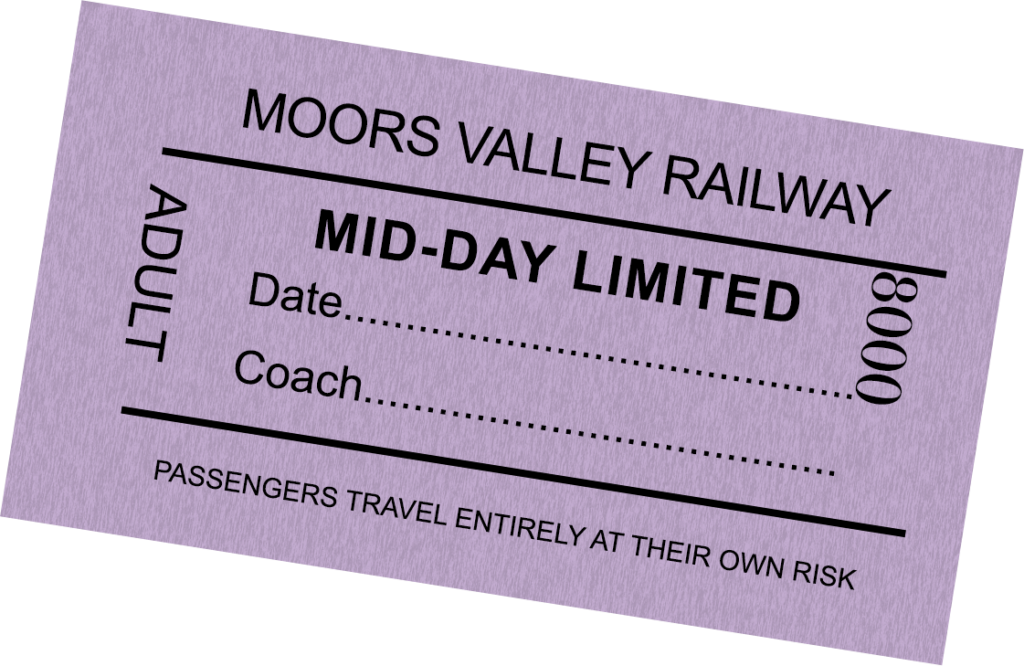
1995 – 1996
Plans were created to improve the line and increase capacity by doubling the main line between Kingsmere and Lakeside, and creating a new larger passenger station at Lakeside.
In the winter of 1995-6, Lakeside platform was rebuilt to include the main line platform, so that all trains stop at Lakeside, giving passengers a choice of return or single journeys. Today, due to its proximity to the visitor centre, play areas and main picnic area, Lakeside is the busier of the two stations.
In order to promote the railway to a wider audience, Moors Valley Railway On Tour was developed to take a small portable track around to local events. Trains were steam hauled by Tiny Tim, a small Romulus style locomotive that could be easily transported. Tinkerbell and Sir Goss were also used on the portable railway at such events as the Great Dorset Steam Fair.
More new locomotive building followed with Horton, Pioneer and William Rufus appearing around this time. This was supported by a programme of new carriage building, and train lengths were increased up to the full thirteen coaches we see today.
The railway has always been well supported by a team of volunteers and this resulted in several new projects coming to fruition. 1999 saw the completion of the privately owned Hartfield and Robert Snooks locomotives, as well as a large fleet of privately owned goods wagons featuring puns on the names of some of the railway staff and volunteers.
These were followed in the early 2000’s by Perseus, Thor and Athlestan, all privately owned but constructed in the railway workshop.
